














































































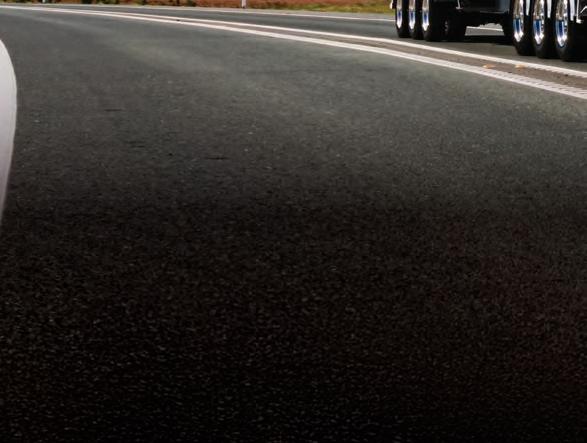
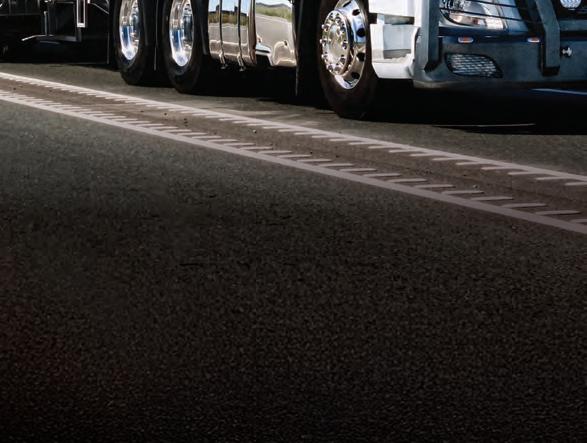














Introducing G® Lubricant, the cutting-edge graphene-based additive transforming the diesel and gasoline engine industry. Verified by the prestigious University of Queensland, this revolutionary lubricant delivers up to 8.4% fuel savings under high-load conditions, offering optimised performance and cost efficiency.


• Exceptional Fuel Savings: Achieve up to 8.4% improvement in fuel efficiency, even under demanding conditions.
• Minimal Concentration, Maximum Impact: Just 1:10,000 graphene-to-engine-oil ratio ensures safety and compatibility with any internal combustion engine and Group I,II,III and IV engine oil, not suitable for Group V oils. Suggest use in engines out of warranty.
• Proven Results: Backed by four years of advanced testing.
ceptional mal roven co-Friendly

Graphene, a carbon wonder material known for its strength and low friction properties, enhances lubrication at a molecular level. When added to your engine oil, it reduces internal friction especially around the pistons, optimizing performance and fuel economy without compromising engine integrity.

• Eco-Friendly Solution: Reduce fuel consumption and emissions while saving money.



BE PART OF THE
Don’t get left behind in the race for efficiency. Upgrade your engine oil with G® Lubricant today and experience the graphene revolution firsthand!



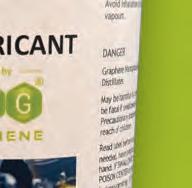
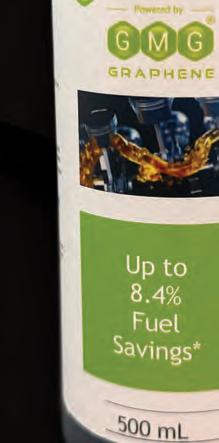



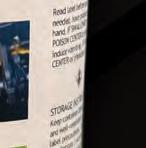



er Drivers looking to save fuel costs











omotive enthusiasts seeking peak engine performance.
• Industrial operators aiming for sustainable energy savings.
KEY ADVANTAGES
• Significant cost savings.
• Improved Fuel Efficiency & Performance
• Safe for all diesel and petrol engines - suggest use in engines out of warranty.


Order now and join the global movement toward smarter, greener, and more cost-effective engine solutions.






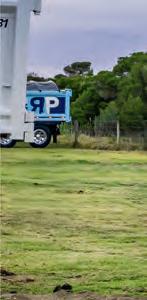










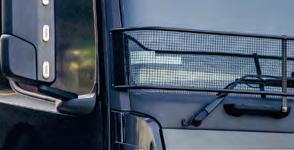
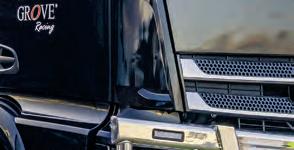
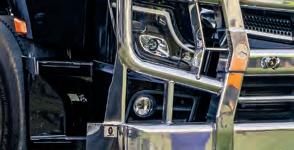






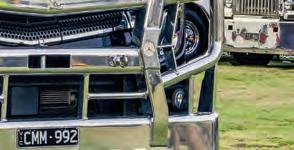



Inside the latest funding and safety upgrades for Australian roads
18


It’s been just under a year since the federal government decided to phase out live sheep exports by sea, but the issues remain ongoing for the local industry



Over the past six years, the HVNL review has gripped the industry. Sean Mortell looks at the industry’s fight for improvements to transport regulation

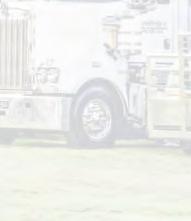

Laurie Williams is a well-known industry name, but Warren Aitken found out his latest ‘retirement role’ is an incredibly impressive Western Star tow truck
44

After being convinced by friends to start a trucking company, the secret to Channi Dhillon’s success at JAAP Transport is the latest range of DAF trucks he’s adding to his growing fleet
46
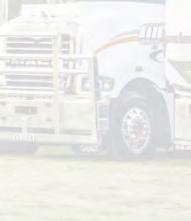

After building a business around its LoadSMART on-board mass product, Integrated Vehicle Solutions is preparing to unveil two new products at the Brisbane Truck Show
48
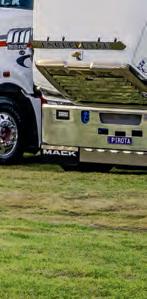

Warren Aitken braved the elements in south-east Melbourne earlier this year as he took on the raininterrupted Tooradin Tractor Pull and Truck Show
54
While in Melbourne, Warren Aitken caught up with Sharna Chapman and discovered her tough but rewarding life in the transport sector
Check out the leaders from February’s truck sales data








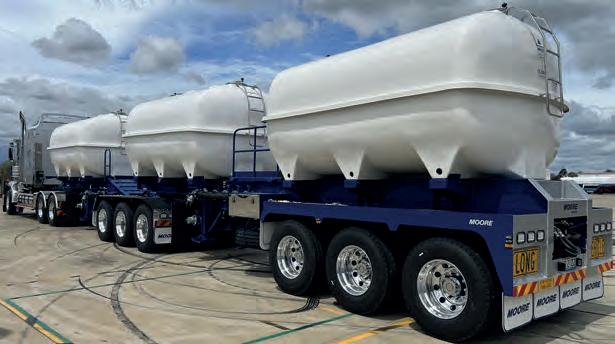




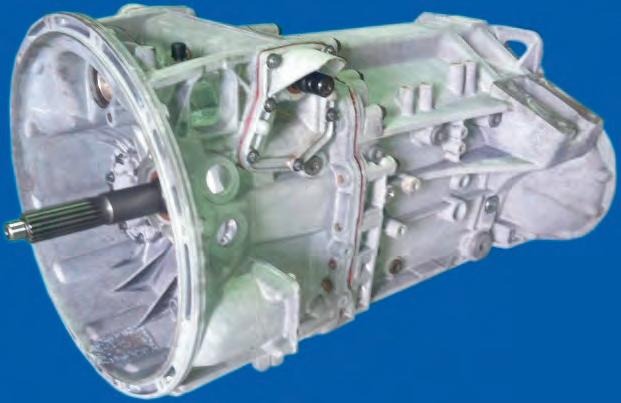
ReconditionedMercedes-BenzTransmissions. MostMakesandModelsG100,G131,GO210, G240,G280,G330available.S3. TA431566. POA
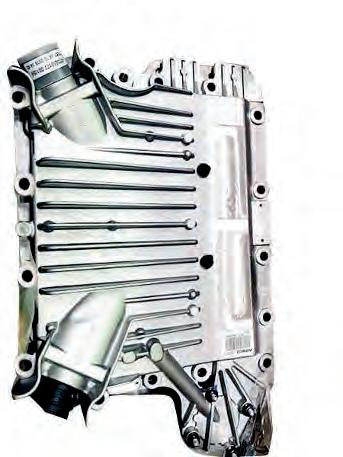
Unit 1/71 Axis Place, Larapinta, Brisbane, QLD, 4110, Australia
Ph: (07) 3276 9300 Fax: (07) 3276 9301
Email: sales@ggd.net.au davids@ggd.net.au
Ph: (07) 3276 9300 Fax: (07) 3276 9301 Email: mattc@gibbsparts.com davids@gibbsparts.com Web: www.gibbsparts.com
Web: www.gibbsparts.com

ZFEcolitepowerpacks.S40. TA952390.
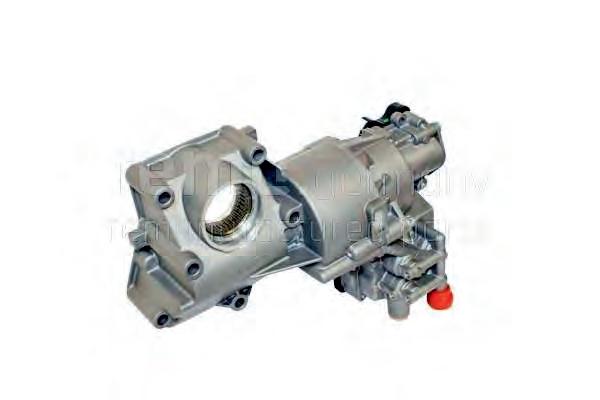
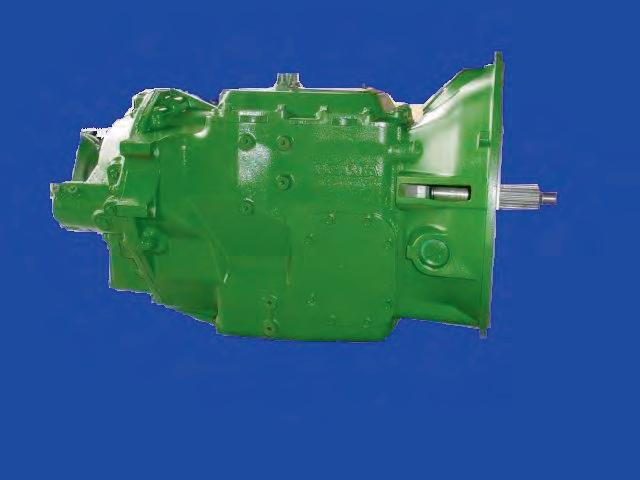
Allmakesandmodelsavailable.S11. TA431615. POA


VOLVO/MACKI-SHIFT/M-DRIVE AT2512C,AT2612D&ATO3112D. S44. TA952399. POA ZFTRANSMISSIONSALLMODELS Allmakesandmodelsavailable.S10. TA431606. POA

EDITORIAL
Editor Sean Mortell
E-mail Sean.Mortell@primecreative.com.au
Journalist Tiarna Condren
E-mail Tiarna.Condren@primecreative.com.au
Contributors Warren Aitken, Frank Black, Sarah Marinovic, Rod Hannifey, Michael Kaine, Glyn Castanelli, Robert Bell, Geoff Crockett
Cartoonist John Allison
PRODUCTION
Art Director Bea Barthelson
Print IVE Print
ADVERTISING
Business Development Manager
Tosan Popo Ph 0481 260 352
E-mail Tosan.Popo@primecreative.com.au
SUBSCRIPTIONS
www.ownerdriver.com.au/subscribe
Phone +61 (0)3 9690 8766
Mon-Fri 8am-4.30pm (EST)
Email subscriptions@primecreative.com.au
Mail 379 Docklands Drive, Docklands, VIC 3008 Australia
EXECUTIVE GROUP
CEO John Murphy
COO Christine Clancy
Publisher Sarah Baker
Operations Manager Regina Fellner
Sales Manager – South Danny Hernandez



With the Brisbane Truck Show on the industry’s doorstep, this edition of OwnerDriver has plenty of previews of the event, as well as some major features on the industry’s big issues
We’re just over a month away from the Brisbane Truck Show – the Australian trucking industry’s largest event. With it comes a golden opportunity for OEMs to showcase their latest models, for suppliers to open the doors and reveal their newest technology, and for many a visitor to get their steps up while marvelling at all of these products in front of them.
For many in the industry, the mid-May show may be very quickly approaching – no longer is the event just on the horizon, it’s getting more visible by the week. While time flies, a variety of suppliers, manufacturers and distributors have been putting in the hard yards to ensure their latest arrivals will be in Brisbane and sparkling on their stands. It’s this dedication that makes the show such a major event.
The previews start from page 42 with Brisbane IVECO, as the entire IVECO brand enters Brisbane on the brink of a milestone. 2025 marks a special anniversary for the global manufacturer, as the Australian arm of IVECO heads into the celebrations with some of its latest technology at the ready. Check out Integrated Vehicle Solutions’ newest products that it has developed for the local industry from page 46 onwards, while Isuzu is revelling in a variety of plumbing trucks that are completing diverse tasks each day around Australia on page 52.
Owner Driver is published by
379 Docklands Drive, Docklands Melbourne VIC 3008
Telephone: (+61) 03 9690 8766
www.primecreative.com.au
ISSN 1321-6279
OwnerDriver magazine is owned by Prime Creative Media. All material in OwnerDriver is copyright and no part may be reproduced or copied in any form or by any means (graphic, electronic or mechanical including information and retrieval systems) without written permission of the publisher. The Editor welcomes contributions but reserves the right to accept or reject any material. While every effort has been made to ensure the accuracy of information Prime Creative Media will not accept responsibility for errors or omissions or for any consequences arising from reliance on information published.
Opinions expressed in OwnerDriver are not necessarily the opinions of, or endorsed by the publisher unless otherwise stated.
In the lead-up to the Brisbane Truck Show, OwnerDriver is getting more involved than ever to give the industry a sneak peak into what they can expect from a mixture of companies. This edition is the start of our extensive coverage of the event, with certain brands giving the lowdown on what they’re looking to do before, during and after the Brisbane show.
April is a special month for Oz Truckers, with the new brand preparing to offer truck drivers around the nation a variety of unique deals and handy discounts from page 58. Following this, Safety Dave is putting its multiple decades of experience to the test with its latest tyre pressure monitoring system on page 60, while Chevron Equipment Finance is preparing a unique space at the Brisbane Truck Show – more can be read on this from page 61.
Surrounding these previews are a variety of features highlighting the latest industry issues facing trucking, as well as some of the best people stories in the game. Ever since it was first announced, the review of the
“Ever since it was first announced, the review of the Heavy Vehicle National Law (HVNL) has been highly controversial, with a range of industry members quickly admonishing the process.”

Heavy Vehicle National Law (HVNL) has been highly controversial, with a range of industry members quickly admonishing the process. From page 22, OwnerDriver chats to more than 10 associations, manufacturers and industry people to get their take on what has caused the delay, while also chatting to the National Transport Commission about the review and what the industry can expect to see when the amendments are officially made. In a separate current issue, the live sheep export by sea phase out decision has gravely impacted the nation’s livestock transport industry since it was first announced by the Albanese government last year. Our feature on the issue from page 18 reveals this is still an ongoing problem for many owner operators across Australia. Alongside some leading event coverage of a wet and wild Tooradin Truck Show and Tractor Pull and a couple of wonderful stories, including our truck of the month courtesy of Warren Aitken, this April edition of OwnerDriver combines the latest news stories with previews and features that underline a productive industry eagerly awaiting its major event in May. We hope you enjoy the read.


Upgrades are coming to freeways and highways across the country while new technology delivers much needed assistance to truckies
The next 12 months could see works finally underway for major highways and freeways, with billions to be promised to the upgrades. The Hume Highway is already undergoing a major facelift while the Western Freeway could soon be joining suit. Also, new technology across the Pacific Motorway tunnel will see truckies no longer having to reverse four kilometres back along the motorway to turn around.
The federal government has announced $1.1 billion funding to make Victoria’s Western Freeway safer and more efficient for heavy vehicle drivers.
The major highway connecting Melbourne to Adelaide sees approximately 86,000 vehicle travel between Melton and Caroline Springs every day. This figure is expected to rise to approximately 113,000 by 2031.
The federal government, in the lead-up to this year’s election, has committed to upgrading the freight route, with the additional $1.1 billion commitment taking the government’s total investment in the Western Freeway corridor to $2.1 billion.
Federal transport and infrastructure minister Catherine King says the freeway is a “critical transport route for passengers and freight” as it links with major freight routes throughout the state including the Midland, Sunraysia, Pyrenees, Henty and Wimmera highways.
“We’re investing in the transport projects that matter most to Victorians, delivering a rail link to Melbourne Airport, fixing our regional and suburban roads and strengthening our busiest freeways,” King says.
“We’re investing $2.1 billion in the Western Freeway corridor, $7 billion in the Melbourne Airport rail link and $1 billion in a suburban road blitz because we care about our cities, our suburbs and our regions.
“The Liberals and Nationals starved Victorians of infrastructure funding over their decade in government, and we won’t let that happen again.”
King says the investment will go towards improving the capacity and safety of the Melton to Caroline Springs stretch of the freeway.
In response, the federal opposition has also confirmed that, if elected, it will deliver a $1 billion upgrade to the highway.
Local councils are welcoming the
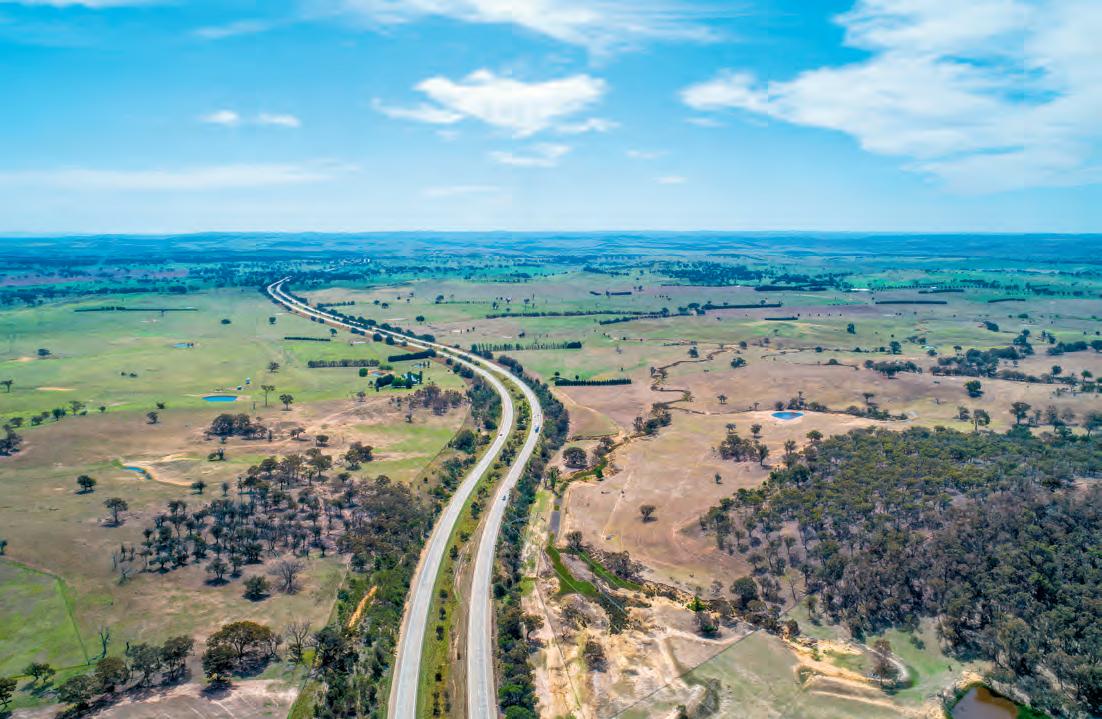
opposition’s announcement that means the upgrade will go ahead regardless of the result of the upcoming federal election.
Melton City Council has welcomed the news that the Western Highway will be reinvigorated between Melton and Caroline Springs.
While details of the upgrades are to be confirmed, City of Melton mayor Steve Abboushi says the funding will go towards improving capacity and safety and is expected to include extra lanes and upgrades to key interchanges.
The New South Wales government has announced it is continuing on upgrade works to improve the Hume Highway at Marulan.
As part of a $35 million investment into rebuilding key parts of the freight route, crews will now start the next stage of repair works on a 1.1km stretch of the northbound carriageway from the Marulan South Road intersection.
Having started on March 17, the work is using high-strength asphalt road pavement to replace 500 damaged concrete slabs on a 600m section of the Hume, with this change from the concrete base to asphalt pavement being expected to result in less
disruptions and safer roads.
Once the work finishes in mid-April, Transport for NSW will then evaluate the impact of the change and determine if the new approach should be rolled out on other sections of the highway.
This latest work follows on upgrades done last year at the Hume in Marulan as well as at Rudd’s Straight at Wollogorang.
“The Hume Highway is the second largest freight route in Australia, linking Sydney and Melbourne and is used by more than 37,000 vehicles daily,” NSW regional transport and roads minister Jenny Aitchison says.
“The Marulan bypass was built in 1986 as part of the Hume Highway upgrade program and since that time the large growth in traffic volumes have put extra pressure on the existing road surface.
“We understand motorists are frustrated by the quality of this section of road and that’s why we have invested $35 million in rebuilding and improvement work.
“We thank the community for its ongoing patience while this essential repair work is carried out.”
The installation of new technology and truck turning areas on a Pacific
Motorway tunnel has solved the issue of overheight trucks.
A rare but highly disruptive problem for heavy vehicle operators using the motorway is now no more courtesy of the new technology installed at the Tugun bypass tunnel.
According to the New South Wales government, the issue would see drivers of overheight vehicles sometimes “slip past warning signs” and find themselves stuck at the northbound or southbound tunnel entrances.
The issue was particularly problematic from the north because if an overheight vehicle reached the tunnel from the Queensland side, the driver would have to reverse the vehicle four kilometres back up the motorway before turning around.
This problem required Transport for NSW and Transport and Main Roads Queensland, as well as police forces, to help trucks get out of the jam.
A new project has just finished to improve advance warning for overheight vehicle drivers, with new turning areas also installed closer to the north and southbound entries to the Tugun bypass tunnel.
This means that if any operators do happen to go past the warning signs, they will only have to reverse a short distance up the highway to reach an area where they can cross over.






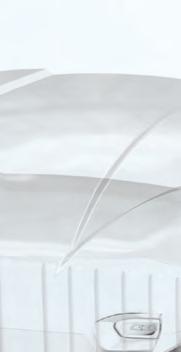
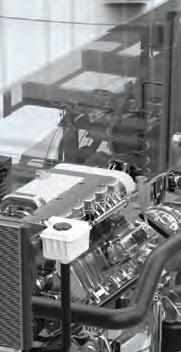


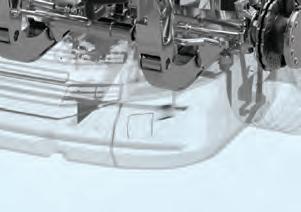

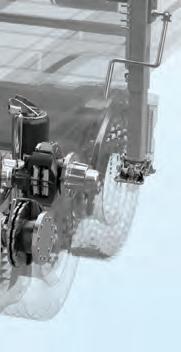

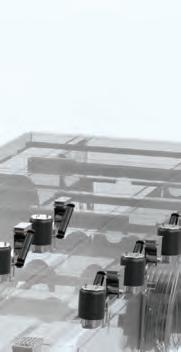





An Australian trucking icon has bought more than 28 million shares in Lindsay Australia via one of his entities
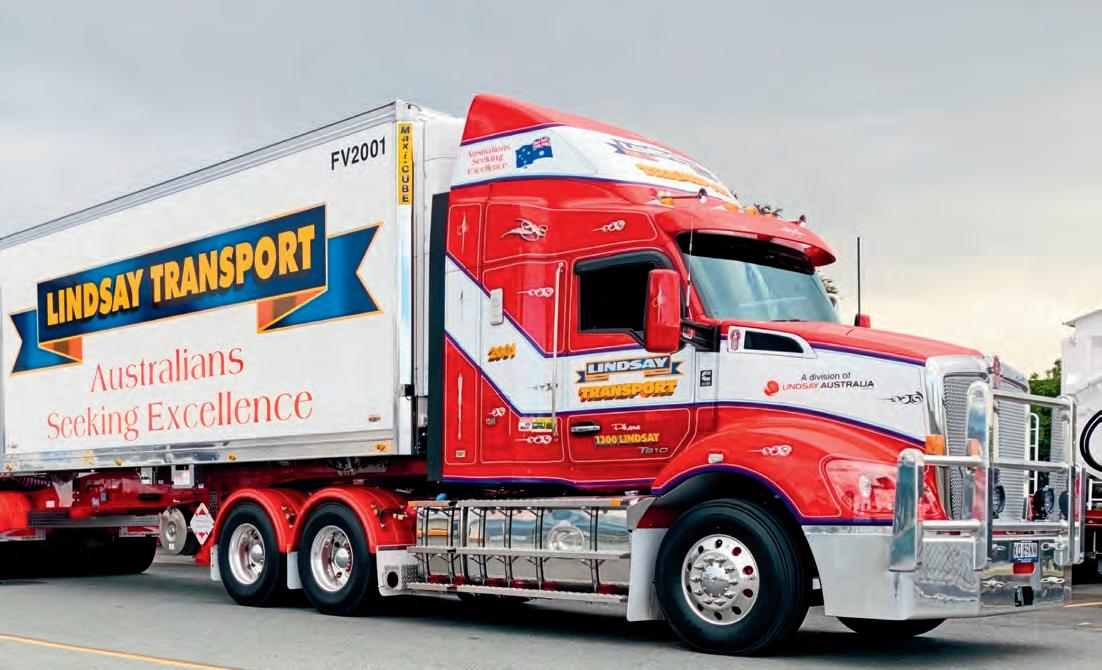
A major competitor to national operator Lindsay Australia has acquired more than 28 million shares in the company, resulting in it having a near 10 per cent voting share in the business.
Safe Driving Concepts, an entity controlled by Ron Finemore Transport, has acquired a total of 28,003,556 shares in Lindsay Australia. This means it now has a total voting power of 8.89 per cent.
Completed in early March, the acquisition of shares means Australian transport icon Ron Finemore now has a sliver of voting power in the national trucking giant.
Founded in 2004 following the sale of Finemore Holdings in 2001, Ron Finemore Transport currently runs more than 280 prime movers and 550 trailing equipment pieces.
The acquisition of shares came just a week after Lindsay Australia announced the acquisition of Western Australia’s GJ Freight to extend its capabilities into regional WA.
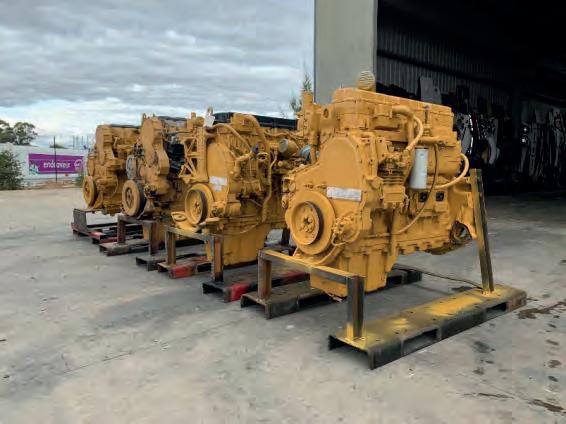
Specialists in CAT and Cummins Engines also carrying parts for all American Truck Brands and Road Ranger Gearboxes. Rebuilt and Second Hand Options Available. Warranty with all second hand and rebuilt engines.
CAT C-15 Rebuild (6NZ or 9NZ Prefix) $48,000 + GST exchange on Special Until EOFY or While Stocks Last. (Block Work, Pistons/Sleeves, Cyl Head, Injectors, Turbo, Camshaft, Rocker Gear, Water Pump, Oil Pump). 12 Months Parts Warranty, 6 Months Return to Base Labour. 550 HP Spec.
CAT C13 Engine (KCB Prefix) $25,000 + GST exchange. Second hand engine with 600,000km on it. Runs good with good oil pressure. 60 Days Return to Base Warranty. 470 HP Spec.
CAT C15 Acert Engine (NXS Prefix) $26,000 + GST exchange. Second hand engine. Has had a bearing roll (mains and big ends). 60 Days Return to Base Warranty. 550 HP Spec.
Cummins Signature Gen 2 Rebuilt Engine $48,000 + GST exchange on Special until EOFY or Stocks Last. Block Work, Pistons & Sleeves, Cylinder Head, Turbo, Camshafts, Injectors, Water Pump, Oil Pump all done. 12 Months Parts Warranty and 6 Months Labour.
Cummins ISX 475 Engine Second Hand Engine.
$22,000 + GST exchange on Special Until EOFY. Good Oil Pressure, Ran Good. 60 Days Return to Base Warranty.
Cummins Signature Gen 2 Second Hand Engine
$25,000 + GST exchange. Good Oil Pressure, Ran Good. 60 Days Return to Base Warranty.
Cummins ISX Signature EGR Engine. $52,000 + GST Exchange on special until EOFY or Stocks Last. Blockwork, Pistons & Sleeves, Cylinder Head, Turbo, Camshafts, Water Pump, Oil Pump.


Road Ranger Gearboxes Reconditioned and Second Hand. All genuine Eaton Parts in reconditioned boxes. Various models available including 16718B, 16918B, 18918B, 20918B, 22918B. Call for pricing and availability of your preference.
When more than 30 truckies were left stranded in an isolated Queensland town due to floods, the local roadhouse provided a home for many drivers
A North Queensland roadhouse has helped hordes of truck drivers get through the recent floods in the state, providing food and a community spirit while freight routes were blocked.
More than 30 drivers were left stranded in the town of Greenvale as floods stopped them from travelling any further east to Charters Towers and up to Far North Queensland.
While the family-owned and operated roadhouse has now farewelled the stranded truckies as freight routes once again reopen, they’re still receiving nice messages for the homely environment they provided to the drivers.
“After we all got the notice to go around the coast, a few managed to get through, meaning only a few travellers are left here now,” Julie from the
roadhouse told OwnerDriver
“We’ve received some amazing messages – some partners have been messaging and thanking us for helping their husbands get through the delays.”
Julie says the issue was Google Maps didn’t have the road at Greenvale marked as closed, meaning many trucks soon began pulling up and stopping in the town.
Being a rather isolated town, the truckies soon went to the roadhouse to get through 10 days of delays.
“All the boys who stayed here were good, it’s sad now as we’ll miss them – the roadhouse became everyone’s home,” Julie says.
“A lot of them learnt to make coffee. It was hectic but a great experience.”
Luckily, Greenvale Roadhouse is always prepared for these influxes,






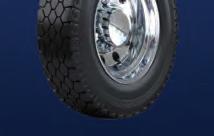


keeping a lot of stock on hand in case floods or other weather events wreak havoc. That didn’t stop milk running out in the final days, with drivers from Morgans Transport handing over some milk to keep the roadhouse running.
This generosity was a theme, with Julie saying many members of the industry continued to offer help, even when it wasn’t required.
“Alan from Gecko Transport started it by coming in and offering us $200 for our kindness, which we said we wouldn’t take. So instead, the money gave everyone coffees,” she says.
“When we thanked him on Facebook, everyone was wanting to do something
similar, ringing us and asking how to pay. We didn’t need it, so the money has all gone towards paying for free meals and coffees until it runs out.
“We now don’t need anyone putting money in, as there was plenty being used to offer free food to the truckies for as long as it lasted.”
The experience could’ve been painful for many, but Julie says the kindness she witnessed has reaffirmed the power of Greenvale Roadhouse.
“I’m most amazed by humanity –one bit of kindness snowballed and the messages are still coming in now from partners – it gives you faith in humans,” she says.










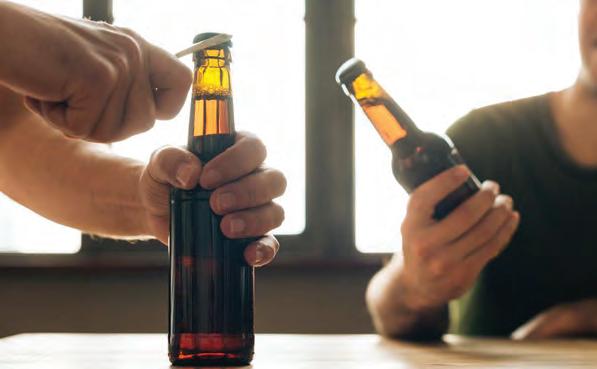



















































































3YEARS/450,000KM
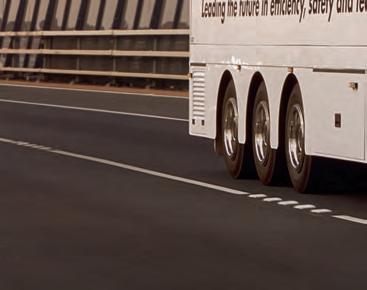

COMPLIMENTARY REPAIR AND MAINTENANCE *
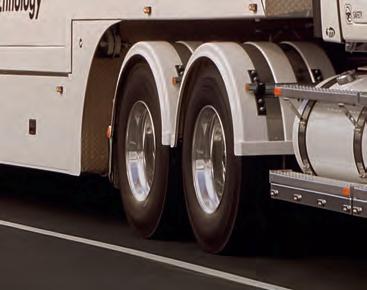


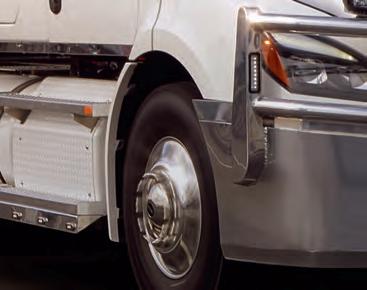




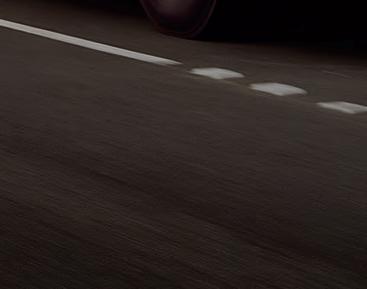
Start hauling with your new Cascadia knowing you’re already ahead, with complimentary Complete Servicing for three years or 450,000km (whichever comes first). Plus enjoy class-leading fuel efficiency, cutting-edge safety technology, and the ultimate in driver comfort. Available on selected models for a limited time.








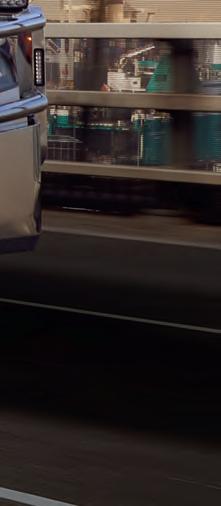

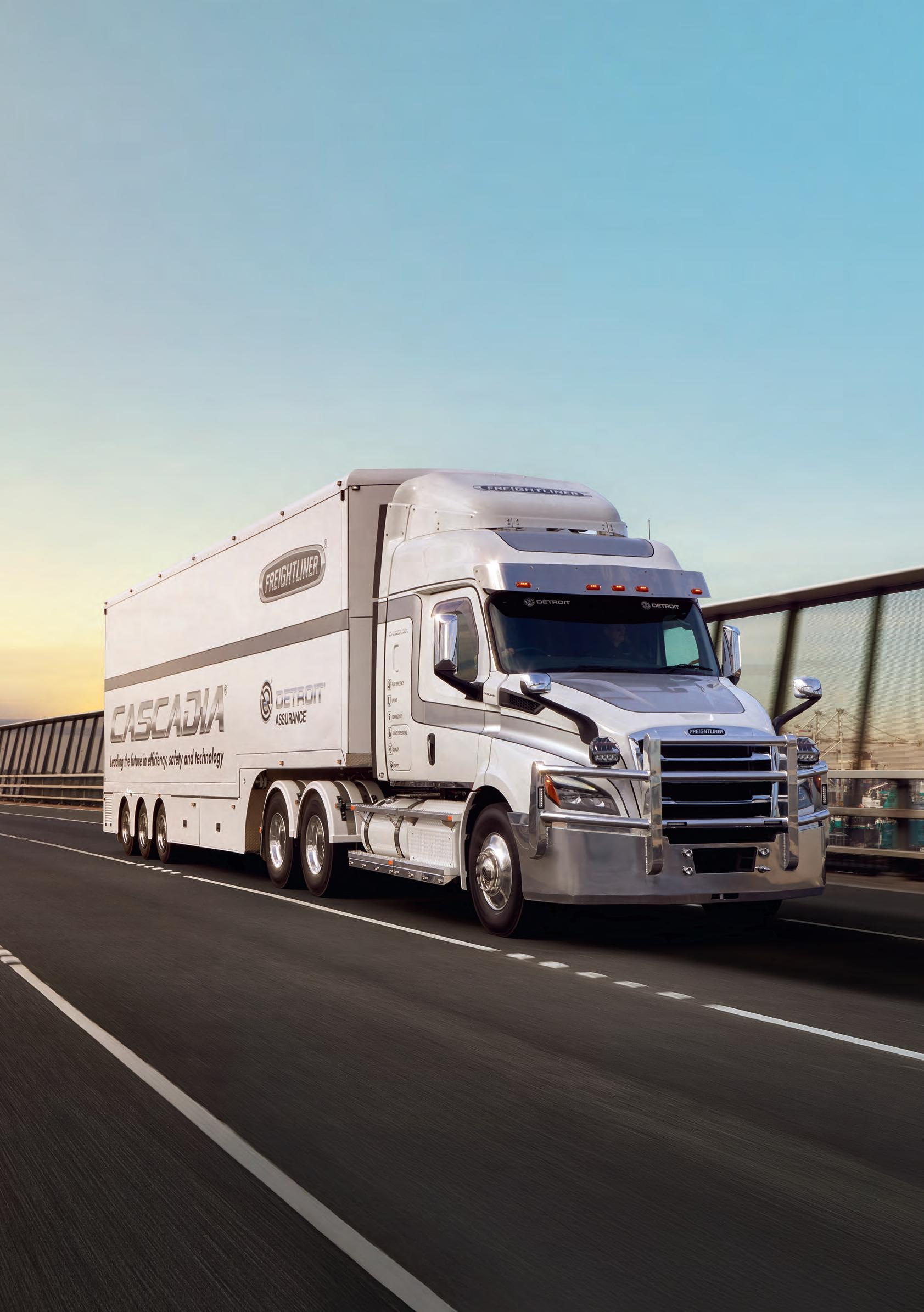
The
removal of the assessment fee and policy is being celebrated
as “an absolute win” for the Victorian heavy vehicle industry
A trio of Australian heavy vehicle associations are celebrating the removal of a Victorian bridge assessment fee policy that will make structural assessments more efficient.
The Victorian Transport Association (VTA), National Road Transport Association (NatRoad) and the Heavy Vehicle Industry Australia (HVIA) have all spent the past 12 months discussing with the Victorian government a way to enable easier pathways for the state’s heavy vehicles.
This has culminated in the announcement that an automated assessment program for Class 1 and 2 heavy vehicles will be made available from January 1 next year.
This system will be known as the Heavy Vehicle Structural Assessment Permit System and will result in up to 85 per cent of structural assessments being automated, significantly reducing assessment and response times while eliminating
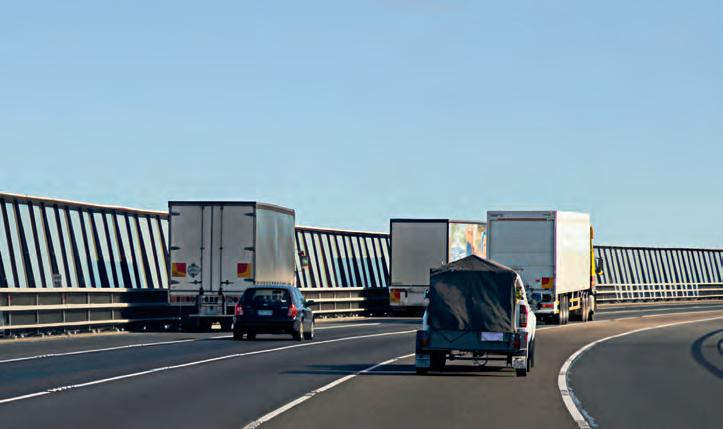
all fees for the industry.
The three associations have previously called for the fees and the policy to be removed, arguing it would result in easier access pathways for many heavy vehicle combinations including innovative B-doubles, A-doubles, Performance Based Standards (PBS) vehicles,
quad-axle semi-trailers and combinations featuring low and zero-emissions trucks.
The associations say these combinations have proven to be safer, more efficient and more productive than many conventional heavy vehicle combinations that don’t require access permits.
“This is a great outcome for road transport operators who have been struggling with rising costs. We acknowledge the Victorian government’s commitment to reducing red tape and improving the efficiency and productivity of our industry,” NatRoad CEO Warren Clark says.
VTA CEO Peter Anderson says this is a “crucial milestone for Victorian road freight productivity and efficiency”.
“On behalf of all our members, we wholeheartedly thank the Victorian government for listening and acting on the real needs of the industry,” he says.
HVIA CEO Todd Hacking says the removal of the policy is “an absolute win for industry”.
“It’s also a win for the wider Victorian community, who will enjoy the benefits of a greater number of safer, more productive and more efficient trucks in the years to come,” he says.
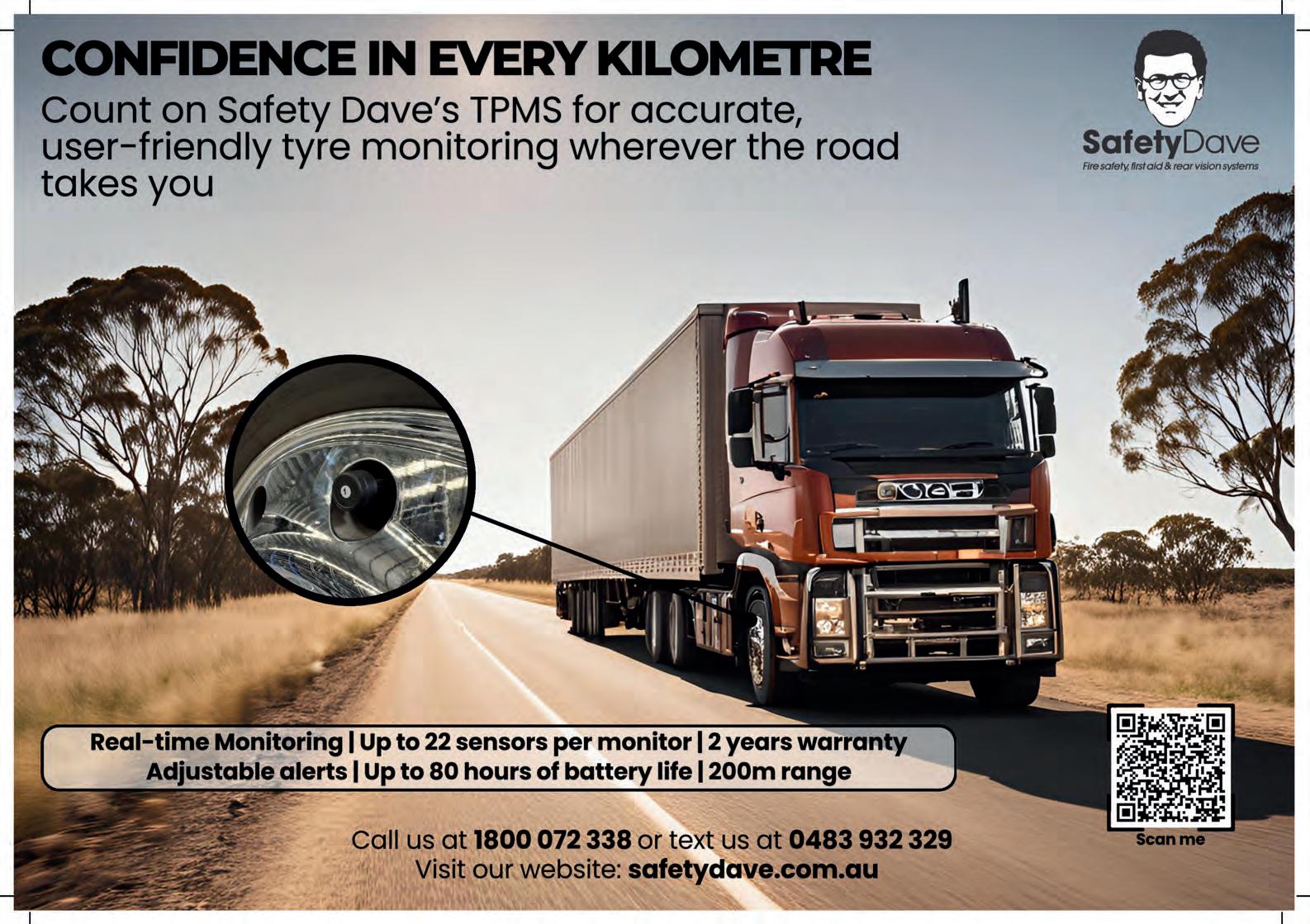
From improved safety standards to payment solutions,
the TWU says new laws now in action protect
drivers in many ways
The Transport Workers’ Union (TWU) has announced that new laws protecting the rights of owner drivers and gig workers have kicked in.
But what does it mean for Australia’s legion of owner drivers?
The world-first new rights means owner drivers will be protected against the unfair terminations of contracts as part of the new Road Transport Industry Termination Code.
New laws passed last year by the federal government will also allow gig workers to receive a fair process if
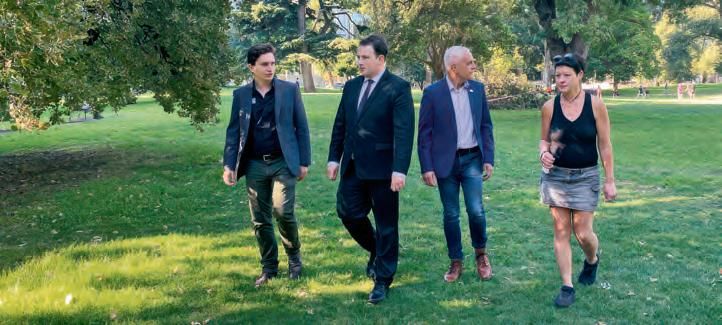
deactivated by an employer as part of the Digital Labour Platform Code.
For the first time, gig workers can also access the Fair Work Commission for unfair deactivations and access reinstatement and compensation.
“The federal government’s legislative changes have provided these workers with protection from unfair sacking without reason,” TWU national secretary Michael Kaine says.
“For truckies and independent contractor owner drivers who make sure our supply chains remain connected, this means deadly supply chain pressures are significantly lifted.
“In any other industry or walk of life, the pressures on truckies that are
leading to deaths on our roads would be seen as a national crisis, so these changes will give drivers relief.”
Kaine says owner drivers now have the chance to receive appropriate remuneration for their work, with these protections giving contractors backing to negotiate fair pay without being unfairly dismissed.
“It’s difficult for owner drivers engaging with major companies is that their commercial influence is limited, even more so if the employer can sack you without a fair reason,” he says.
“What this announcement does is give owner drivers more influence in commercial conversations to set a survival rate of pay and reasonable
schedules with legislative protection behind them. It’s a game changer for road transport.”
When it comes to safety, the new laws coming into effect mean the pressures placing owner drivers in danger on Australian roads are now lifted.
“For all the people who have died in truck crashes in the past year, I ask how many of them were preventable if we had lifted commercial pressures on truck drivers?” Kaine says.
“This announcement allows owner drivers to put their hand up and say they need more money and time from those engaging them. If they have their contracted terminated because of this, they have the right to challenge it.”
In the lead-up to the federal election, Kaine says this is the first step towards returning a Road Safety Remuneration Tribunal that was abolished in the run-up to the 2016 federal election.
Regardless of who wins government this year, Kaine wants these measures to be the start of protections for owner drivers, including payment terms.
“We’re challenging all sides of politics to lock in these changes regardless of who wins the election,” he says.

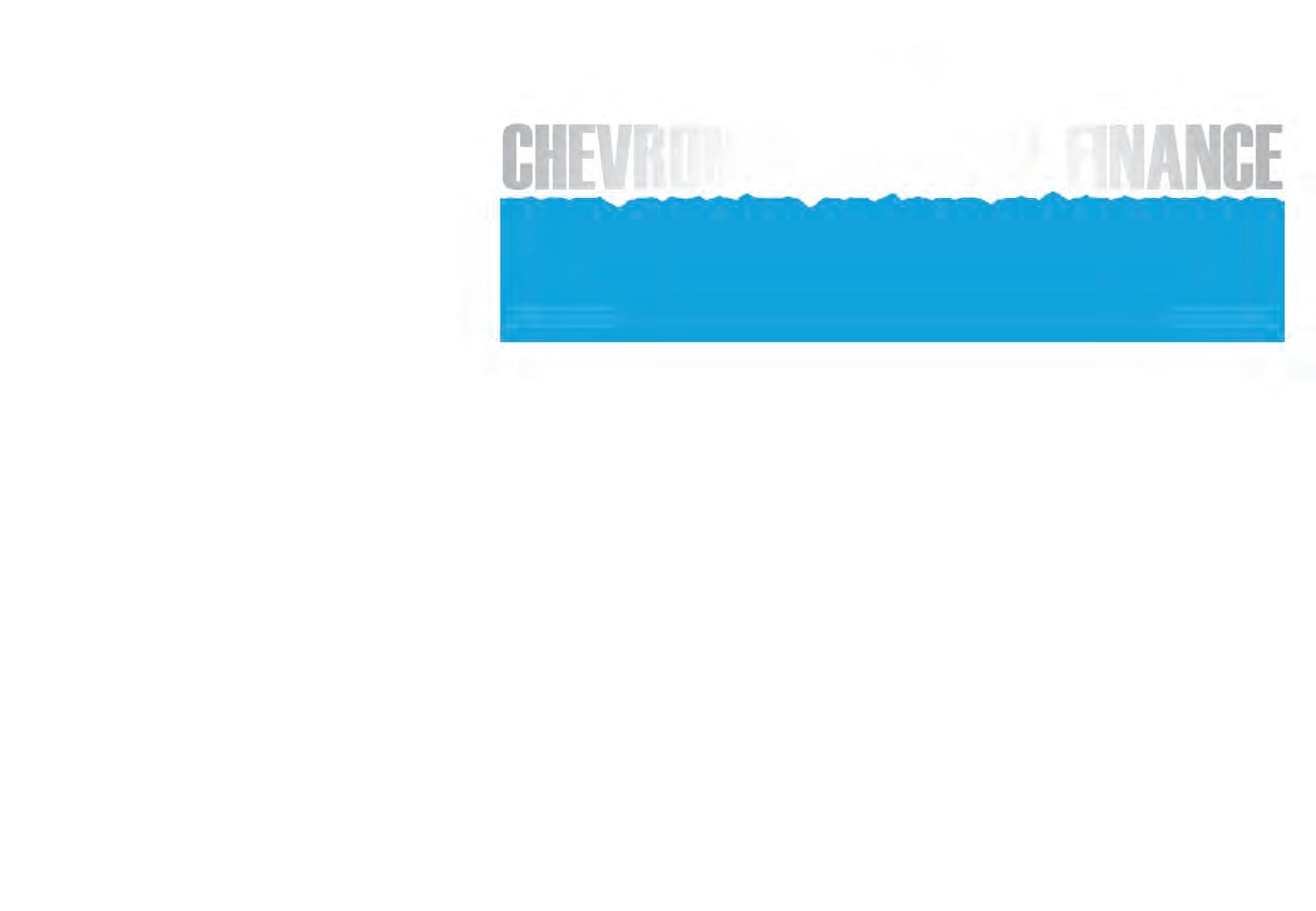
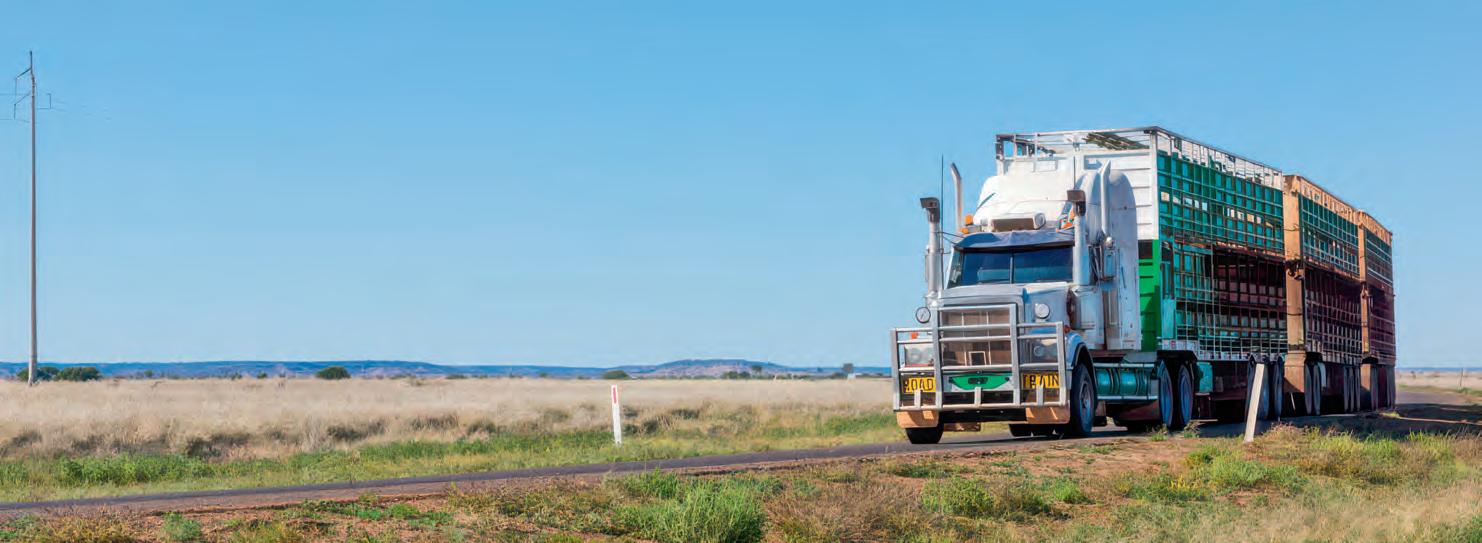
The ATA’s first election priorities include a focus on trainee drivers, a national skills passport, completion bonuses and skilled occupation lists
The Australian Trucking Association (ATA) has provided a glimpse into its first priority ahead of this year’s federal election, calling on the next government to focus on apprentice and trainee truck drivers.
The ATA has urged Australia’s political parties to commit to providing financial support to
driving operations apprentices and their employers, as well as the launch of a national skills passport so drivers can share evidence of their qualifications and skills.
The ATA has also pushed parties to pay a completion bonus to drivers who complete one of the short driver training courses run by RTOs with
trucking industry associations, state governments and major companies. In addition, it also implores parties to add articulated truck drivers and tanker drivers to the skilled occupation list for migration to Australia after overseas driver licensing is fixed.
ATA chair Mark Parry says the next



government should provide financial support to apprentice and trainee truck drivers and their employers.
“Trucking is one of Australia’s essential industries. We deliver every item at your local supermarket, every litre of fuel at the service station and every medicine at the chemist, but we face
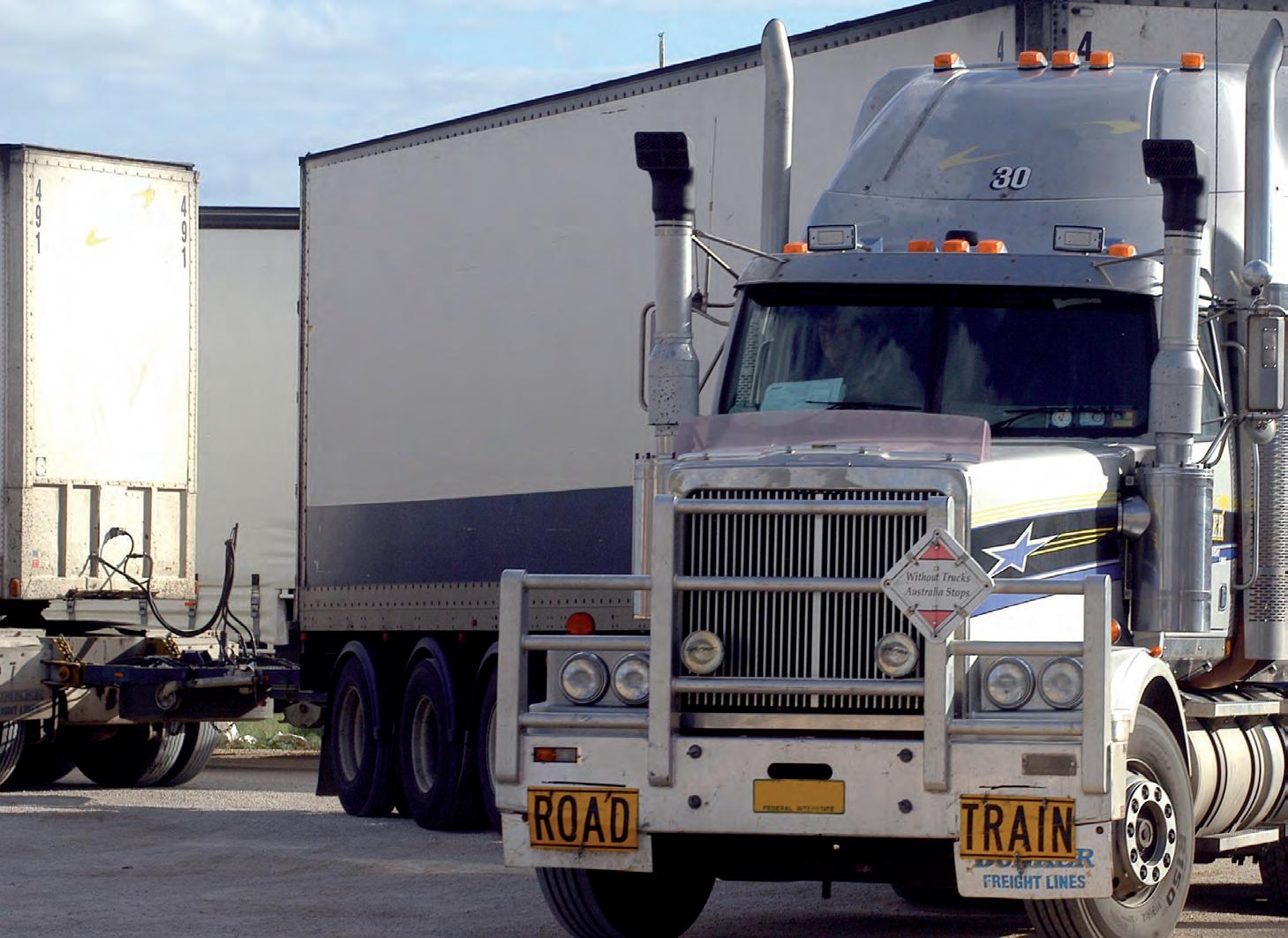
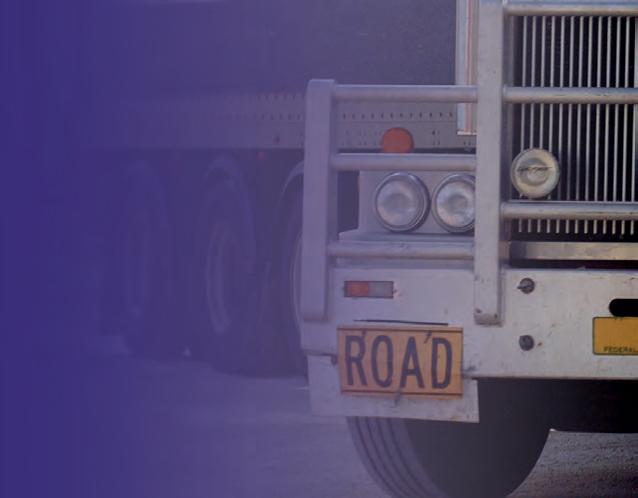
a shortage of truck drivers,” he says.
“Truck driving is one of the top five occupations with a skill shortage.
More than 26,000 positions are unfilled.
“The Australian government provides financial support to apprentices in priority occupations such as electricians and mechanics. But it does not support people who want to work as truck drivers, even though driving operations can be an apprenticeship.
“The ATA calls on the next government to provide financial support to apprentices undertaking driving operations apprenticeships and their employers.
“Apprentices should receive $5,000 in support over their apprenticeship. Employers should receive $2,000 after six months and a further $3,000 after 12 months.”
Parry says that a number of registered training organisations ran short truck driving courses that went beyond getting a licence to include other skills that drivers need to succeed.
“These short courses are supported by state governments, trucking industry associations or major companies, but there are no federal incentives for potential drivers to give them a go,” he says.
“The next government should pay a completion bonus of $1,500 to
drivers who complete one of these short driver training courses. The driver’s first employer should receive a $1,500 hiring bonus.”
Parry says the next government should launch a national skills passport to make it easier for drivers and other workers to demonstrate their skills and qualifications. A skills passport would also help businesses hire new staff with confidence.
“Our 2024 Workforce and Driver Training Summit called for the creation of a passport system so truck drivers could easily show they had the licences and qualifications they need, such as holding a dangerous goods licence or completing an NHVAS fatigue course in addition to their driver’s licence,” he says.
He also says articulated truck drivers and tanker drivers should be added to the skilled occupation list for migration to Australia.
“It is extremely difficult for truck drivers to migrate to Australia, except under very narrow circumstances,” he says.
“Last year, the Australian Bureau of Statistics recognised that articulated truck and tanker driving required a similar level of skill to a trade certificate.”
The ATA will be releasing more policy proposals as the federal election gets closer.
Australian transport giant Lindsay Australia has revealed a new acquisition, with the brand completing the sale agreement for GJ Freight.
The acquisition sees Lindsay Australia expand into the WA market by acquiring the assets and staff of the Bunbury-based integrated logistics and packaging business.
“GJ Freight is a well-established, complementary business operating across six sites in south-west WA, currently generating more than $20 million in annual revenue,” Lindsay Australia says.
With the sale agreement executed this month, the acquisition is expected to be completed by March 31 subject to customary conditions.
Lindsay Australia says the acquisition
gives it diversification and expansion into the south-west WA horticultural market and the opportunity to grow an integrated intra-state transport offering that connects to the Lindsay national network via its Perth operations.
It also provides Lindsay with a platform to establish rural operations in WA and into the Goulburn Valley while leveraging the Hunter network to replicate Lindsay’s fruit loop model.
Lindsay Australia will also look to partner with Redland Premium Farms as a cornerstone customer.
The company has revealed the operations are set to commence on April 1 this year, following in the footsteps of its recent acquisitions of two off-market rural stores in Nagambie and Seymour.
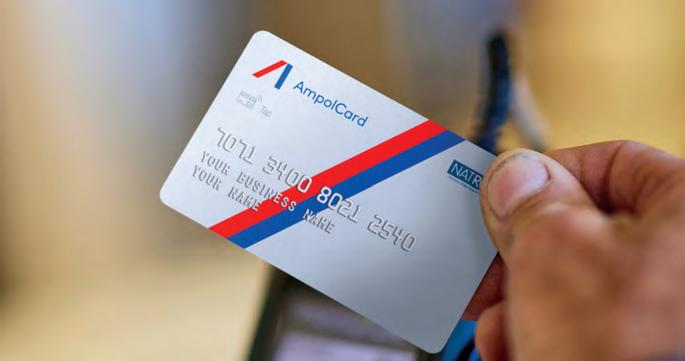
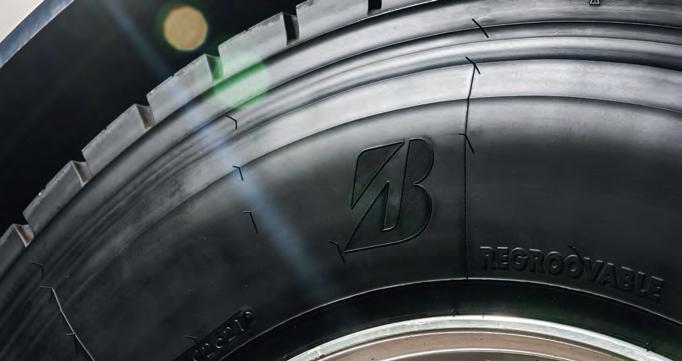


It’s been just under a year since the federal government decided to phase out live sheep exports by sea. Despite protests and workshops with government, Sean Mortell reports the livestock transport industry is still in limbo when it comes to their future
Ben Sutherland will never forget the day he heard the news. The president of the Western Australian Livestock and Rural Transport Association (LRTAWA) was sitting in his truck in outback WA on a standard Saturday in May. Having been unloading at various farms throughout the day, he had a load of sheep on the back. Then, the phone rang.
“The call was from Jan (LRTAWA CEO Jan Cooper), she told me to turn on the radio and listen to the news,” Ben told OwnerDriver
“I went silent for a bit when I heard the news. Then I swore to myself and began to think what was going to happen next.”
The news was enough to startle any livestock operator, particularly in WA. On that Saturday, the federal government confirmed plans that it would follow through on an election commitment to phase out live sheep exports by sea. The decision meant that, come May 1, 2028, the trade will no longer occur. It meant thousands of Australian livestock transporters would be left in the lurch.
“When I got home near Lake King, I thought I’d go have a beer and camp in my truck just 40 kilometres from home so I could process the news,” Ben says.
“I walked into the local pub and you would’ve thought someone had let a bomb off – there was stunned silence. When people did speak, all they could talk about was the announcement.”
After hearing the news and calling Ben, Jan immediately began fielding calls from LRTAWA members all around the state who were in a similar mood to Ben. Only the night before had Jan first heard an inkling that a major announcement would be made that day. However, all that her Saturday scrambling uncovered was that the announcement would be made “under the cover of darkness”.
“I was initially concerned about the welfare of our members,” Jan told OwnerDriver
“We immediately started trying to work out what it meant for our members. The initial reaction was definitely shock, as we’d only heard inklings at the time and didn’t think the commitment would actually come to pass.
“We became counsellors overnight.”
After the shock had officially set in, Ben and Jan both barely had a moment of silence – members consistently called them to find out what they could do next to continue running a viable business.
“I had a business owner’s wife ring me and say that her husband wouldn’t stop crying after the decision was made,” Ben says.
“That’s when I thought we had to do something here.”
It was this widespread reaction to the announcement that saw the LRTAWA team up with the movement ‘Keep the Sheep’. This grassroots movement was founded to take action against the decision to ban live sheep exports by sea in Australia.
Central to ‘Keep the Sheep’ was the notion that the ban will devastate WA farming families and their communities, with wider consequences impacting truckies, stock agents, shearers and sporting clubs in remote WA towns such as Kojonup, Wagin and Kulin.
“The nations that buy our sheep overseas are concerned about the ban – they trade with Australia for our high quality and superior sheep,” the Keep the Sheep movement says on its website.
“The ban won’t create demand for chilled or boxed meat, it will simply push the trade to countries with far lower animal welfare standards.
“We need to keep the sheep because a ban is unfair to WA farmers and their families who rely on the sheep industry to survive.”
The movement was initially formed by Farming
Families and Communities WA, with it eventually leading to a truck convoy protest in Perth last year. The protest saw hundreds of trucks and farm vehicles take to Perth’s streets to advocate against the federal government’s decision, seeing traffic slow to a crawl.
Ben led a near six kilometre line of trucks and utes on the day. This protest then snowballed into action, with a House of Representatives inquiry with roughly 1,300 submissions kicking off in the aftermath of the Perth convoy.
“There was a general feeling of helplessness among our members – they were looking to us for support and direction, so this movement allowed us to go into bat for them,” Jan says.
Despite this initiative, the industry didn’t receive justifiable reasons for the live export ban. Ben says it was part of a “dirty deal” done to secure votes in a Victorian seat.
In May last year, the Animal Justice Party confirmed a preference with the federal government to secure the live sheep export by sea phase out policy. In a media release on its website, the party confirmed the deal allowed it to provide its preferences to the Labor Party to help them secure the seat of Dunkley in Victoria at the March 2024 by-election.
Bodies such as the LRTAWA never received official confirmation from the federal government that this was the case, as the Victorian-based decision ended up having massive ramifications on the other side of the country.
“Some of the reasoning we got from Senator Murray Watt (former federal agriculture, fisheries and forestry minister and current employment and workplace relations minister) was that the government had a mandate to make this decision,” Jan says.
“We still dispute this, as we don’t believe this decision was taken to the election as a firm policy.”
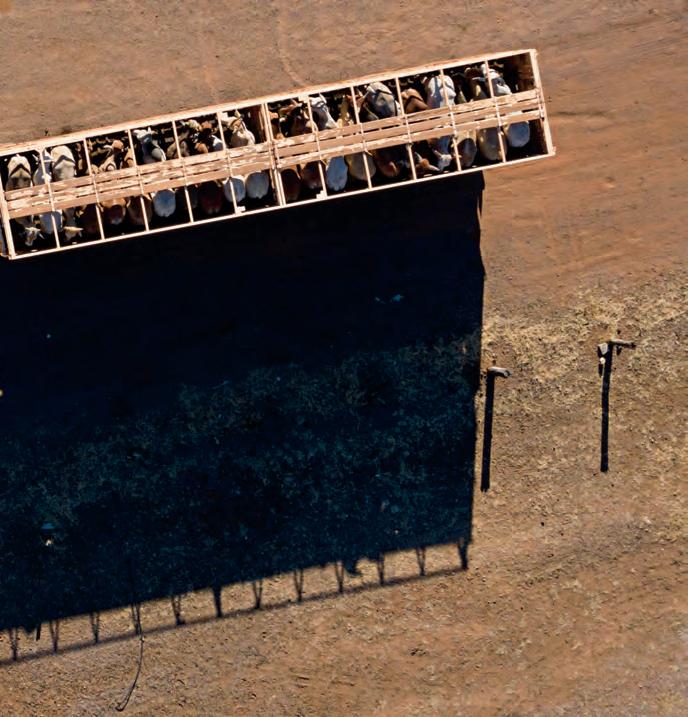
Following the House of Representatives inquiry, Ben says ministers didn’t download or read half of the submission made, meaning they didn’t listen to warnings of what may happen if they didn’t reconsider the ban. Ben then went to Canberra to find out if the legislation would pass, thus starting a trip out of hell.
“It was the worst 70 hours I’ve been through in my life,” he says.
“They guillotined the vote and there was no more action on it, so the legislation passed. I remember walking the halls of Parliament House and being shunned by the federal government. Senator Murray Watt told us to get over it, but we have nothing else to do or nowhere to go – we’re local carriers in rural communities.”
Following this, the LRTAWA led the charge in predicting that the WA sheep flock would dwindle within the next 12-18 months. It’s not even taken a year to drop, as Ben now hears more and more carriers are getting out of the industry as they’ve “had enough of experiencing another nail in the coffin”.
“We predicted the state’s flock to do what it is now, but not as fast as it’s happened,” he says.
“It’s a massive knee jerk reaction to a terrible policy.”
OwnerDriver reached out to various federal and state ministers to find out if they’ve considered the industry when phasing out live sheep exports by sea. In response, a spokesperson from the Department of Agriculture, Fisheries and Forestry says the federal government has committed $139.7 million from 2024-25 to assist with “the transition away from the trade”.
“The department’s website sets out the information about the decision and transition assistance, including the $45.5 million for support for producers and supply chain participants such as the transport sector,” the spokesperson told OwnerDriver
“The government is actively co-designing with industry stakeholders in WA to identify and prioritise ideas.
“The department is also co-ordinating the implementation of the transition assistance package with a broad range of implementing bodies including the WA government, industry and community partners.
“The government sees a strong future for the

Western Australian sheep industry and its supply chain participants.”
On the Western Australian side, state agriculture and food minister Jackie Jarvis says the government is focusing on the future, now that the decision has been finalised.
“From the beginning, our government has stood by WA farmers on this issue and we will continue to back them,” Jarvis told OwnerDriver
“We respect that the law has now passed. Right now, our focus is on making this transition as smooth as possible for WA.”
In recent times, the federal government has hosted co-design workshops in Albany to assist the industry in its transition out of live sheep carrying.
Agriculture minister Julie Collins says these workshops would help the supply chain to “plan, respond and adapt” to the announcement and focus on the future strength of the industry.
Ben attended the workshops and left them all feeling frustrated.
“I attended the workshop in good faith to make sure our members’ interests were looked after – to highlight the risks and to seek the opportunities,” he says.
“We’re being left behind, but we will keep fighting for a better outcome for our members.”

‘I left there with an overwhelming sense of doom that rural transporters would be left behind. It’s clear that all the warnings about the impact of the Albanese government’s live sheep export phase-out have fallen on deaf ears.”
Ben says he has told Collins and members of the federal government multiple times that the decision has “knocked the confidence” out of the WA sheep industry and transport businesses are now being left to make decisions about their future.
“They can’t afford to wait while their equipment loses value and the equity in their businesses evaporates,” he says.
“They can’t afford to wait for a transition process that has not got off the ground and shows no signs of delivering any real benefit for their businesses or the communities they live in. With a 25 per cent drop in WA’s sheep flock, our work is being badly affected. The void is not being filled by an already inadequate processing sector or by transporting sheep to other states.
“We know it is only going to get worse with another 25 per cent drop in sheep numbers on the horizon – I could see no evidence at the workshop of a genuine attempt to understand where the supply chain finds itself.
“Even if the sheep industry miraculously recovers, it will be too late for many rural transporters. Primary producers will find they don’t have access to professional transporters in their area and their costs will increase.”
On top of this, Ben and Jan’s message for the future of this issue is to question whether the Department of Agriculture, Fisheries and Forestry was the best organisation to be leading these discussions. While the department didn’t respond to OwnerDriver asking this question, Ben and Jan were eager to answer, as the fate of WA’s live export transport industry continues to remain in the balance.
“As far as I’m concerned, the Department is ticking a box to say they have consulted, which is condescending and insulting to rural transporters who have significant capital investment at risk,” Ben says.
“It’s an insult to the people who live and work in rural communities. We’re being left behind, but we will keep fighting for a better outcome for our members.”
Jan says: “We’re trying to be as constructive as possible, but it’s hard not to walk away as a transporter feeling gloomy.
“We’re in trouble now and don’t have a long lead time –members are making decisions about their equipment now. We need to know how any future funds will be allocated to help our industry before it’s too late.”

The NHVR’s latest heavy vehicle safety campaign involves a crucial reminder that eliminating danger on
the
roads is a two-way street
The National Heavy Vehicle Regulator (NHVR) is committed to reminding drivers about the importance of road safety. Usually, that involves targeting light vehicle drivers and ensuring they know how to best drive around heavy vehicles – like not overtaking trucks, or keeping out of their blind spots. But what about truckies?
That’s why for our latest safety campaign, we’re putting truckies in the driver’s seat and asking them to share their wisdom about driving safely! The latest instalment of the ‘We All Need Space’, titled ‘A Truckie Knows’, is focused on truck drivers and how they can influence their peers to make the roads a safer place.
Truckies have unmatched experience and skills honed over long hours spent on the road and have seen first-hand just about the full spectrum of driver behaviour. They must learn pretty quickly what attitudes and behaviours are needed to stay safe on the road, because when they’re covering hundreds of thousands of kilometres every day, they need to pick up the important lessons.
‘A Truckie Knows’ highlights important rules for truck drivers
like respect being a two-way street, leaving space for other drivers to make mistakes and always knowing that speeding doesn’t get anyone to their destination faster.
The campaign is being rolled out across the NHVR’s LinkedIn, YouTube, Facebook, Instagram and TikTok social media channels. It will also further feature across roadside digital large format billboards, covering major heavy vehicle routes and petrol station TV screens to ensure the messages reach, impact and influence truck drivers when and where it matters most.
With a national audience, it’s already having a significant impact, and since its launch in late February, has already achieved over 288,000 impressions across the NHVR’s social channels. We look forward to seeing how the campaign influences safe driving behaviours.
Late last year, the NHVR ran a survey in which nearly nine in 10 truck drivers reported experiencing a dangerous situation with a light vehicle over a four-week period.
The same survey also revealed 64 per cent of light vehicle drivers reported tailgating as the most common aggressive driving behaviour

experienced from heavy vehicles. These two contrasting narratives indicate there’s continuing work to do in highlighting safe driving tips for both heavy and light vehicle drivers. We must prioritise reminding all road users the importance of showing each other respect and courtesy behind the wheel.
Truck drivers play an incredibly important role in the community, yet our survey showed only nine per cent of truck drivers reported feeling that the general public respects their profession. While we know truckies generally have to deal with inexperienced drivers, long hours and tight deadlines, these are frustrations that could impact behaviour on the roads – even though we know they shouldn’t.
The NHVR urges all drivers to give each other space and make road safety the highest priority. Rather than hear from just us as the regulator, we also know the impact of receiving these critical lessons from experienced and knowledgeable drivers. Our hope is that this campaign will resonate with all truck drivers and remind them to make safety a priority, every day, behind the wheel.
The campaign has involved a range of transport businesses to showcase the array of industries that heavy vehicles play a vital role within. It was filmed using drivers from four transport companies, including livestock haulage, produce and general freight transport and bulk haulage businesses. While our ‘We All Need Space’ campaigns have previously focused generally on light vehicle drivers, truck drivers have an incredibly important role to play in road safety too. The start to 2025 unfortunately saw 10 fatal crashes involving heavy vehicles, with 10 people tragically losing their lives. These stats follow the back of a despairing 12 months on the road, with 2024 seeing nearly 200 fatal accidents involving heavy vehicles across the country.
“The NHVR urges all drivers to give each other space and make road safety the highest priority.”
At the NHVR, our vision is to have a safe, efficient and productive heavy vehicle industry and we are committed to rolling out these safety campaigns to make an impact on driver behaviour. All drivers can contribute to safer roads, and a truckie knows this all too well.
For more information on the campaign, visit www.nhvr.gov.au/ atruckieknows.

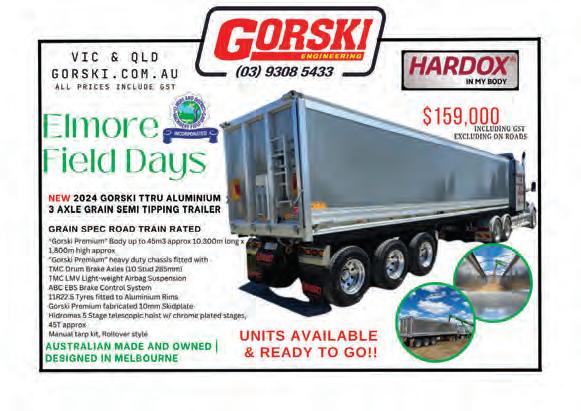


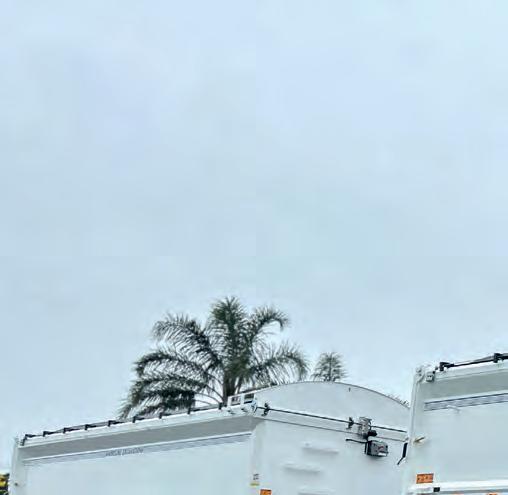





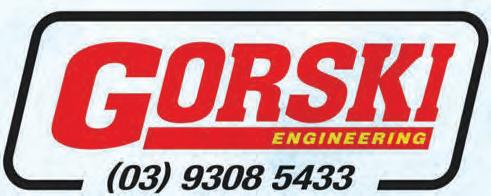


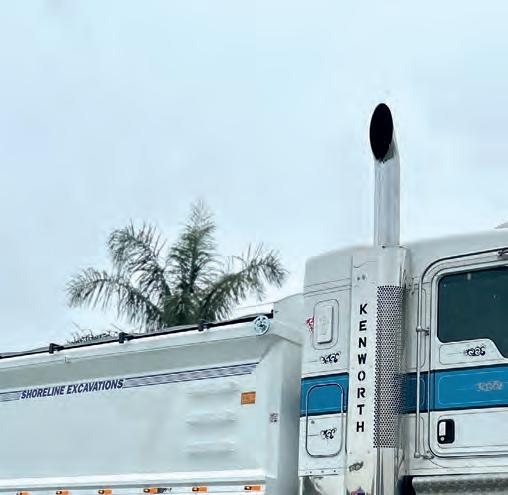


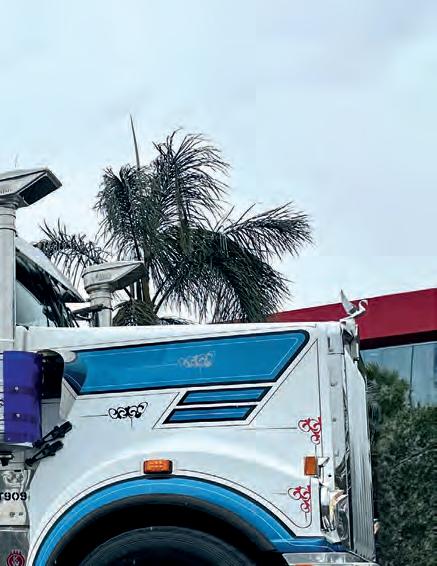





Over the past six years, the HVNL review has gripped the industry. Sean Mortell looks at the industry’s fight for improvements to transport regulation
It’s been seven years since the National Transport Commission (NTC) was first directed to review the Heavy Vehicle National Law (HVNL) in Australia. In December 2018, the terms of reference for the review dictated the NTC create a “modern, outcome-focused law regulating the use of heavy vehicles”.
Beginning on behalf of the Transport and Infrastructure Council, the HVNL review started in earnest in 2019. The aim for the review was to improve safety for all road users, support increased economic productivity, simplify the HVNL, support the use of new technologies and provide flexible compliance options. Six years since the review first got underway, there’s still a lack of official changes being made to the HVNL. It’s left the Australian transport industry frustrated.
“Now is the time to abandon the notion that the HVNL review package constitutes genuine reform,” Queensland Trucking Association
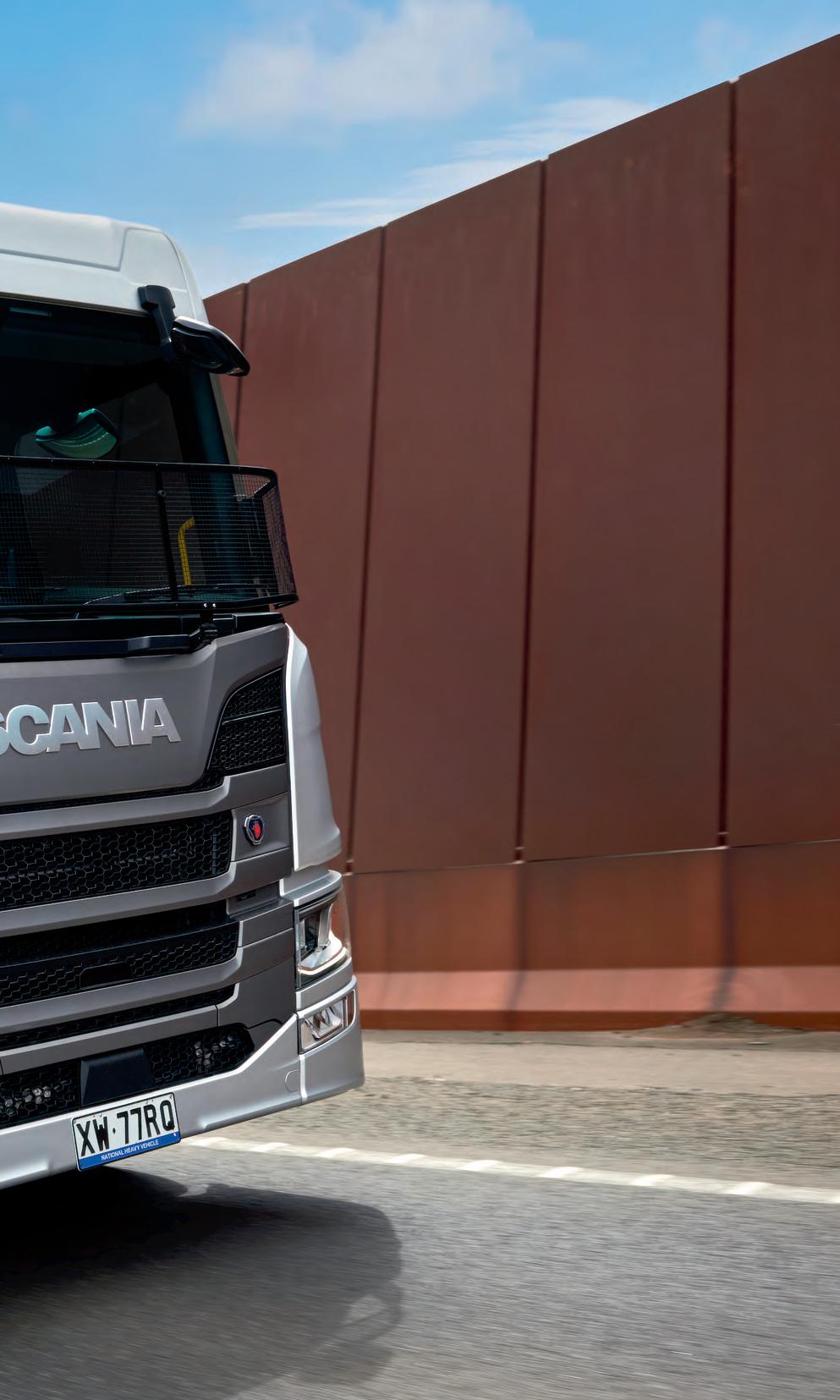
(QTA) CEO Gary Mahon told OwnerDriver
“After significant time and effort, it has yielded little more than a series of minor amendments and superficial adjustments to fatigue laws that have added even more pages to the law.”
Gary was one of the main industry stakeholders involved in the initial stages of the HVNL review, being part of an expert reference panel established in 2019 under the chair of Peter Harris. Alongside him sat Louise Bilato, the executive officer of the Northern Territory Road Transport Association (NTRTA).
“At the time, the NT and Western Australia were strong protagonists advocating for the review, and that it should be brought forward despite the legislation having been implemented in 2014,” Louise told OwnerDriver
“Both Gary and I were adamant from the outset of the expert panel meetings that the impact of the HVNL on transport, freight and logistics productivity couldn’t be ignored.”
Back in 2019, the start of the review presented an opportunity for the industry to reach a fresh HVNL. So, six years down the track, how has this once-optimistic
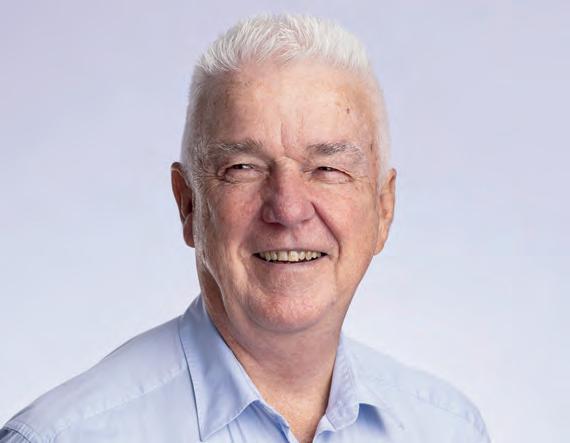
“Now is the time to abandon the notion that the HVNL review package constitutes genuine reform.”

“At the time, the NT and Western Australia were strong protagonists advocating for the review, and that it should be brought forward despite the legislation having been implemented in 2014.”
review turned into what Louise and Gary now describe as a “farce”?
To start with, the arrival of COVID-19 derailed the meeting process for the expert reference panel, meaning Gary and Louise’s involvement in providing industry feedback was limited. The panel was supposed to run in conjunction with consultation the NTC was conducting with various Australian governments, the National Heavy Vehicle Regulator and major Australian transport bodies and industry associations.
These delays meant the review was far from completed by the original deadline of the end of 2019. The plan was for the NTC to then provide recommendations to the council for approval, with these legislative changes to be drafted and made from mid-2019 onwards.
Instead, it took until August 2022 for transport ministers to endorse a package of legislative and nonlegislative recommendations for the HVNL. Over the best part of four years since it was first announced, the review process took into account the current HVNL and whether it addressed key priorities for the industry, including safe and efficient heavy vehicle access, a “risk-based approach
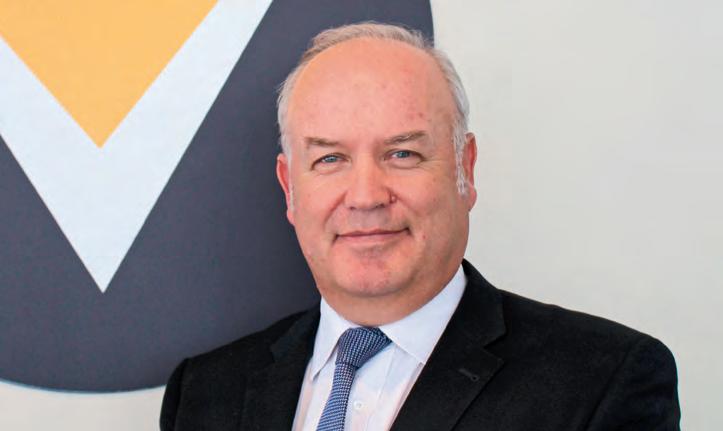
“If ever there was an example of bureaucracy at its worst and public policy gone wrong, the NTC and its review of the Heavy Vehicle National Law is it.”
PETER ANDERSON
VICTORIAN TRANSPORT ASSOCIATION (VTA) CEO

“The HVNL requires smaller reviews more often. To that end, instead of one review that takes six years or longer, and effectively needing to start again once a big review is finished, we recommend the NTC examine the option of reviewing parts or chapters of the HVNL more often to ensure that the legislation is fit for purpose.”
SIMON O’HARA ROAD FREIGHT NSW CEO
to regulating fatigue based on evidence”, an “improved accreditation framework” and the increasing use of technology for regulatory purposes.
Over the course of 2019, the NTC says it released seven issues papers for public consultation and received more than 200 online submissions. In January 2020, it released a summary of consultation outcomes, before publishing a consultation regulation impact statement for public feedback in June that year. In May 2021, it says it “learned from all of its consultation and research” to present recommendations to ministers. It took until October 2024 for the NTC to unveil its 71 proposed rate changes to HVNL penalties – part of what the NTC says will deliver a revised HVNL that is “risk-based and proportionate to harm”.
“The HVNL reform included a comprehensive review of penalties,” an NTC spokesperson told OwnerDriver.
“Through this review it was recognised that some penalties, especially for offences related to fatigue management administrative requirements such as completing the National Work Diary, were either unnecessary or should be reduced. Other penalties, especially for more serious offences, are proposed to increase.
“The NTC assessed 349 penalties, and following consultation with

“We would urge the powers behind the HVNL to turn their attention to the admittedly significant job of driving older, dirtier trucks off our roads, particularly those plying routes in heavily built-up, high density population areas.”
BENJAMIN NYE
SCANIA AUSTRALIA DIRECTOR OF TRUCK SALES

“We would still like to see a greater harmonisation of standards and legislation across all states and territories under Commonwealth legislation, which would remove excessive and inefficient paperwork compliance for transport operators crossing state and territory borders.”
WILLIAM FISHER
SCANIA AUSTRALIA DIRECTOR OF PRE SALES AND LOGISTICS
key stakeholders, recommended that 21 penalties be decreased and 50 penalties be increased.”
This slow process for the release of the proposed penalty changes last year has raised the ire of many in the industry. As CEO of the Truck Industry Council (TIC), Tony McMullan is one of many left ruing what the industry has missed out on in recent years due to the stagnant pace of the review.
“TIC is disappointed that the NTC’s review of the Heavy Vehicle National Law (HVNL) has still not been completed in early 2025,” Tony told OwnerDriver
“The review started in May 2018 with a directive to the NTC and was projected to see the implementation of a revised HVNL completed by November 2020.
“Had the NTC undertaken what the ministers wanted, industry would have seen a more-timely introduction of 2.55m vehicle width, ADR 80/04 (Euro VI) axle mass increases and the introduction of wide spaced twin steer vehicles. The protracted HVNL review has led to delays in the roll out of safer, cleaner and more productive new trucks on Australian roads.”
National Road Transport Association (NatRoad) CEO Warren Clark
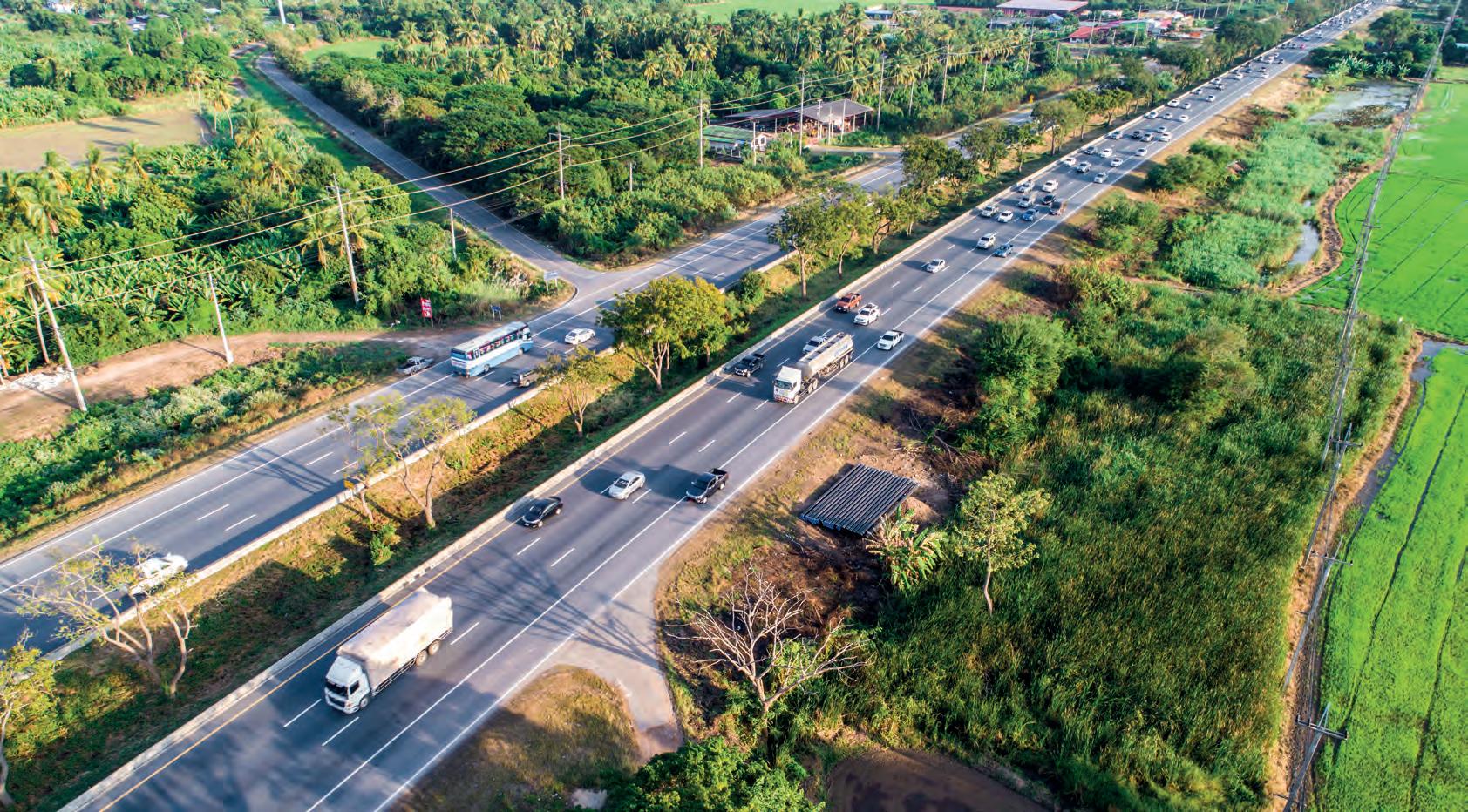
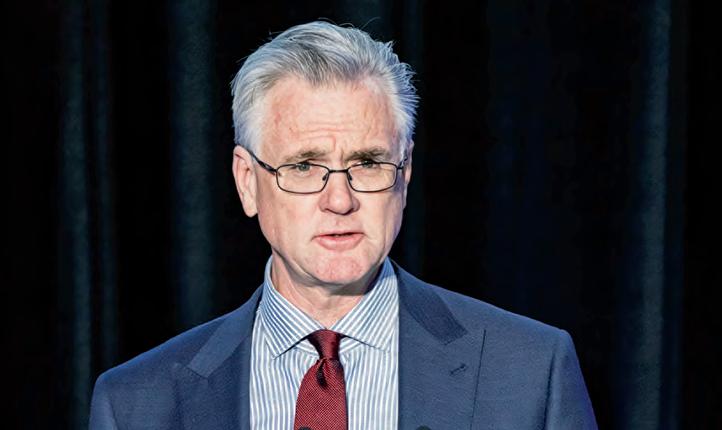
“Had the NTC undertaken what the ministers wanted, industry would have seen a more-timely introduction of 2.55m vehicle width, ADR 80/04 (Euro VI) axle mass increases and the introduction of wide spaced twin steer vehicles. The protracted HVNL review has led to delays in the roll out of safer, cleaner and more productive new trucks on Australian roads.”
TONY MCMULLAN CEO OF THE TRUCK INDUSTRY COUNCIL (TIC)
remembers opposing the extension of time given to the review back in 2023. He says this refusal was because he doubted the “flawed process and lack of ambition” would ever be resolved.
“The HVNL review has gone on for far too long and delivered no meaningful benefit to the industry,” he told OwnerDriver
“At this point, the focus should not be on token changes to the process. We need to see promises delivered – real change in the form of safety improvements and productivity gains.
“While the incremental improvements that have since been proposed should be implemented, such as improvements to general access, the review has failed to meet its original objectives.”
At the South Australian Road Transport Association (SARTA), executive officer Steve Shearer says the HVNL review process has been “utterly frustrating and singularly unsatisfying and unproductive”.
“What was promised by ministers was a fundamental review of the HVNL and the adoption of a risk-based safety-focused and simplified HVNL that facilitates productivity while enhancing safety,” he told OwnerDriver
“What we are getting does not even remotely resemble delivery on that promise. Despite the enormous effort and cost within government and
the industry throughout the process, we are getting little more than a tweaking of the HVNL.
“Yes, there are some good outcomes, but none of the truly needed and justified core outcomes have been achieved.”
He says fundamental reforms to fatigue management provisions were meant to have been a cornerstone of the review. Instead, he says they “fell victim to the interminable squabbles and jurisdictional turf wars that plague officialdom, as well as a stubborn resistance from police agencies to shift from the ‘cops-and-robbers’ mentality of bygone eras”.
“The abject refusal of the jurisdictions to be mature and sit down with industry to discuss serious reform of the HVNL, despite numerous requests by SARTA and others, has been a great disappointment and it’s a causal factor in watering down the review’s potential for a positive quantum shift,” he says.
“The adoption of a policy of reducing proposed changes to the lowest common denominator just to secure the agreement of all jurisdictions has delivered the inevitable minor fiddles.”
In WA, a main driving factor for the HVNL review being commissioned, Western Roads Federation (WRF) CEO Cam Dumesny says that he, like the rest of the industry, had “high hopes” for the process.
“We were confident that Gary and Louise as national representatives for industry associations would help influence the fundamental reform needed,” he told OwnerDriver
“However, the end result was they got worn down by bureaucratic inertia. The end result was a relatively minor tinkering at the edges.”
Down in Victoria, Victorian Transport Association (VTA) CEO Peter Anderson is particularly aggrieved by the delays that occurred throughout the review process.
“If ever there was an example of bureaucracy at its worst and public policy gone wrong, the NTC and its review of the Heavy Vehicle National Law is it,” he told OwnerDriver
“This is a review that started almost 10 years ago and over its lifetime has produced nothing but delay after delay. Despite the HVNL’s original intent to boost productivity, efficiency and safety, the NTC’s first five-year review has stretched over seven years with no significant updates.
“This isn’t a partisan issue either because successive ministers are as complicit as the NTC for sluggishness, and for letting down the road transport industry. The VTA is all for engagement, but when it is marred by delay after delay, it hurts not just transport businesses, but also the economy.”
The outrage at the HVNL review process isn’t just segmented to transport associations – industry veterans like Rod Hannifey, while out on the road, have plenty of issues with the proposed penalty changes put forth.
“What we have received is the withdrawal of three fines, barely touching the real problems,” he told OwnerDriver
“We asked for some flexibility, the recognition of the lack of rest areas and guidance on where we manage our fatigue. We didn’t get that.
“I want the NTC to reveal how much the HVNL review has cost to date and whether they believe we have received good value and significant change for all of the time, money and effort involved?”
In response, the NTC spokesperson told OwnerDriver the review process has been “complex”, requiring policy agreement from the states and territories who participate in the HVNL.
“Amending the HVNL is a significant undertaking to create a more modern, effective and flexible law that meets the evolving needs of Australia’s heavy vehicle industry,” the spokesperson says.
“The NTC is confident that these reforms will deliver long-term benefits to the heavy vehicle industry and broader community as they come into law.”
The NTC didn’t provide an exact cost figure for the review to date, instead saying it has been funded through the NTC’s annual budget which sits at around $10 million per annum. This budget goes towards a variety of projects outside of the HVNL review and also covers office rental, IT and staff costs for around 55 people. It says this investment in the HVNL review has been worthwhile for the industry.
“The regulation impact assessments associated with this reform show significant benefits arising from the proposed changes and that these benefits exceed the costs,” the spokesperson says.
“Policy proposals, such as expanding the scope of ‘fatigue regulated heavy vehicles’, where benefits may not exceed costs, are not included in the legislative package. The estimated benefits of the review dwarf the costs associated with delivering the reform.”
The recent timeline in the lead-up to the NTC’s proposed penalty changes saw ministers approve 14 foundational recommendations in June 2023 for a new law that focuses on more effective regulation, enhanced safety and productivity and streamlined governance. In September last year, an extra 12 recommendations to update fatigue recordkeeping, general mass limit increases and the introduction of a new National Auditing Standard were approved.
Now, after conducting public consultation on its draft regulation changes, the NTC’s plan was to present to ministers in February to finalise the delivery of reforms and bring the long-winded reform to a close by the end of this year.
“The NTC is nearing finalisation of the legislative reforms requested by all of Australia’s transport ministers,” the spokesperson says.
“Assuming the legislative package is approved by ministers in the first half of 2025, and the Queensland Parliament passes the Amendment Bill in November to December, the NTC anticipates commencement of the changes to the HVNL and regulations in mid-2026.”
On the manufacturing side of the trucking industry, Scania Australia is looking forward to welcoming core changes that are part of the HVNL update. While the brand is still looking for further harmonisation to help operators improve efficiency, productivity and safety, it’s supportive of changes to the HVNL that promote safety, reduced driver fatigue and easier compliance with harmonised rules.
“The extra half tonne on the front axle for compliant vehicles was a welcome addition, if well overdue,” Scania Australia director of pre sales and logistics William Fisher told OwnerDriver
“The increased width to 2.55m was also helpful because it allowed us to implement several Advanced Driver Assistance Systems (ADAS) related safety hardware features, which will undoubtedly have an effect in terms of improved road safety.
“However, we would still like to see a greater harmonisation of standards and
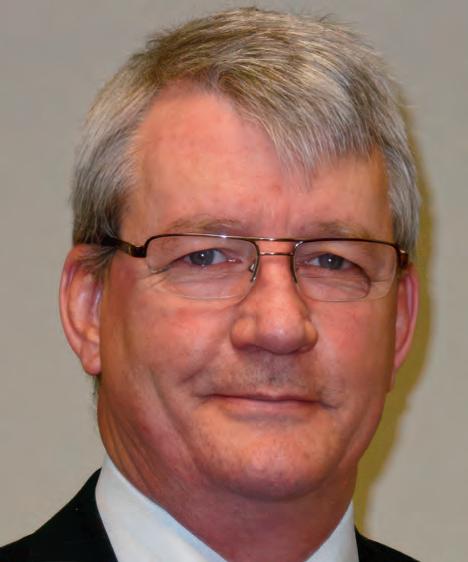
“The abject refusal of the jurisdictions to be mature and sit down with industry to discuss serious reform of the HVNL, despite numerous requests by SARTA and others, has been a great disappointment.”
STEVE SHEARER SARTA EXECUTIVE OFFICER

“At this point, the focus should not be on token changes to the process. We need to see promises delivered – real change in the form of safety improvements and productivity gains.”
WARREN CLARK
NATIONAL ROAD TRANSPORT ASSOCIATION (NATROAD) CEO
legislation across all states and territories under Commonwealth legislation, which would remove excessive and inefficient paperwork compliance for transport operators crossing state and territory borders.”
Scania Australia’s director of truck sales Benjamin Nye says he wants the review to continue urging the adoption of the Euro 6 standard on new trucks and buses in Australia “far sooner” than what is currently outlined.
“We would urge the powers behind the
HVNL to turn their attention to the admittedly significant job of driving older, dirtier trucks off our roads, particularly those plying routes in heavily built-up, high density population areas,” he told OwnerDriver
“We feel that more could be done to encourage the uptake of state-of-the-art active and passive safety systems and to retire older vehicles from our roads, if for no other reason than to preserve the driver cohort.
“With regard to fatigue laws, we again would support a harmonisation of fatigue laws across all states, as well as a more modern up-todate way of monitoring driving hours, such as mandatory electronic workbooks.
“Overall, we welcome the HVNL changes that have been implemented, but we feel that for the benefit of the industry, all road users, and everyone in Australia, there are some easily identifiable steps that could still be taken with relatively low economic impact but with high societal and productivity benefits. All it takes is the willpower to implement the changes.”
So what is the way forward with future updates to the HVNL? It’s clear the industry, for the most part, isn’t satisfied with the current review process. Clark and NatRoad say cutting access permits is a better approach to helping the industry in the short term.
“Transport ministers should ensure fundamental change is realised by committing to abolishing 90 per cent of access permits by 2028 and by prioritising the delivery of automated access,” Clark says.
“It’s critical that the new National Automated Access System delivers genuine change and is not just a layer of automation over the top of the broken permit system. Industry now faces a red tape burden of more than 172,000 permits just to do our job of keeping the economy moving, which has more than doubled in the past decade.”
A way forward may be to refine the process itself for tweaking the HVNL. Instead of conducting one major review, Road Freight NSW CEO Simon O’Hara suggests constant smaller reviews happening more often would ensure the HVNL consistently remains up to date with the times.
“The HVNL requires smaller reviews more often. To that end, instead of one review that takes six years or longer, and effectively needing to start again once a big review is finished, we recommend the NTC examine the option of reviewing parts or chapters of the HVNL more often to ensure that the legislation is fit for purpose,” he told OwnerDriver
“Our operators don’t service their vehicles every six years because they would soon go out of business, so we believe the same should apply to the HVNL legislation – smaller reviews happening more often with definite time frames in place to keep the legislation ‘finetuned’.
“As we head toward significant technological change for the operation of road freight, we need to keep up with the times, technology and practice to ensure that Australian freight remains productive and safe.”
It’s the one comment on the HVNL review process that has garnered support from the NTC. While the initial review may have been challenging for many in the industry, it may be the lesson the sector needs to better adjust governing laws in future.
“Looking ahead, as industry evolves, we recognise the need for more frequent updates to the HVNL,” the NTC spokesperson says.
“We agree with industry stakeholders that a focus on targeted, discrete changes will enable quicker and more effective improvements, enabled through current work updating the HVNL.”

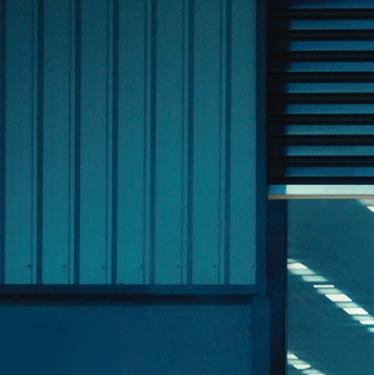














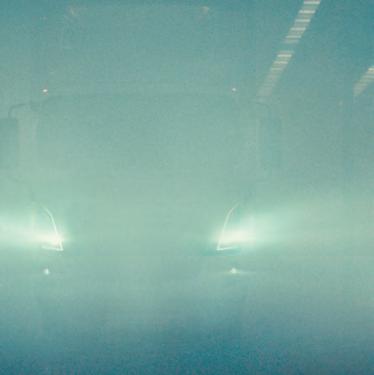











Road safety is a vital priority for those working in the trucking industry, and government planning should reflect this. With the rising number of road incidents and 1,324 lives lost on Australian roads over the past 12 months, the need for governments to urgently address road user safety and bring these worrying overall statistics down is clear.
The 27 per cent increase in the incident rate for heavy vehicles over 12 months should be enough of an incentive to governments to take the initiative and make some much needed changes. NatRoad is calling for a series of initiatives aimed at reducing the current road toll, including road improvements and educating road users.
NatRoad has outlined its approach to safety and other pressing issues facing the road transport industry in the ‘Road to 2028’, a document setting out priorities for NatRoad’s reform agenda. We need safer roads, higher skill levels in the workforce, trucking operators working with defined costs, increases in productivity and a move towards lower emissions. All the priorities outlined in ‘Road to 2028’ would contribute towards improving safety outcomes.
We are calling for higher standards on our major highways under the
AusRAP rating system. The current target, taking the rating of 80 per cent of roads up to three stars or above by 2030, should be raised to hit a higher target of 100 per cent by 2035. Investing to achieve this aim will not only bring better safety outcomes, it will improve productivity. Statistics show that raising the AusRAP star rating on a road by just one star leads to a reduction of road deaths on that road by 50 per cent.
NatRoad welcomes the $7.2 billion in new funding to bring the Bruce Highway up to a three-star safety rating. We are emphasising the need for urgency in this new funding to turn around the highway’s appalling safety record. As one of the nation’s significant freight routes, we also need to see a long-term plan and consistent funding into the future. We need safer roads, and one of the biggest issues among all road users is that of fatigue. Improving heavy vehicle rest stops must be a major priority, alongside bringing our major highways up to a higher standard. Including rest stops in the Australian

NatRoad communications are intended to provide commentary and general information. They should not be relied upon as legal advice. Our advisers are available to clarify any questions you have and provide the right advice for your business and workforce. Contact NatRoad on (02) 6295 3000.
Road Assessment Program (AusRAP) would put the safety and effectiveness of rest stops under scrutiny and, ideally, see them improved.
On that topic, we welcome the recent good news about a planned heavy vehicle rest area in Western Sydney, where the federal and state governments will put $40 million each to establish a purpose-built rest area on the greenfield site at Eastern Creek in Sydney. This is an example of the kind of spending required to address our members’ safety concerns and we’ll be working to ensure this new rest area provides key facilities that truckies need.
We also welcome further funding to improve heavy vehicle access in Tasmania and improve rest areas in Queensland, Victoria, South Australia and regional NSW, where $11.9 million is going towards increasing parking bays available to trucks and the marking of 14 new green reflector sites.
The other priorities laid out in ‘Road to 2028’ include a drive for a skilled workforce, reducing the uncertainty around the costs of doing business, increasing productivity and moving towards lower emission trucks, all of which will contribute to improved safety outcomes.
At NatRoad, we are calling for a Road Freight Workforce Action Plan to enable our members to employ and train people coming into the industry to a national truck driver standard. Cost uncertainty caused by others in the supply chain puts stress on truck operators and can create pressure to cut corners. Higher specification levels to meet Performance Based Standards requirements also include enhanced safety systems. As our members invest in lower emission trucks, they will also offer an improved safety level as they are introduced.
“The 27 per cent increase in the incident rate for heavy vehicles over 12 months should be enough of an incentive to governments to take the initiative and make some much needed changes.”


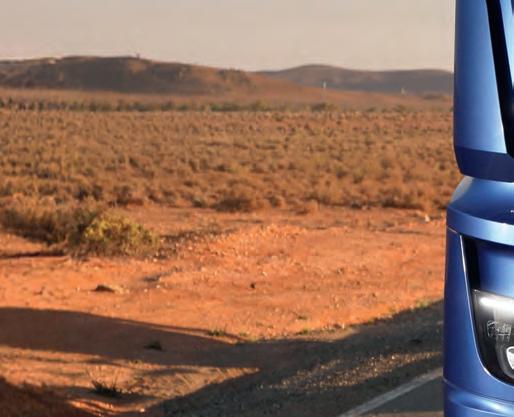
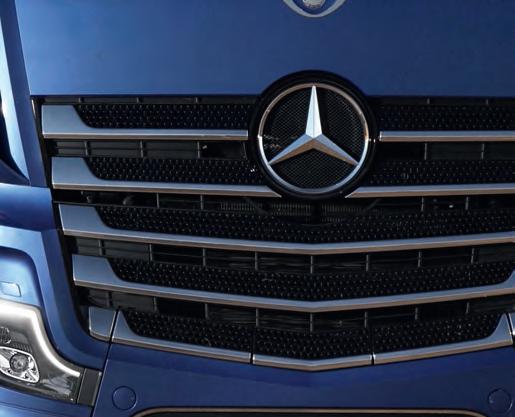




Select models from the Mercedes-Benz Actros StreamSpace range available with complimentary Best Basic 3-year/450,000km* service package for a limited time.







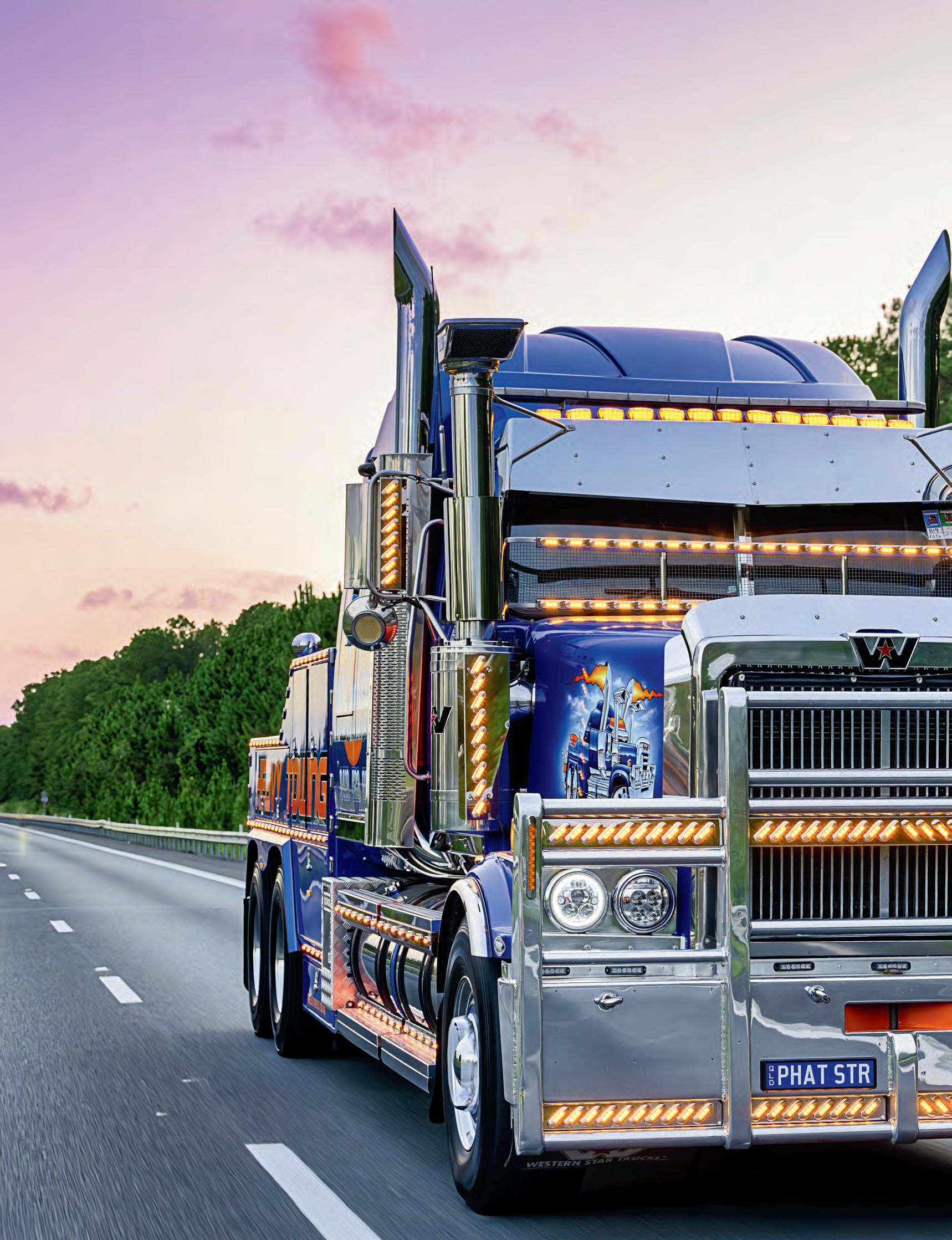
Laurie Williams is a well-known industry name, but Warren Aitken found out his latest ‘retirement role’ is an incredibly impressive Western Star tow truck


Laurie Williams and the Anywhere Truck & Machinery Heavy Towing Western Star you see on the pages before you are a bit of a contradiction. In the fact that, by visual appearance, this 2000 model 4900 Western Star is picture perfect. It looks cooler than the Fonz kicking a jukebox (if you don’t get that reference, then you’ve made me feel sufficiently old). It has a paint scheme that just snaps you to attention and it has more lights than a New York skyscraper. It is a truck everyone wants to see and everyone loves to see, unless of course you need Laurie and the Anywhere Truck & Machinery Heavy Towing Western Star.
That’s where the contradiction sets in, because everyone loves to see a cool tow truck, but no one ever wants to need a tow truck. If you need a tow truck, then things are not going well.
Rescue, repair or write-off, those are normally the reasons one calls a tow truck. Hence why I use the phrase contradiction when it comes to Laurie and his absolutely stunning Western Star. Technically I am contradicting my previous statement because I need Laurie and his tow truck for entirely good reasons – those reasons being that I wanted to share the story of this cool as ice Shining Star and the recent inductee into the Transport Hall of Fame who pilots it. I wanted to share his love of trucks, his passion for perfection and, most importantly, share his new second retirement gig at Anywhere Truck & Machinery Heavy Towing.
Laurie Williams is not a new name to either the industry or these pages. He has featured in shows, publications and plenty of online action with his legendary Western Star ‘Phat Cat’. One of the few Western Stars that is even cooler than this one, Phat Cat was the backbone of Laurie’s first retirement gig and, in between racking up millions of kilometres on our country’s blacktops, it became an almost unbeatable protagonist on the truck Show circuit.
Laurie’s attention to detail and knack for knocking up cool gear meant the hard-working Star deservedly picked up almost every possible award when he had it doing the rounds. Laurie also garnered a lot of attention a few years ago when he breathed life back into the old Bandag Bullet. With help from his Penske affiliations, and a lot of hard work from him and his mate, he unveiled the Bullet Burnout Truck, another truck that redefined the phrase ‘daaaamn’.
Left: Seeing the big Star on its way to work is even more impressive. Lights ablaze, it looks as good as it performs
Above: You’ve got to love a little bit of custom artwork. Phat Cat had its own self portrait and Laurie made sure Phat Star received the same treatment

Above: The hardest shot to take was a relaxed Sunday Laurie photo. He was happier if I let him get out of his work gear and relax with his big Star and little Posi Trac
Below: There is no shortage of space inside the Western Star either, the 68-inch sleeper that AAA Towing fitted ensures there is a comfy bed whenever Laurie or his drivers need it
Opposite middle: The shiny stuff isn’t solely restricted to the exterior. Check out the custom steering wheel and gearstick
“I was driving an old Dodge tow truck after I left school. It was back in the days where in order to be a towie you had to know how to fight.”
The Bullet Burnout truck was Laurie’s down time toy, while the ‘Phat Cat’ 4800 Western Star was the backbone on which he built his extremely successful company, North Queensland Truck and Machinery, where he hauled equipment, vehicle and machinery from Brisbane all the way up the coast. Laurie became synonymous with the Western Star brand, but that’s not to say he doesn’t appreciate the other classics.
The beautiful blue colour scheme he runs has adorned everything from International S-Lines to Kenworth T950s and even a couple of legendary FLB Freightliners. Those brands and several others helped Laurie thrive in the vehicle transportation game and now Laurie has raised the stakes again with ‘Phat Star’, while this second retirement gig has seen Laurie come almost full circle in his driving career.
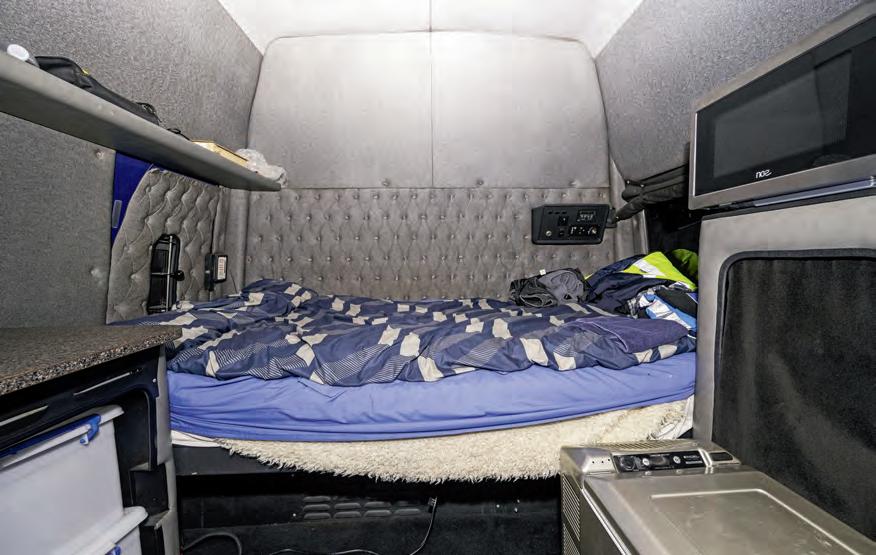
Allow me to explain the full circle and the second retirement gig. I mentioned Laurie has come full circle because, back as a kid, Laurie began his working life as a tow truck driver. As affable as Laurie is, getting along with the hierarchy at high school was a bit of a struggle and the two parties agreed that school wasn’t for him.
While Laurie may not have been enthusiastic in regard to his schoolwork, his work ethic was polar opposite. There was no cruise setting on Laurie – it was work your ass off, or sleep.
The result of that was, when Laurie left school at 15, he was straight into the workforce, and that workforce was towing.
“I was driving an old Dodge tow truck after I left school. It was back in the days where in order to be a towie you had to know how to fight,” Laurie told OwnerDriver
“It’s very different now, I started just towing cars and literally fighting for work. Now the government regulations have pretty much cleaned up that side of the job and I h ave gone from cars to towing trucks.”
Laurie spent over a year behind the wheel of that Dodge tow truck, saving all the coin he could in order to buy his own truck and work for himself. While we are going to focus on the D-series Ford he purchased and created Laurie Williams’ Car Carrying with, it would be remiss of me if I didn’t mention the first truck that Laurie actually bought. It was a might Daihatsu Delta, which he used to cart scrap metal with – I’m not sure how much you could get on a Delta, but I am sure he made it work.
The roots of Laurie’s success came about when he started carting cars out of the auctions with the secondhand D-series Ford. There was plenty of work for a young man willing to get into it and Laurie threw himself into his work and took whatever he could. He learnt very early on to take pride in his work, be upfront and honest, and when he didn’t know something, to ask. Those traits have stayed with Laurie throughout his working life and back then it saw the young man grow his business to eventually be running a fleet of 14 transporters. His
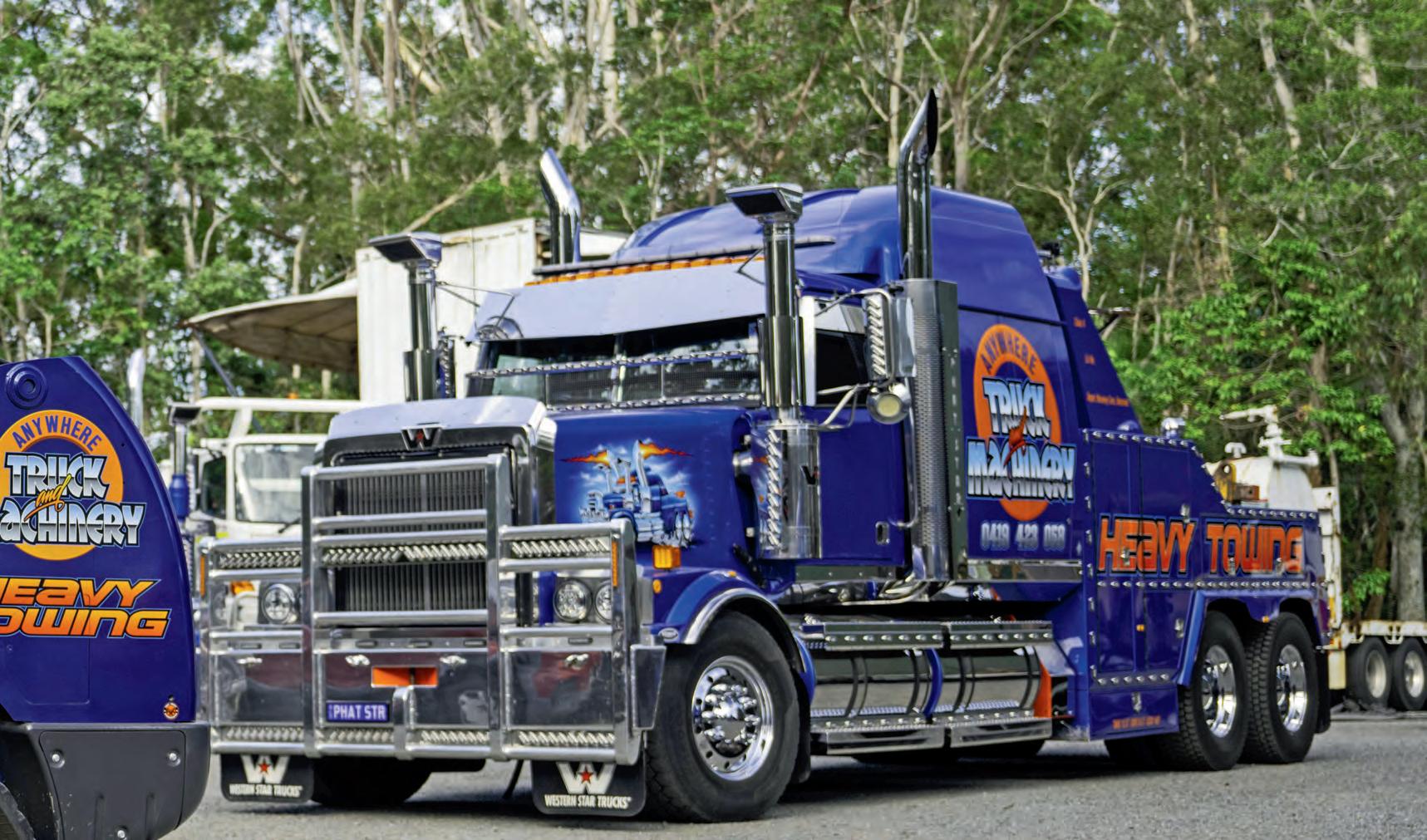
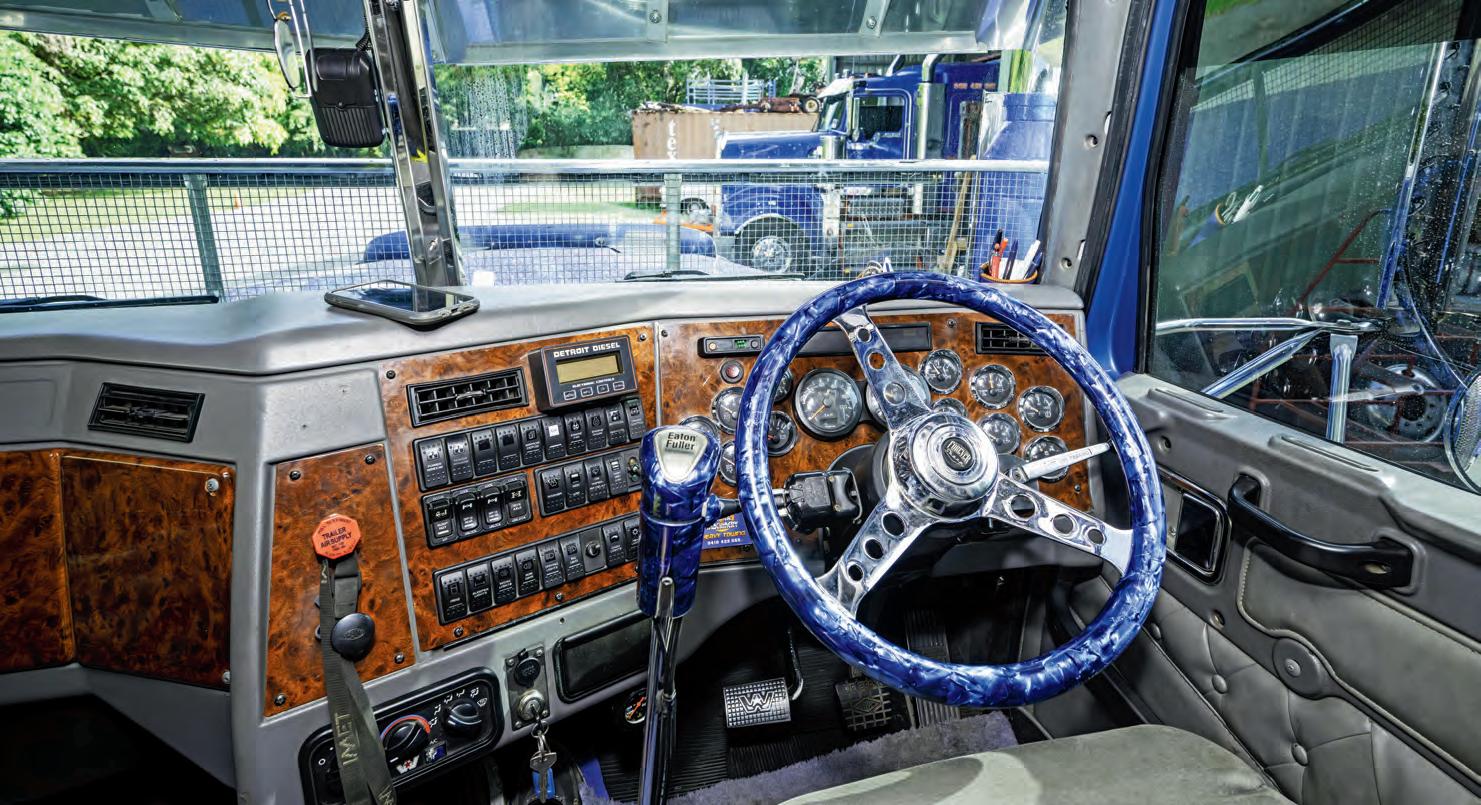
emphasis eventually moving away from direct towing to focus on multi-vehicle car carrying. In the year 2000, Laurie sold that business and took early retirement. His years of almost 24/7 work had earned him that right.
It is fairly obvious by the fact I’ve already spoken about ‘Phat Cat’, North Queensland Truck & Machinery and Bullet Burnout Truck, that Laurie took to retirement about as well as Jimmy Barnes after his 14th final tour. After years of working nonstop, there was no way he was out to pasture, and he began a new venture, one that would result in the creation of Phat Cat, a focused fleet of light and heavy rigid vehicle movements and eventually the resurrection
of the coolest burnout truck in Australia. That business was North Queensland Truck and Machinery Movements.
No matter how successful and how expansive Laurie’s fleets got, he was never one to replace the driver’s seat with an office chair. He has always been at the coalface and, as such, probably has more kilometres under his belt than I have hot dinners – and you know I have had a few of those. That time on the road takes its toll on everyone. Towards late 2023, it reached a pinnacle for Laurie, with the end result being exactly what you see before you now.
“I was in Phat Cat doing a run up to
Townsville and back. I had a road train on going up the inland road and this truck came round the corner barely on his side of the road,” Laurie says.
I am not going to quote Laurie word for word, as there are children in earshot. Suffice to say, many of us can relate to experiences like that, and it was the tipping point for the veteran truckie.
“I had just had enough, I knew I had to get off the road,” he says.
Coincidently, preceding this incident, Laurie had been dining with an old friend up in Townsville in Shaun Edwards from Aitkenvale Towing.
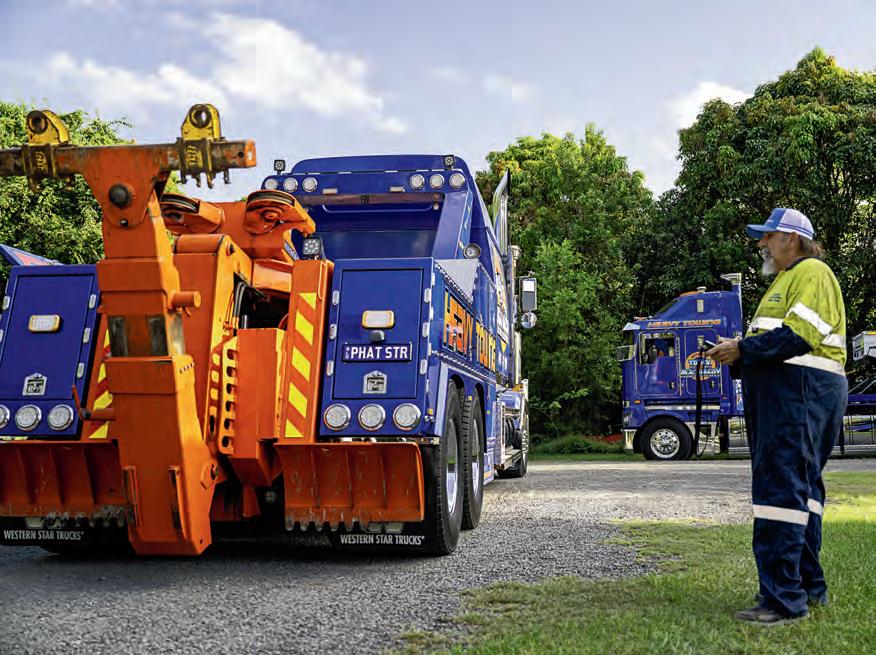

“It was actually my birthday and I was in Townsville, I went out for dinner with Shaun and he mentioned his old man was thinking of selling the Western Star Tow truck they had,” he says.
“On the way home, I had that close call and I just thought I had to get out of this, maybe I’d buy a tow truck and do it as a retirement job. So, I rang Shaun and said would you sell it to me?”
Being that 87 per cent of Laurie’s DNA is trucking, you can understand how his version of retirement is basically working, just not as much. It was also fitting that Laurie would look to his origin story for that retirement job –retiring in the same job he began his working life with.
“I just figured if I could get the tow truck then it would be my retirement job. I’d do a bit of trade work, and slow down,” he says.
We will get into how misleading, or maybe just optimistically naïve, Laurie’s comments were later. Let’s take a look at the ‘Retirement Truck’ that you see before you first. The 2000 model is an American import that came over to Australia as a short wheelbase day cab. It was built by AAA Towing in Melbourne who stretched it out,
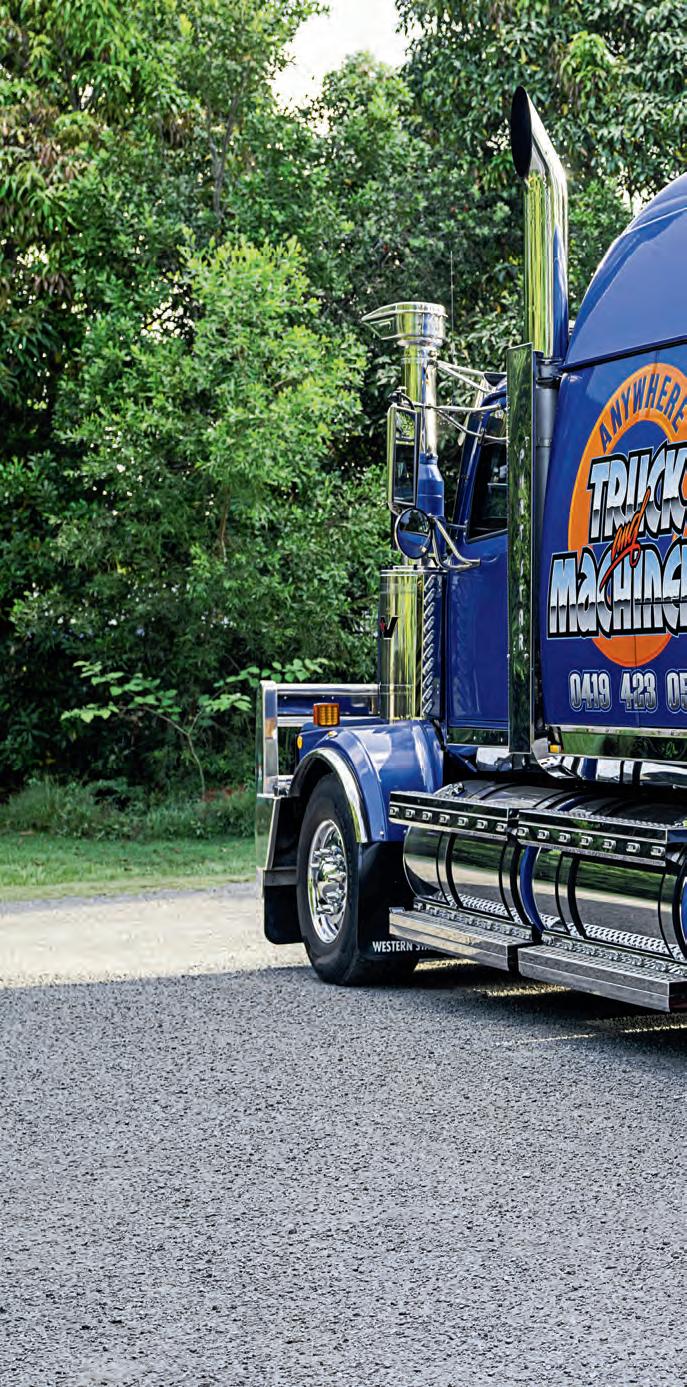


“For years I saw that truck up in Townsville, I always looked at it and said I wanted that truck.”

double railed it and put a whole new back end in it, as well as the 68-inch bunk on it. The team also mounted an Ekebol under lift wrecker kit to the back end.
AAA Towing worked the big girl for a while, before the tow truck caught the eye of the owners of Aitkenvale Towing up in Townsville. They purchased the Star and brought it up north where they repainted it into the familiar Aitkenvale Towing green and white colours. Over the next 14 years of the Star’s life, it racked up a mere 170,000 kilometres working in the North Queensland heat.
It was while the Western Star was up in North Queensland that it had previously come to the attention of Laurie. Though Laurie was full on with North Queensland Truck and Machinery Movements when he first saw it, and was in no need of a tow truck, the big Star still caught his truck-obsessed eye.
“For years I saw that truck up in Townsville, I always looked at it and said I wanted that truck,” Laurie laughs.
“Now I have ended up with it.”
That birthday dinner with Shaun morphed into a career change for Laurie, even if he didn’t know it at the time. Once he got home, secured the deal with Aitkenvale towing, and sorted out the paperwork and obligations around his towing licence, Laurie flew up to Townsville to pick the truck up.
“I wanted a change from what I was doing, I needed to slow down,” he says.
“So, we did the deal and a couple of days later I flew up to Townsville and picked the truck up. I hooked up an MAN for a client and brought my first job back on that first run.”
While the old girl hadn’t really run up the kilometres associated with a 24-year-old truck, it was far from







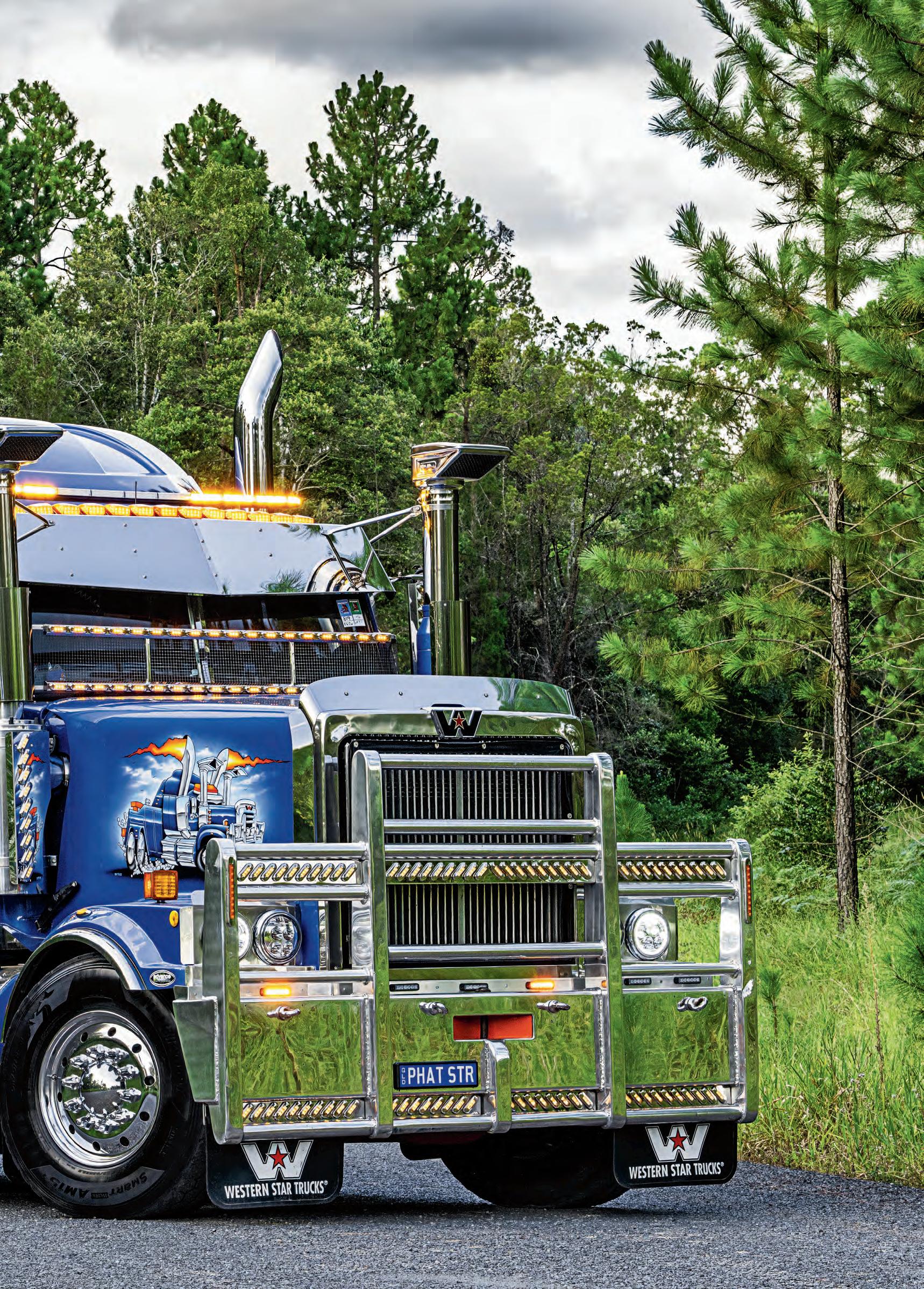
“I’ve now got the two big wreckers, the Western Star and the 909.”
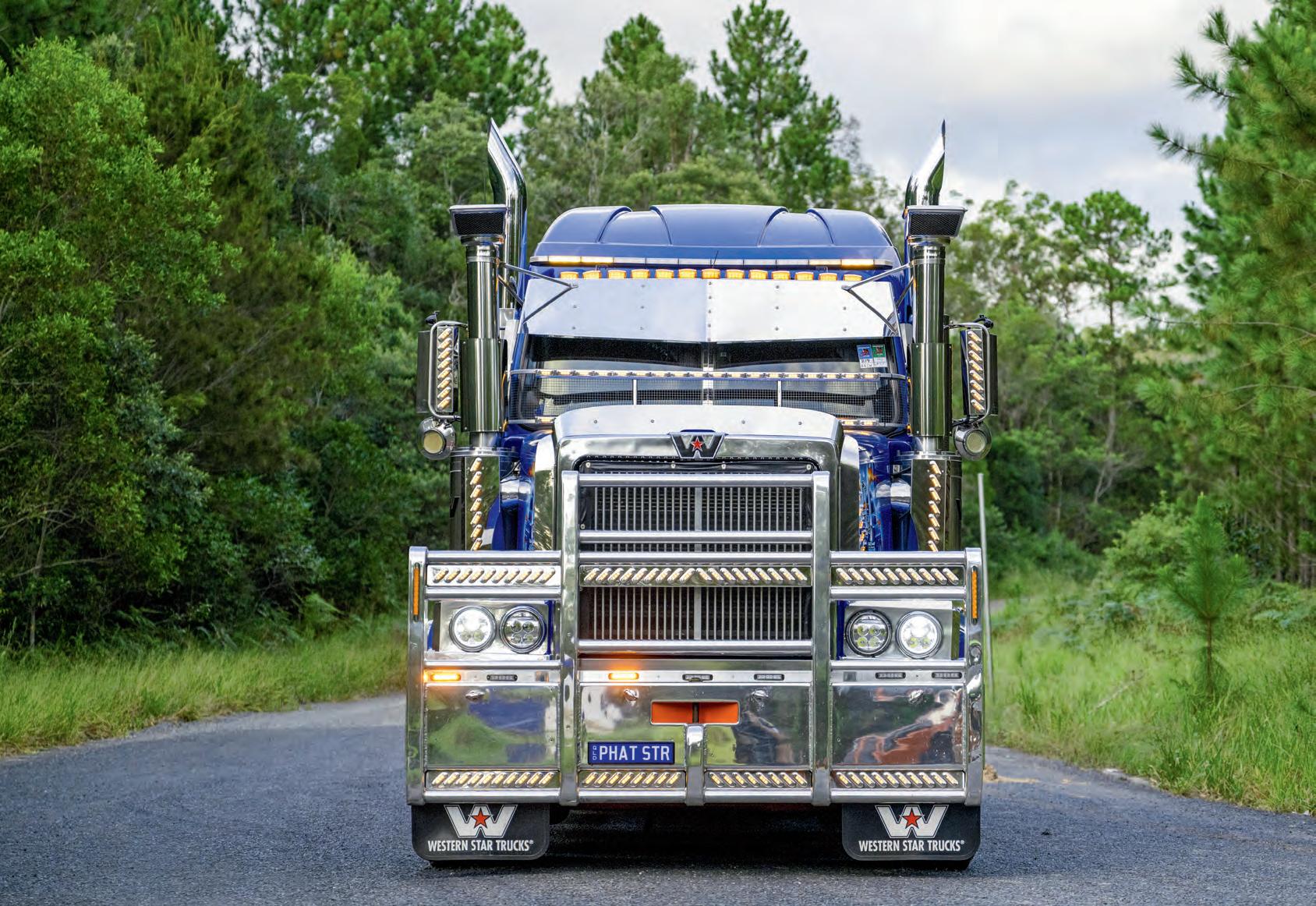

Top: Here’s your chance to start counting, check out all the LEDs on the front of Phat Star
Above: Another added addition from Rocklea Truck Electrical, the air cleaner flares with just a few more LEDs
Right: Rocklea Truck Electrical added the wrapped tanks, plenty of LEDs and a heap more bling to make the Western Star really sparkle
Opposite top, L to R: Start counting, there are LEDs galore on the big Star; Retirement. It’s a word Laurie throws around a lot, but with his reputation and professionalism, his work has increased, as has his tow truck fleet. Now he has this stunning T909 carrying the banner as well
Laurie Williams’ standards. To start with, it was still in Aitkenvale Towing’s green and white colours. There were a few lights on it, and a couple of shiny bits but, all in all, it was about as far from a Laurie Williams truck as the man himself is from retirement.
Job number one was to send the truck off to Advanced Tech Auto Body Repairs for a complete respray. Hold on, that’s a bit of a simplification really. Phil, Kirsten and the team at ATABR didn’t just do a respray, they tore the big Star down and rebuilt everything. Every part of the truck came apart and it was a full ground up rebuild, repainting the chassis, the body, everything, as well as replacing anything it needed. Laurie wanted the tow truck to be better than new, and while the 11m chassis pushed the limit of ATABR’s paint booth, the job got done and got done beautifully.
Now, no Laurie Williams truck is complete without shiny bits and an abundance of lights. There is no misplacing a Laurie Williams truck in the dark – he can’t drive near the coast for fear of confusing the passing ships. Hence off Phat Star went to Rocklea Truck Electrical for the additions – the bullbar alone sports 54 LEDs. I ran out of fingers and toes counting the rest. Credit also goes to South-East Queensland Tilt Trays who added all the LEDs they had in stock to the body of the tow truck. I reckon you could run one of those ‘guess the lollies in the
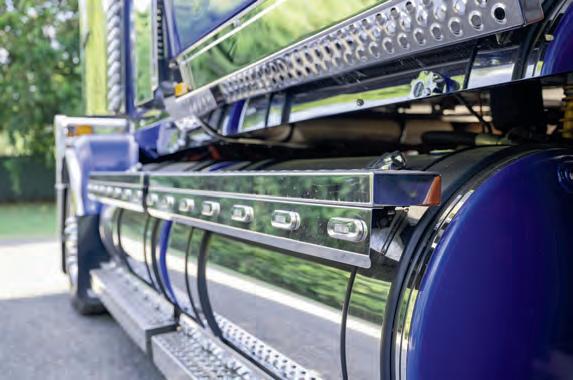
jar’ competitions with Laurie’s lights being the lollies and the Star being the jar. Lighting up ‘Phat Star’ is a carryover from Laurie’s legendary ‘Phat Cat’ Western Star and another iconic feature is the souped-up cartoon self-portrait. ‘Phat Cat’ has it on its bonnet and Laurie saw it as fitting to get one drawn up for ‘Phat Star’ as well.
It took a fair bit of time for the transformation to be complete, in fact it was over three months before Laurie’s retirement rig was ready for him to jump into. That gave him plenty of time to de-escalate his other trucks. He slowed his workload down, sold off a lot of gear and retired Phat Cat, all in preparation for his retirement role. You may have observed the number of times I have used the term retirement. There is a point to that, mainly it’s sarcasm. If there was a sarcastic font I would be using it with aplomb throughout this article.
This is Laurie’s second attempt at retirement and he has been about as successful as his first attempt, due completely to the fact that when he sets his mind to a job, he does it professionally and thoroughly. These are two attributes that customers love, meaning Laurie has found himself not just busy, but expanding and hiring as his fleet has grown.
“I’ve now got the two big wreckers, the Western Star and the 909,” he says.
“I’ve got two Macks – one is a 6-wheel drive with a boom and under lift. I use that one as my bush truck when you have to go into the rough stuff to get something. I’ve got three super tilts, two bogie drive tilt trays and a small Peterbilt tilt tray.”
That’s not including the accessories like his Posi Trac and winch for clean-ups, the custom dolly for towing trailers and the shed full of other add-ons, all of which seem to be steering Laurie away from retirement.
“I really enjoy it, it was meant to be a retirement job and I believed I would slow down,” he says.
“But it has just grown, and I am loving the challenges of it. You really have to use your head. All my years of carting everything helps, but I am still learning a lot and when I don’t know I just ask. Often when you tow a t ruck back to the dealers, you’ll ask them things and
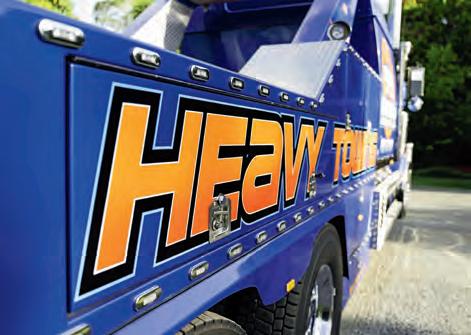
they are happy to help.”
Laurie has also found his tendency to treat every job as if it is his own equipment has seen his workload blossom.
“I had to do a recovery the other week of a 17-ton Roller that had rolled,” he recalls.
“Once I got it all hooked up, I picked it up so gently, winching it back over, it didn’t even drop. No broken glass or anything. They were able to take the injectors out, drain the oil, wound it back over and put it straight back to work.”
While doing the job well is second nature, the paperwork side and dealing with SWMS regulations are a learning curve, but again, learning new stuff has not deterred the retiree. Yes, sarcasm again.
“I’m not going looking for work, I’m not an ambulance chaser. This is still a retirement job,” he confesses.
Although I question that, as he has now become fully licenced for accident work too.
“I only did that because the customers I have want me to be fully certified and able to do all their work if needed,” he says.

That has seen Laurie invest in a holding yard and basically quadruple the amount of paperwork he has, as well as have every vehicle certified and checked off.
“I think what people like is when they call Anywhere Towing, they get me. If I can do the job I will, if I can’t I let them know. But when they ring, they deal directly with me,” he says.
Even as we sit at Laurie’s house on the Sunshine Coast, his phone rings and his retirement role kicks in again. Thankfully we had already managed to snare a few shots of his tidy Star before he was back into work again.
While I requested a ride along for a few more shots, I respected Laurie’s professionalism and approach when he shot me down. Like my opening statements, everyone wants to see the big Western Star, but no-one wants to need him. As such, Laurie was insistent that working shots were restricted to him showing me how the big rig operates.
It’s that respect for his customers and their gear that has seen this stunning Western Star retirement rig turn into a full-time, hands-on affair. I’ll just happily sit back and enjoy watching the big Star work.






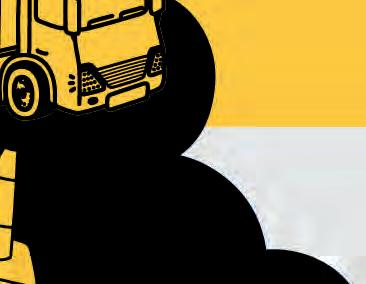











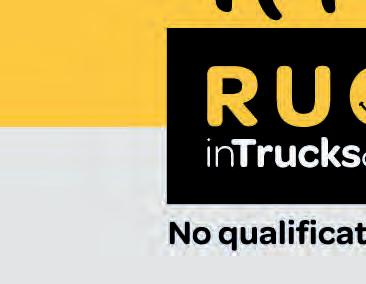


The TWU calls for the transport industry to ensure the cash-in-transit sector has a viable future in Australia
Cash still has a huge role to play in Australian society.
While that’s still the case – and it will be for several years to come – banks and retailers have to step up to ensure that can happen efficiently and safely.
One of the game-changing powers of new transport reform laws is the ability to rope in clients at the top of supply chains. For too long, those clients have been able to call the shots, undercutting and squeezing contracts while transport operators and transport workers are under pressure to work harder and longer. That’s true just as much for the cash-in-transit industry as it is in retail supply chains.
Right now, the cash-in-transit industry faces an existential threat. With a $50 million lifeline for Armaguard set to run out this June, there is an urgent need for a longterm solution to protect over 1,400 jobs and prevent the industry from total collapse.
Last month, the TWU filed an application in the Fair Work Commission, calling on banks to save Armaguard and protect the cash-in-transit industry.
For too long, banks and supermarkets –major clients at the top of the cash-in-transit supply chain– have had a direct impact on the crisis in the industry through their unsustainable contracts with Armaguard. This has meant workers are stuck with poor pay and conditions and face severe safety risks.
Using the new laws, we’ve made an application that calls on banks to ensure driver safety through decent PPE standards, safe operating procedures, decent pay and job security and critical vehicle standards.
Cash-in-transit workers have long faced threats to their safety, frequently encountering violent hold-ups.
At Glenn Sterle’s inquiry into the trucking industry we heard some of the worst instances – like from Noel Blue, a long-time cash-in-transit worker and TWU member.
He detailed the psychological toll on his colleagues, many of whom have endured armed robberies and attacks.
“I’ve watched my colleagues (suffer) whiplash, be shot at, killed, maimed. It’s a dangerous job we do,” Noel says.
There have been at least 130 armed robberies involving CIT workers. They deserve better.
As a first step, our applications have called on for an industry conference where Armaguard, banks, retailers and members of the TWU can convene and chart out a plan that tackles fair contract terms, driver safety and a long-term solution to keep the cash-intransit industry going.
A lot of Australians still rely on cash for
everyday transactions, especially older Australians and those in rural or regional areas. The government recognises this too. Starting in 2026, businesses that sell essential goods and services will be required to accept cash.
That makes it even more important for banks and retailers to pay up for the future of this industry and improve conditions for workers, so they can do their jobs safely.
When the roads are your workplace there are many different pieces of the puzzle when you’re talking about safety. We’ve called on banks to ensure decent vehicle standards in cash-in-transit.
Elsewhere in road transport? Heavy vehicle rest areas are a huge part of safety. And while we’re tackling the root causes of fatigue and safety issues through the new transport reform laws, those rest areas are vital.
The Minns and Albanese governments have announced a $40 million investment to establish a dedicated heavy vehicle rest area in Western Sydney – its first ever. It came about through Senator Glenn Sterle’s Heavy Vehicle Rest Areas Steering Committee, ensuring the decisions on where to improve rest areas, and put in place new ones, are decided by people who are actually out on the road.
What’s clear is that transport is such
KAINE is the national secretary of the Transport Workers Union of Australia. Contact Michael at: NSW Transport Workers Union, Transport House, 188-390 Sussex Street, Sydney, NSW 2000. twu@twu.com.au
a diverse industry, capturing so many people, that to fix issues which have been entrenched for decades you need to look at all angles.
Applications like we’ve made in Armaguard to bring in the top of the supply chain are one. Ensuring decent rest areas, in places where drivers need them, is another.
Recently there was also another huge industry win with the launch of unfair deactivation protections for gig workers and unfair contract terminations for ownerdrivers in Australia.
With owner-drivers protected against unfair contract terminations, clients can no longer arbitrarily end contracts to push standards down. That’s a hugely empowering right.
If you can be sacked or have your contract ended at will without any way to challenge it, then companies can impose whatever pressures they want on you – that’s not only unviable for a business, it’s deadly dangerous. Having a right to challenge unfair contract terminations gives drivers huge power to make positive change.
For gig workers, these automatic rights are also a game changer because they can now access the Fair Work Commission to challenge unfair deactivations and have the right to communicate with a human representative to address their case.
On the day the protections came into effect, I spoke with several gig workers who’d been deactivated in the past. Ayca, a food delivery driver, was kicked off her account and said she felt like she was “in a hole” after it happened – treated like a robot, with no income and no understanding of what she’d done wrong. Rideshare driver Jay talked about friends of his who’d been kicked off because passengers wanting a free ride had made false complaints.
A survey last year by the McKell Institute, TWU, and TEACHO, which surveyed over 1,000 food delivery, rideshare and Amazon Flex drivers, found that one in four gig workers have had their accounts deactivated. Half of them listed account deactivation as one of their top worries, and
“Right now, the cash-in-transit industry faces an existential threat. With a $50 million lifeline for Armaguard set to run out this June, there is an urgent need for a long-term solution to protect over 1,400 jobs and prevent the industry from total collapse.”

about one in three workers use multiple apps just to protect their income and avoid unfair deactivations. Having these new rights in place protects gig workers, and it protects the rest of the industry from going down this unsustainable path.
People in this industry will always know best when it comes to making things safer and fairer. Over several decades the balance has shifted too far towards those clients at the top of the supply chain, reaping enormous profits while workers and operators struggle to make ends meet, or are killed on our roads.
With these new tools we’re starting to restore the balance, step by step.









































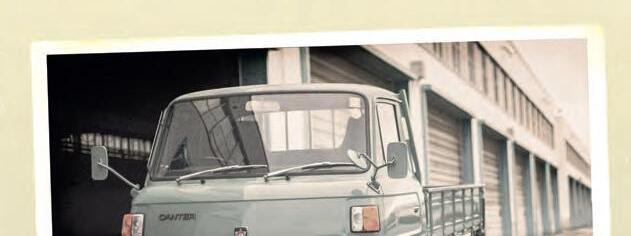





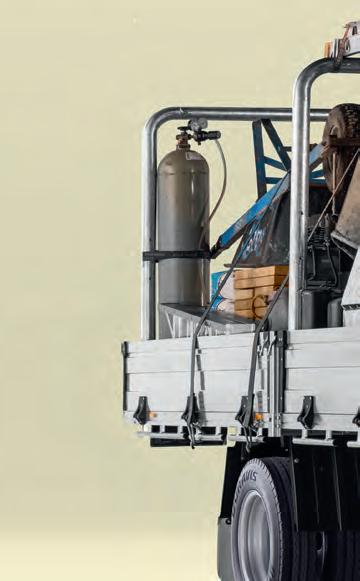








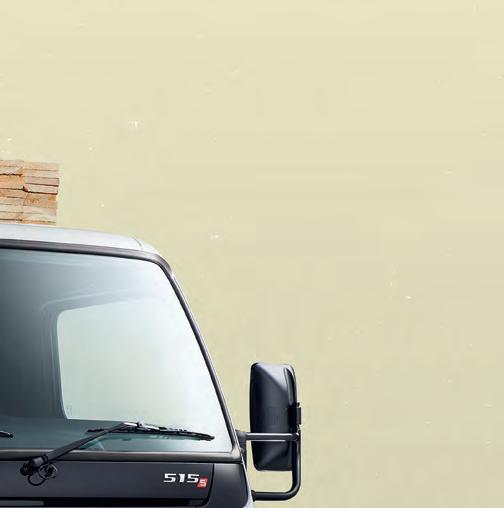
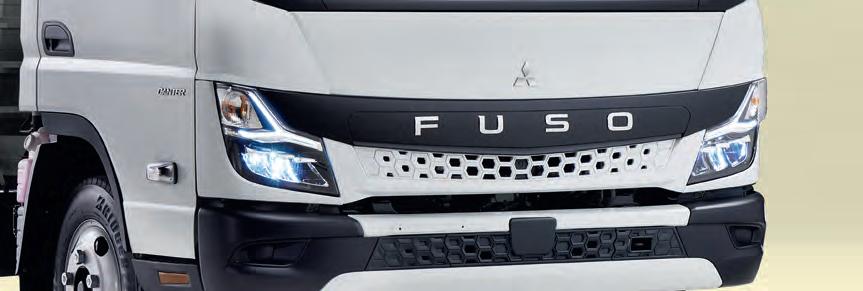




When the Fuso Canter first hit Australian shores, it delivered on a promise: a safe and practical work truck you could rely on to get the job done. And get jobs done it did. Since 1971, Aussies have been turning to an ever-evolving range of Fuso Canters for all kinds of jobs – cabs to carry crews and pantechs to help with moves, trays for loading and tippers for disposing. The work carries on with our new-look Canter.


An updated design combines brighter LED headlights, sleek exterior styling and an enhanced 8” multimedia touch screen with the DNA of Australia’s hardest-working light-duty truck. Add in class-leading payload across most models, advanced active safety systems* and impressive 30,000km service intervals, and you have everything that you need to get the job done.


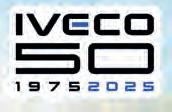

OEM IVECO has come a long way in 50 years as the manufacturer celebrates a half-century
Heavy vehicle manufacturer IVECO is celebrating 50 years in the industry since its foundation in 1975.
The brand began when leading European industrial vehicle manufacturers Fiat Veicoli Industrali, Unic and Magirus-Deutz came together to form the company, setting it on a course to become one of the world’s largest and most recognised commercial vehicle brands.
Today IVECO – an acronym of Industrial Vehicles Corporation – has an established global presence with a manufacturing footprint that includes seven production sites and eight research and development centres in Europe, Asia, Africa, Oceania and Latin America. These facilities are supported by an expansive dealer network with 3,500 sales and service outlets supporting customers in over 150 countries.
On its 50th anniversary, IVECO is honouring the past, celebrating the present and embracing the exciting opportunities that lie ahead as it ‘drives the
road of change’. To mark the occasion, a series of events will be held throughout the year including a four-day celebration at its Turin, Italy headquarters under the theme ‘50xBeyond’.
IVECO Group president of truck business unit Luca Sra says IVECO has had many achievements in its history, with there also being numerous future aspirations.
“Over the past 50 years, IVECO has thrived through collaboration and innovation. Our success is a testament to the collective effort of everyone who has been part of our journey – our employees, dealers, customers and partners,” he says.
“Together, we have built a brand that is ready to face the challenges of the future. We have contributed to shaping the history of commercial mobility and we feel empowered by our legacy and the strong foundations we have built.”
Through its unwavering commitment to sustainability and innovation, IVECO has long been
a pioneer in the transportation industry, pushing the boundaries of eco-friendly mobility, allowing customers to reduce their carbon footprint without compromising on performance. The company is uniquely positioned as a global leader in the field of alternative energy solutions, and it says it is the only manufacturer to provide natural gas technology across its entire range of light, medium and heavyduty vehicles. Driven by its multi-energy approach, IVECO continues to invest significantly in the development of alternative powertrains, including electric and hydrogen technologies, reinforcing its leadership in the transition to sustainable transportation.
IVECO entered the Australian market in 1992 after acquiring International Trucks and gradually expanded its model offerings to our market. Today IVECO boasts one of the broadest product ranges available in Australia, spanning from passenger car licence vans and cab chassis trucks through to B-double capable prime movers.
Complementing its roadgoing range is a line-up of extremely capable off-road vehicles including Daily 4x4, Eurocargo 4x4 and T-Way 4x4, 6x6, 8x4 and 8x8 models.
All models combine the latest technologies from Europe with extensive local testing and engineering to ensure vehicles thrive in demanding local conditions. IVECO is also currently trialling its battery electric eDaily models with prominent Australian fleets.
IVECO vehicles are supported by a nationwide dealer network of 60 outlets (including service and parts locations) and are backed by comprehensive standard warranties with extended warranty options up to seven years or 1,000,000kms model dependent. For an easier and cost-effective ownership experience, IVECO also offers maintenance and repair packages and complimentary ‘IVECO On’ Telematics on selected models across the range.












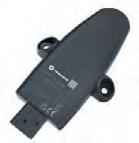
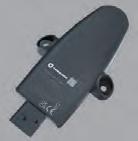



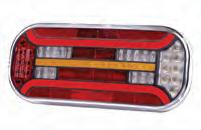



POLITICS Senator Glenn Sterle









When I’m not required in Canberra, one of my favourite things to do is get back behind the wheel of a truck and get out there on our highways and by-ways. This is the best way for me to keep my finger on the pulse of what’s happening out there on the roads and with the conditions our essential truck drivers are dealing with.
It’s not a secret to anyone that my favourite run is driving from Perth and working through the Kimberley. When I was a road train operator, the road was dirt from the De Grey River all the way to the Broome-Derby turnoff, it was then single lane to Fitzroy and then dirt to Halls Creek. Driving on those conditions back in the day without aircon and on an unsealed road for that long was character building to say the least.
And while driving conditions are definitely more comfortable these days, it has taken a long time for roads and infrastructure around the Kimberley to get to the standard that they are in today. That, in large part, is thanks to investment from the Albanese federal Labor government.
Since getting elected in 2022, the Albanese Labor government has seen the completion of six major infrastructure projects delivering real outcomes for road safety and productivity across the Kimberley including: • $53.55m for the Great Northern Highway – Brooking Channel Bridge which saw upgrades to the Great Northern Highway with the construction of a two lane bridge over the Brooking Channel at Fitzroy Crossing.
• $12.51m for the Great Northern Highway Upgrade – Ord River North Section (Stage 1). This project saw the widening, overlay, reconstruction and realignment of eight kilometres on the Great Northern Highway.
• $46.6m for the Great Northern Highway Upgrade – Ord River North Section (Stage 2). This project saw the widening and overlaying of 11.2 kilometres of road along the Great Northern Highway and construction of a new bridge over Tickalara Creek including approach works and demolition and removal of the existing bridge.
• $35.2m for the Great Northern Highway Upgrade – Ord River North Section, Stage 3 project which comprises of two stages includes several stages. Stage 3a which includes widening and overlay, reconstruction and realignment of the Great Northern Highway, replacing and extending culverts, improving off-road drainage and constructing road safety barriers, and Stage 3b which includes

widening and overlay, reconstruction and realignment of the Great Northern Highway, incorporation of a north bound passing lane and Frog Hollow Bridge.
• $97.2m for the Regional State Road Safety Improvement Program which will undertake 34 low cost widening and safety projects across the Great Southern Region, South West Region, Mid WestGascoyne Region, Goldfields-Esperance Region, Wheatbelt Region, Pilbara Region, Kimberley Region and Metropolitan Region. Works include widening of sealed shoulders to current formation and installation of audible edge lines.
I am extremely proud that these projects have all been completed and we have a separate program of works that are ongoing which include other very important infrastructure investments including upgrading the Tanami, upgrading the Great Northern Highway by replacing a single lane bridge with a two-lane bridge at Arthur Creek and upgrading four floodway’s to bridges between Nellie Springs and Sally Downs Well between Broome and Kununurra as well as a suite of other regional road safety initiatives.
One project though that the Albanese government has been instrumental in, and which I am extremely proud of, was the investment to upgrade the Fitzroy Bridge in Fitzroy Crossing after it was damaged as a result of the horrendous floods at the beginning of 2023.
The original bridge was damaged beyond repair during the largest know flood to date, considered to exceed a one in 100year flood event from ex-Tropical Cyclone Ellie. This event caused significant damage to roads and bridges, cutting off access to communities and causing disruption to locals, tourists and the freight industry.
Jointly funded by the Australian government through the Disaster Recovery Funding Arrangements, a new Fitzroy River Bridge was built to be stronger and deliver long-term resilience during weather events.
The building of the new Fitzroy Bridge was and remains a game changer as it led to the creation of good jobs for local workers while also delivering long term productivity and road safety benefits to the Fitzroy Valley and more broadly the Kimberley.
The new bridge is an incredible piece of road infrastructure and I am very proud to be part of a government that takes investing in regional roads and road infrastructure, especially in regional WA and the Kimberley, very seriously.







WITH OVER 30 YEARS OF EXPERIENCE SUPPLYING TO THE HEAVY TRUCK AND BUS BULLBAR AND BUMPER BAR INDUSTRIES.
ACM can recommend a bumper or bullbar to suit your specific requirements. With a huge range on offer, we can match a product to your vehicle that will not only perform to the highest level but is backed by quality materials and manufacturing processes in the industry.
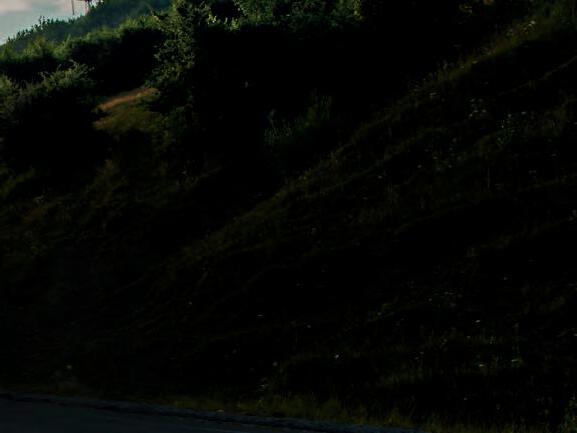
After being convinced by friends to start a trucking company, the secret to Channi Dhillon’s success at JAAP Transport is the latest range of DAF trucks he’s adding to his growing fleet
Peer pressure isn’t normally seen as the right thing to do. In school, the majority are taught to resist the temptation to conform with groups of people. However, in Channi Dhillon’s case, peer pressure from his friends laid the foundations for him to start a flourishing transport business.
“Back in 2008, all of my friends were in the transport sector, running vans and operations,” Channi told OwnerDriver.
“When we would get together all the time, they would tell me to start my own business and to jump into the game of transport so I could follow what they had done.”
Eventually the peer pressure became too much, and Channi was wrangled into an industry that he is now completely hooked on. Back in 2008, Channi started with baby steps, buying his first van and completing general courier work around Victoria. Over the course of three years he built the business up, adding more vans into the operations.
Then, in 2011, his friends went one step further, convincing him to take the leap into trucking.
“In 2011 I wanted to grow, and the vans were limited to just being able to complete courier work,” Channi says.
“My friends in transport were doing both interstate and local work at the time and they were advising me on how it all worked and how I could secure contracts. It was enough to convince me to try it for myself, so I started my own company in 2011 in JAAP Transport.”
Nowadays, JAAP Transport has roughly 35 prime movers and 40 trailers in its fleet, running a combination of general freight around Australia from its home base in Somerton, near Melbourne Airport. The business transports items such as
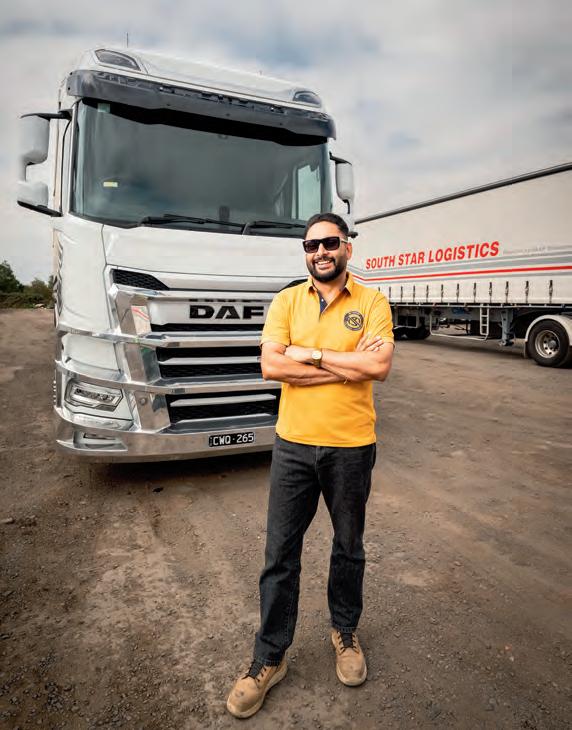
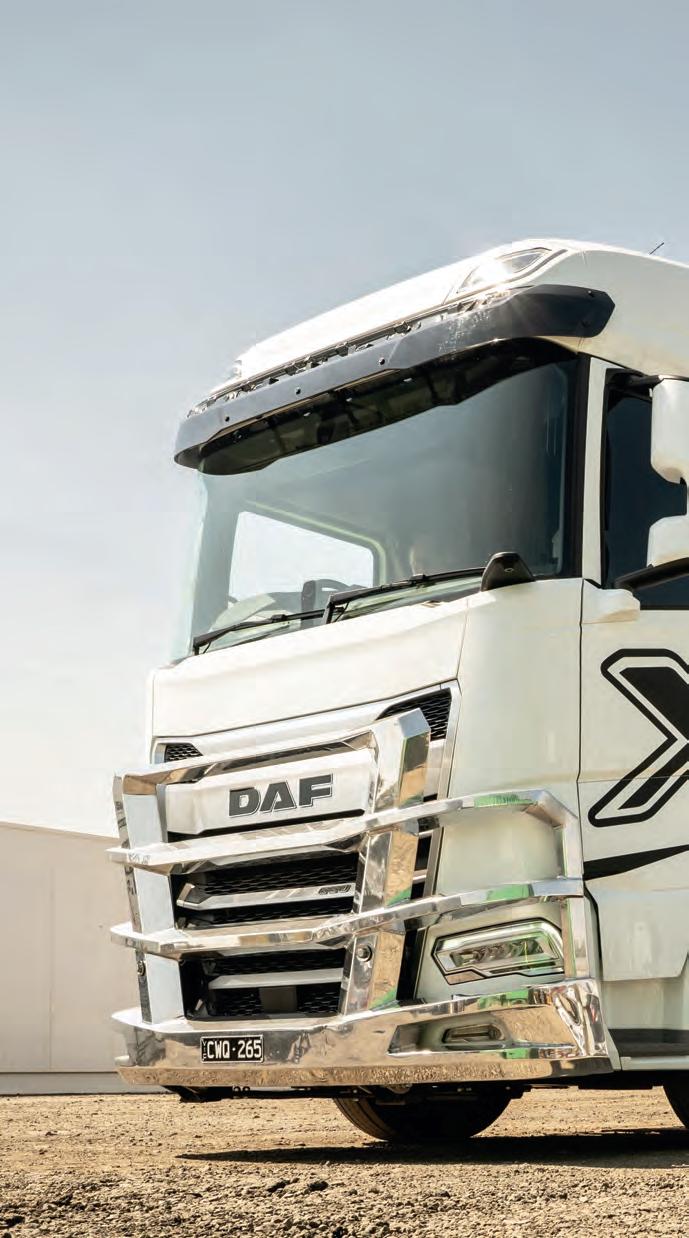
equipment, supplies and furniture, as well as abstract items, while it also specialises in receiving and transporting palletised goods and loose stock.
While its bread and butter is along Australia’s eastern coast, Channi’s team also distributes across the entire country. It all started with a single contract that allowed Channi to grow JAAP Transport into the empire that it is today.
“I started working after getting my first contract with VISY Logistics – VISY has helped me a lot and I’m lucky to still be working with them now,” he says.
“From there, VISY helped me set up new contracts and runs along the way, so I could keep growing. Every time I did this I would add new trucks to the fleet, starting with prime movers and semi-trailers. Over time, I have added B-double trailers, and I’ve never stopped growing.”
Channi’s speedy evolution with JAAP Transport means he has had to constantly replace trucks every two or three years. It means he can’t calculate how many trucks he has had in total in his fleet to date.
With multiple contracts in place with major companies all over Australia, Channi’s team is revelling in completing general freight tasks. He says the secret to his success is a popular ingredient in the transport industry.
“It’s all come down to my hard work – I have forged very good connections with the right people by working hard,” he says.
“I’ve helped a lot of my companies since the very first years of JAAP Transport and still do today. In the background, my compliance and operations teams run 24/7 to help customers whenever we can.”
In recent years, JAAP Transport’s compliance and safety focus has become a strength, as the Chain of Responsibility requirements means operators who prioritise correct processes have been able to flourish. Alongside this safety focus is the belief that JAAP Transport should always do right by the people and customers that it serves.
“When issues arise, we never ask for an increase in money from our clients – some ask for a lot when rail corridors go down, but we never overcharge and we always make sure we’re on time,” Channi says.
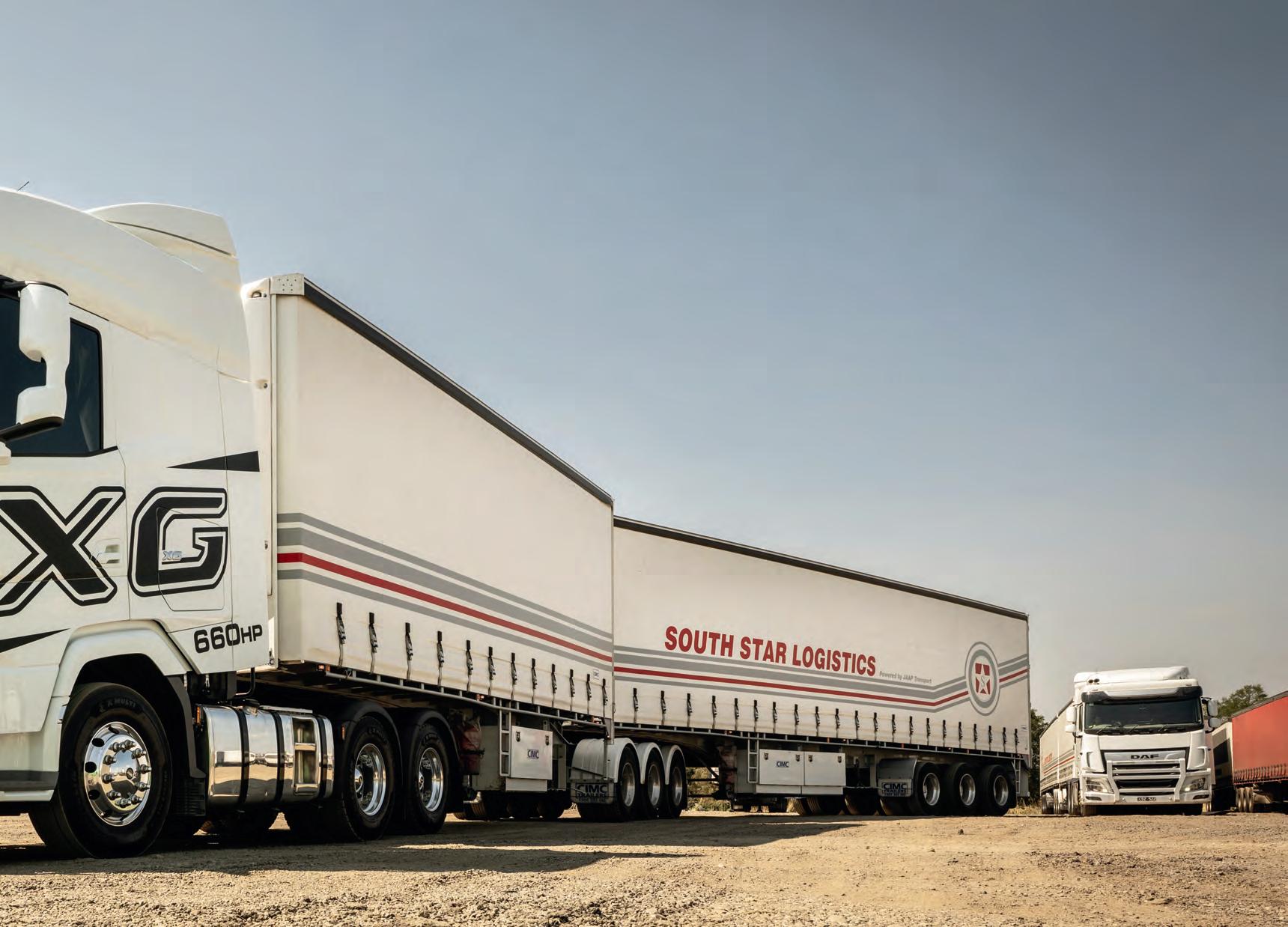
“Our drivers are very good and we focus on implementing strong training modules to ensure we don’t make any compliance mistakes.”
A major part of JAAP Transport, and subsidiary operator South Star Logistics, has been the vehicle technology it has chosen to use along the journey. It wasn’t until 2017 that Channi first bought a DAF truck from Victoria’s Hallam Truck Centre, but he soon fell in love with the brand.
“That first DAF model I bought was a 2017 XF 105, and I wanted to try the new truck in my local B-double fleet,” he says.
“Featuring Kenworth components, it worked perfectly, and I never had any issues with any of the initial DAF trucks that I ordered. From that time onwards, I’ve always been a big believer in DAF.”
Channi says a major bonus with the brand is the durability of its models. For all of the work he puts his growing fleet through to complete freight tasks, he says the quality of DAF’s parts means he doesn’t have to face the headache of one of his trucks breaking down on a highway.
With more than 30 DAF trucks in the current fleet, Channi has flourished when constantly refreshing his DAF collection. At a maximum of every three years, he sells existing trucks and adds the latest technology to ensure his drivers get to enjoy the newest safety and efficiency systems.
All of this has been done through the Hallam Truck Centre in Melbourne. Working with Muza Syed, the dealer has since opened a new branch recently in Somerton close to JAAP Transport’s home base. The Melbourne North Truck Centre (MNTC), situated at 106 Hume Highway, Somerton, has been opened to focus on customers in Melbourne’s north like Channi and JAAP Transport.
It’s this shared loyalty that saw JAAP Transport be one of the lucky few operators to trial a demo new XG model as DAF prepares for its unveiling this year.
“They have a new XG coming, and we’ve been able to use one already,” he says.
“Our drivers absolutely love it and say it’s perfect – they love the power that it has. The main benefit is the 660hp engine power that it comes with –drivers like the power that they can use to get up hills and remain efficient in their runs.”
This demo process has impressed Channi to the point that he’s now buying three XGs, while a further five XF models are on the way to his Victorian homebase. Either way, both models have taken Channi’s fancy as he is adamant that his future at JAAP Transport will continue to feature
plenty of DAFs.
“The latest XF models are very comfortable and feature wonderful safety technology, while the XG has a big engine that can run big jobs,” he says.
“The only issue back in the day was that DAF didn’t have a truck with a big engine, but the XG fixes that by providing a powerful engine to get through hilly terrain.
“I’ll continue investing in DAF in the future, as it’s a terrific brand in the local market featuring great fuel economy. I’m always looking to add new contracts to the business, so we’ll always be ready to add more DAFs to our fleet.”

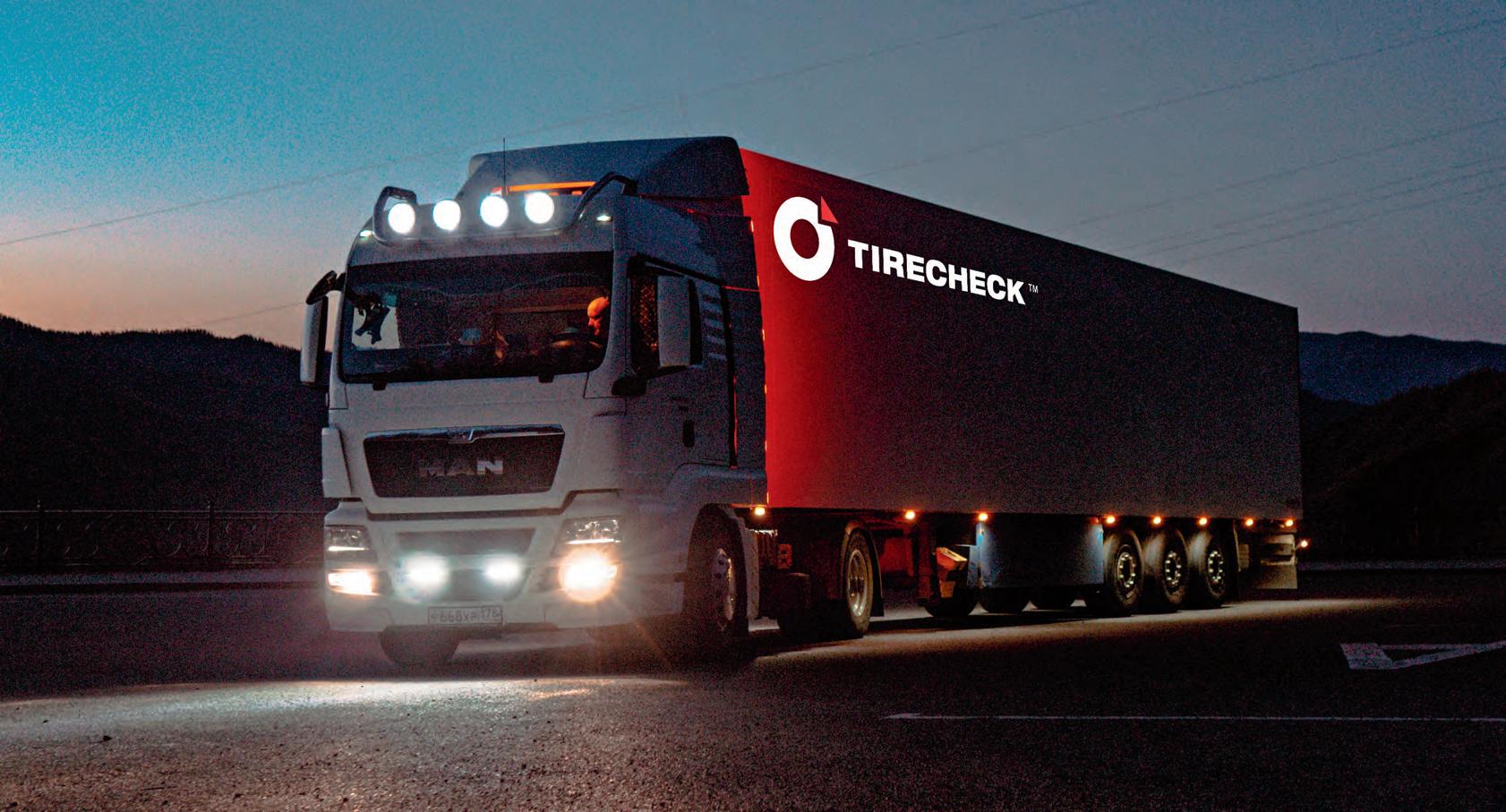
After building a business around its LoadSMART on-board mass product, Integrated Vehicle Solutions is preparing to unveil two new products at the Brisbane Truck Show
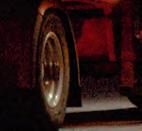













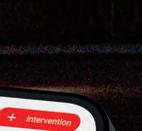






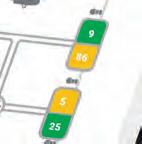









There are plenty of great times to start a new business venture, embracing the optimism of what lay on the horizon. For Raj Mali, he may not have picked the best time to start Integrated Vehicle Solutions, but the success the business has had over the best part of two decades proves he was always onto a winner.

“Integrated Vehicle Solutions (IVS) started 18 years ago in April 2007 when we began distributing our LoadSMART on-board mass product for heavy vehicles,” Raj told OwnerDriver
“Within the first year, the Global Financial Crisis hit very hard. Luckily, we got through, and since then we’ve grown.”
IVS was able to get off the ground and find a niche with its LoadSMART product courtesy of a major contract secured with VISY Logistics. The large operator decided to go with IVS to supply the Australian designed and manufactured on-board mass system. With more than 90 per cent of the product’s components being sourced from Australian suppliers, the VISY contract allowed IVS to excel in the local industry.
“VISY Logistics has been a major part of our success – while we’ve had other companies along the way, they’ve been integral,” Raj says.
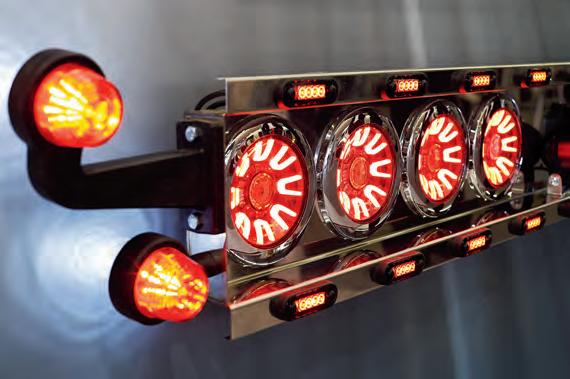


“The product has grown in the 18 years since this first contract. It’s evolved to become a very robust design that is Australian engineered and manufactured – we’re very proud of LoadSMART.”
The foundation product for IVS has now been installed onto nearly 4,000 heavy vehicles across Australia, continuing to grow as a strong force in the local market. A major upgrade to the on-board mass system was the T300 series, which saw it become certified for SMART OBM in 2022.
Meeting this requirement as an on-board mass system in the Australian market means IVS has been able to enhance its technology to excel in support and calibration for truck operators. Nowadays, the IVS team can aid in calibration from their remote offices, making this process easy to perform and manage.
“We now have about 1,000 vehicles with SMART OBM installed – every year this keeps growing,” Raj says.
“One of the biggest bonuses of SMART OBM is that we can offer remote calibration services – we don’t have to be at the weighbridge now, as we can calibrate the vehicle remotely from our office while the driver is at the weighbridge, this saves a lot of time and money for both us and the customer.
“We also have our own online server that can generate reports for transport operators – we find this is already becoming a key benefit for some customers.”
Moving forward with its flagship product, Raj says IVS will continue investing in research and design to improve LoadSMART and the SMART OBM system. Through customer demand, IVS has already established a basic four camera truck system that records all cameras when the vehicles is on. Already the team has added more cameras to this, with the goal being to include wireless cameras on trailers.
Yet the success of LoadSMART has meant IVS is now able to look outside of the on-board mass system realm when it comes to product innovation. While at the Hannover Truck Show in Germany last year, Raj and his team came across two products

that they’re now preparing to unveil at May’s Brisbane Truck Show for local truck operators.
“We have come across an international tyre pressure monitoring system and LED vehicle lights that we will now be bringing to Australia and launching in Brisbane,” Raj says.
“Tyre monitoring systems have recently been mandated in Europe to improve vehicle safety and we believe this will eventually come to Australia.
“We already understand the pressure monitoring game and how it works in the field, so we’re looking forward to introducing Tirecheck into Australia.”
Raj says IVS has been involved with tyre pressure monitoring systems (TPMS) for several years, with challenges arising around updating the system when a TPMS sensor needs replacing. After coming across Tirecheck, which Raj says makes it easy to check and replace individual sensors with a phone app, IVS is looking forward to introducing this system to its operations that is also compatible with the major trailer EBS brands, meaning it can relay tyre pressures back to the dashboards of many prime movers.
When it lands at the Brisbane Truck Show, Tirecheck will give local customers a more userfriendly system for monitoring tyre pressures and allows drivers to easily validate their tyre pressures.
IVS has high hopes for the German product in Australia, including a goal to integrate it into its LoadSMART system in the near future.
“Our idea moving forward is to combine these products into one system for local operators,” Raj says.
“While it’s still early days, we are looking forward to having Tirecheck available in Brisbane for the industry to see and use.”
Joining Tirecheck at the IVS stand as a new launch will be Fristom LED vehicle lights. Another European product discovered at Hannover, Raj says the Polish

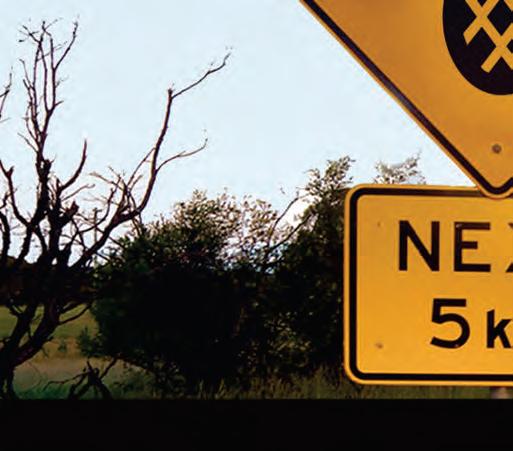

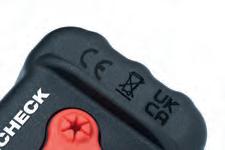





manufacturer offers a point of difference for the Australian truck and trailer market.
To help introduce the lighting range to local operators, Raj has brought onboard Robert Bellocchi as the sales representative for IVS’ Fristom Lighting division.
“It’s still very early days for the lighting side, but we’re already selling a few and we think it has plenty to offer in Australia,” Robert told OwnerDriver
“Fristom is a new product in Australia, and it caught our eye while we were in Europe. We think that the lights have a very unique design and will provide customers with an alternative choice.”
Robert says both he and Raj were drawn to the modern design of Fristom’s lights, meaning they’re both very excited to be offering these products to the industry.
“Fristom also values road safety, and one of the reasons we brought the product into the local field


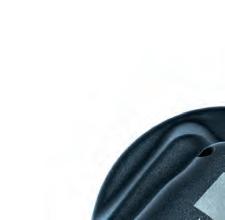

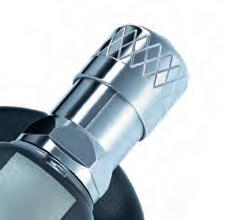
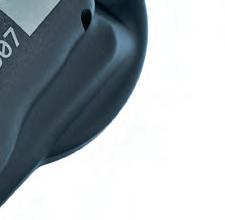

is so we can improve the quality of lights used in Australia,” Raj says.
Both Raj and Rob are well aware they’re trying to break into a new market in the heavy vehicle lighting segment, but they’re both prepared to work hard to get market share. The idea is for Fristom to become a unique alternative for Australian companies to consider, with the premium brand product being made in Poland and then shipped over to Australia.
“Most LED lights today are good quality, but this European manufactured product gives us plenty of confidence,” Robert says.
“We’re looking forward to building momentum in this segment, starting with the Brisbane Truck Show.
“We sell premium quality products to the local market and we always look for ways to enhance our products and add more value for customers, and we think both the Tirecheck and Fristom brands will help us grow with the industry.”
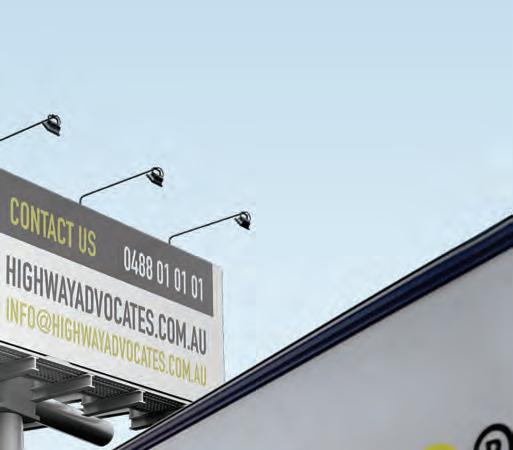




















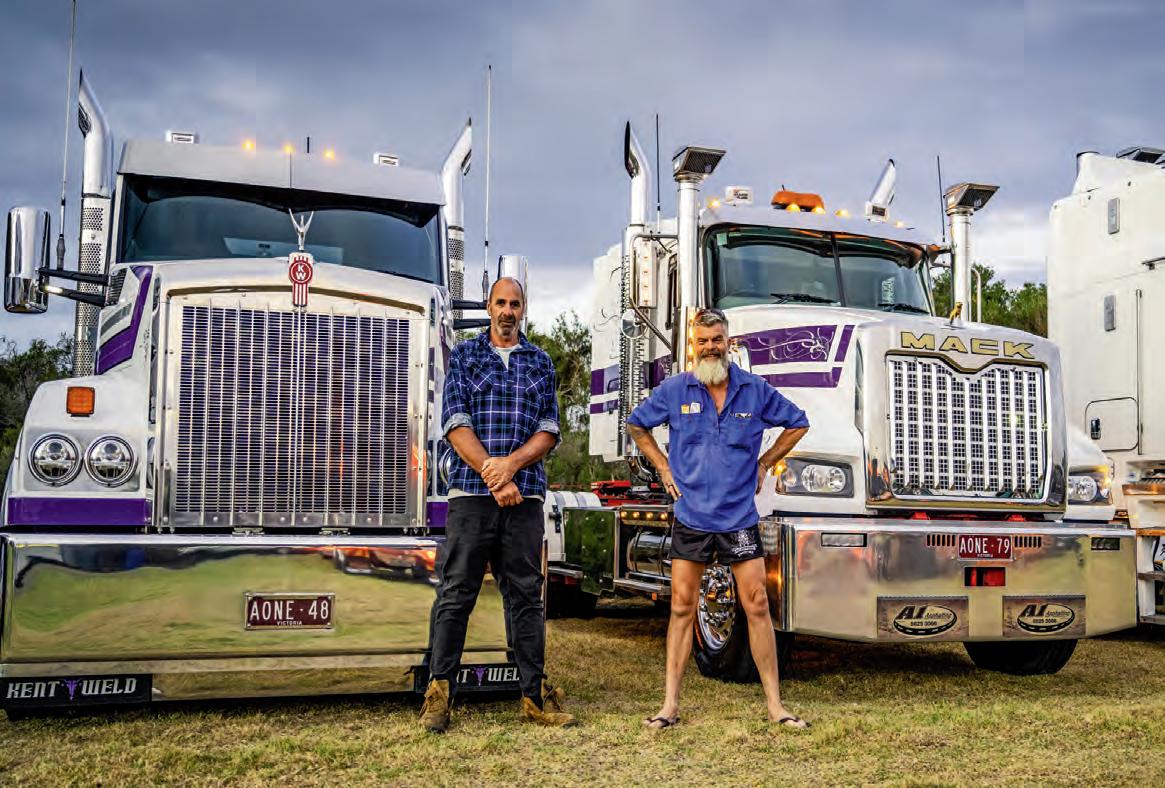
Warren Aitken braved the elements in south-east Melbourne earlier this year as he took on the rain-interrupted Tooradin Tractor Pull and Truck Show


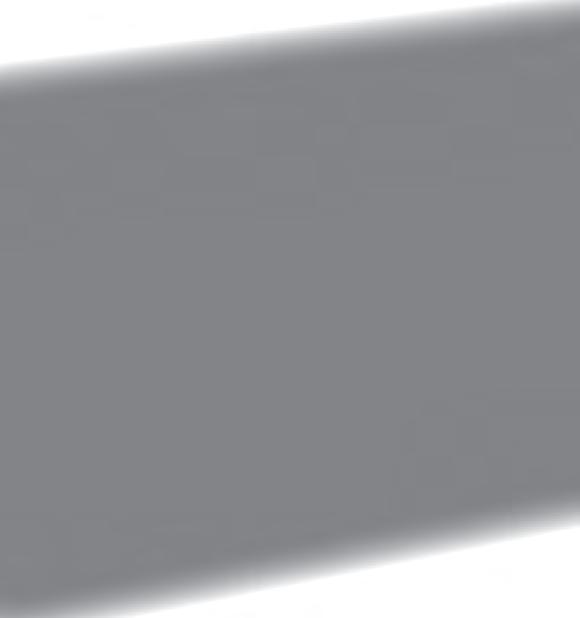




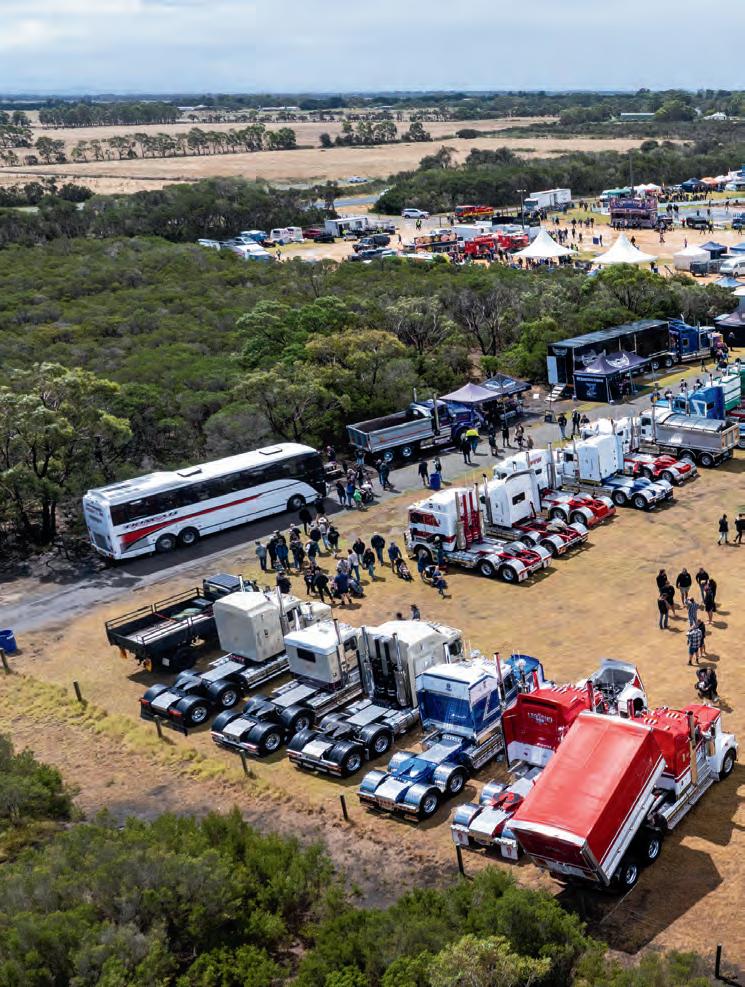



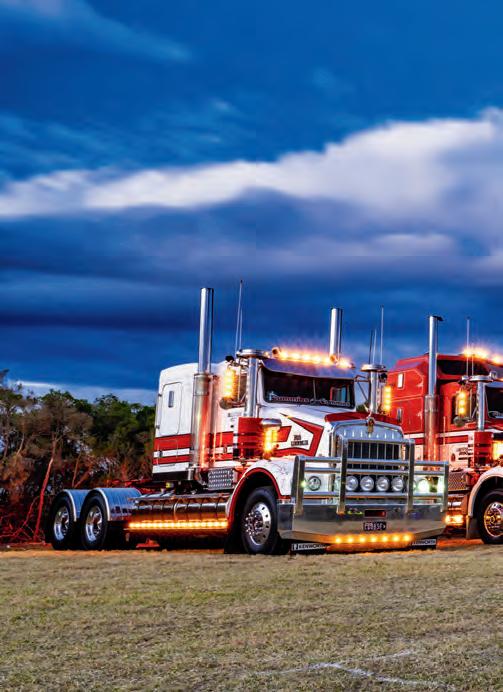
Well, it has been a couple of years since I last travelled down to the tiny town of Tooradin. Nestled in the Shire of Cardinia, about 50 kilometres south-east of Melbourne’s CBD, Tooradin plays host to the annual Tooradin Tractor Pull and Truck Show.

My previous experience was a couple of years ago when I actually came down to the seaside location with a truck and plenty of polishing gear to enter into the truck show. This year I drew upon that experience, recalled the high level of trucks I had encountered, reminded myself of the attention to detail every contestant had achieved and decided I am too old to compete with the Victorian truck enthusiasts.
Hence, I entered the Rutter Park Reserve with a rental car rather than a rig this year, although on several occasions throughout the day I was wishing I had entered the grounds with either a boat or at the very least a raincoat. This year’s event not only displayed some of South Gippsland’s finest trucks, it also displayed the extreme weather that makes Victoria such a rollercoaster of an experience. To quote one of the stoic stall holders at this year’s event, Brett Sullivan of Sullivan Sketching: “If you don’t like the weather down here, just wait five minutes, it’ll change again.”
Brett was almost spot on – I would just extend that timeline out to about an hour, 45 minutes at the least. When I rocked up to this year’s event, I beat the sunrise by about an hour. It was still very dark, and extremely cold as the first of the entrants rolled in when the gates opened at 5.30 am. The local Victorians were barely in need of a hoodie, but for humidity hogs from the north

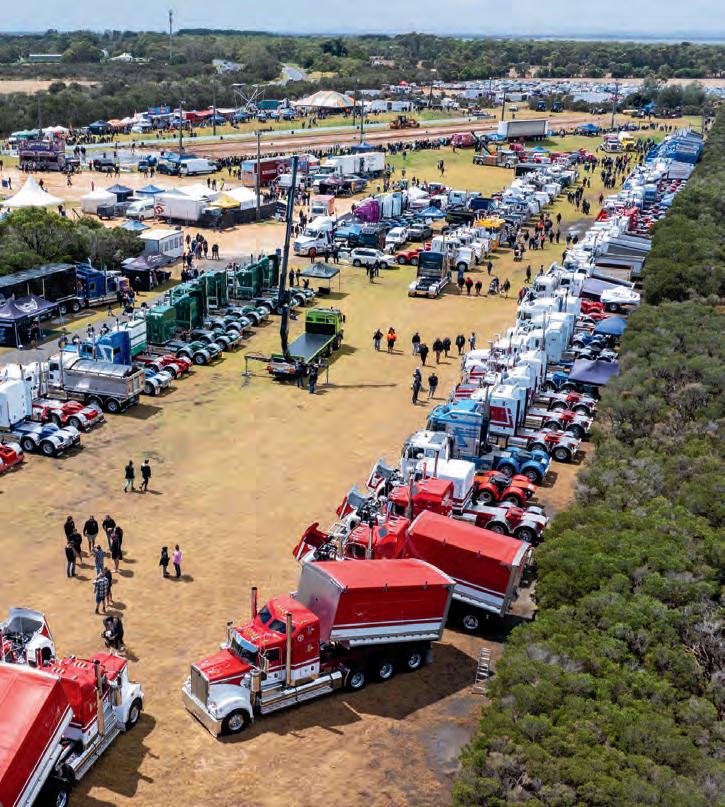










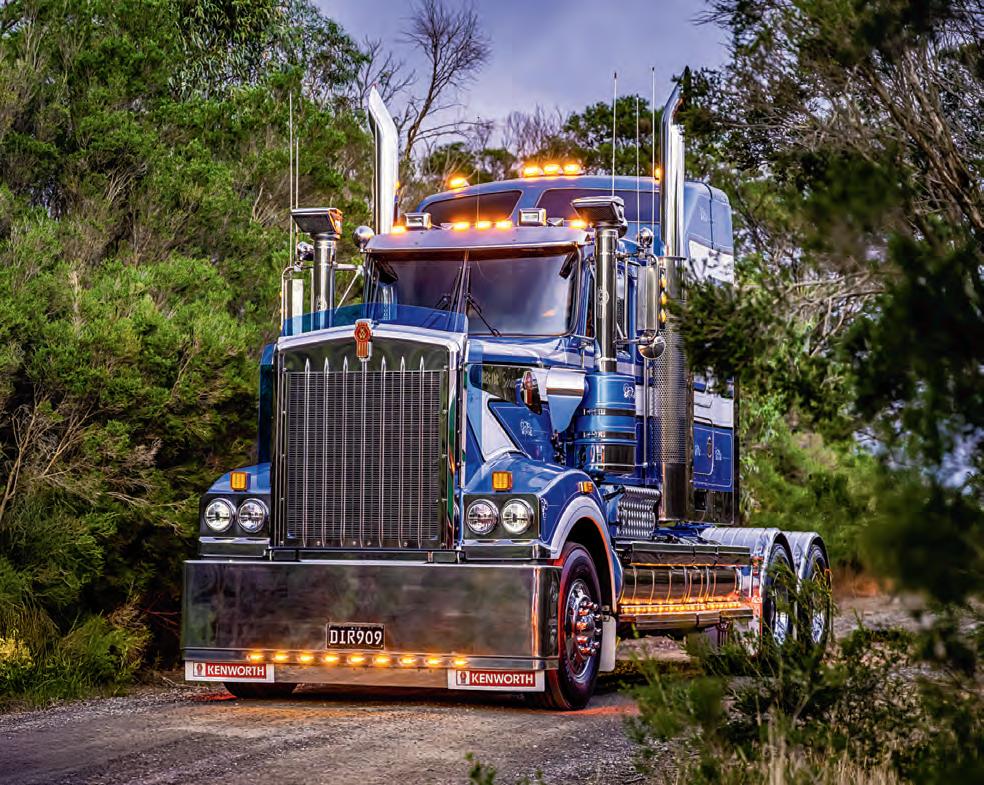


like me who had packed only for Queensland weather, it was a touch on the ‘holy crap it’s cold’ side. That didn’t stop me enjoying the sun rising over the cool kids as the trucks began to roll in.
This event is very much a mutually beneficial occasion. The Truck Show and Tractor Pull are run separately but held together. It also means there are two different crowds turning up for the events. In turn, this means the truckies are under a tight time constraint. Starting from 5.30am, they have only a couple of hours to roll in and stage up before the spectators start blocking the highway as they gain parking for the Tractor Pull and Burnout event. It creates a bit of a backlog as the trucks have one entrance, however the volunteer team behind this successful event have got it down pat. It is great for the show but meant I was all over the shop trying to grab shots as all the trucks rolled in.
By the time the sun was spilling up over the horizon, most of this year’s entrants were already on ground, which was fortunate as with the sun came the changing of the weather. Gone was my soft lighting that allowed me to wander the ground getting nicely lit images, in came a weather system that would best be described as ‘teenager woken early to do chores and learning the rest of the day has no Wi-Fi’. In other words, it was cranky.
It started with waves of gentle drizzle, packed in a few painful periods of horizontal droplets, interspersed that with gusting winds and just when you were game enough to get out from under some shelter it would bucket down. I’m not talking ‘cats and dogs’, I am talking ‘giraffes and hippopotamus’s’. I ended up next to a food van, holding onto their gazebo with several other truck nuts. We were all doing our best to avoid old mate having to chase his flying tent back into Melbourne. Sadly, during the





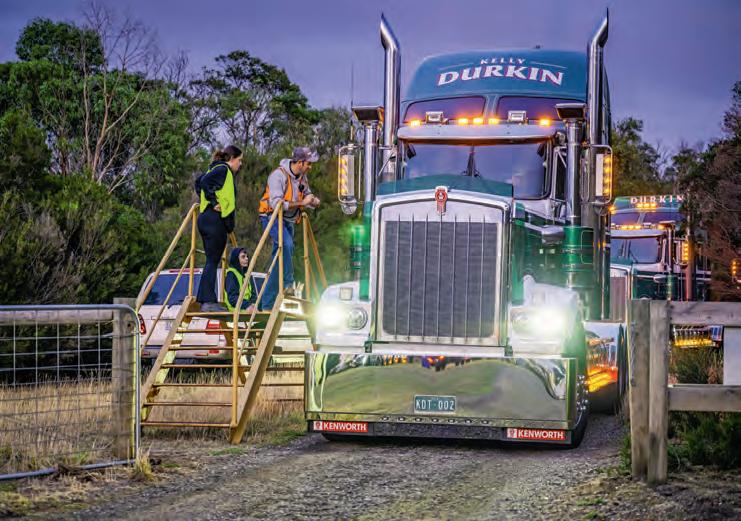


Top, L to R: I caught a few of the display trucks early, before the salesman arrived. The Dan’s Trucking Mack Anthem was an eye-catching addition to this year’s display for CMV Truck & Bus Dandenong; The numbers were down a little at this year’s event, with weather being the main culprit. But those that did rock up put on a hell of a show; The morning light made for some cool shots as the trucks rolled in for this year’s events
Above, L to R: Seb Kuyer from A1 Asphalt and his stunning T410 was part of the Kenworth dominated crew at this year’s event. Thankfully there was also a few like Jeff McCraw who flew a different banner. In Jeff’s case, representing A1 with this striking 2023 Superliner; The Browns Stockfeed team set up early and avoided the weather. The team picked up several awards, including first place in Tippers under one year, one to three years and four to six years; Enjoying the early morning chills and early bird entrants, Graham Olsson and Alex Murry did a fantastic job working the gate



worst of the downpours, one vendor did lose his double awning to mother nature – his stock was either blown away or drowned. Several other vendors were thanking the crowds huddled under their gazebos as they were grasping their structures to keep them from entering a low flying orbit.
While everyone was proclaiming ‘typical Victorian weather’ and many were reiterating that all this had been predicted, it did not make the day or decisions any easier for the organisers of the event. On the truck show side of things, obviously the cleaning and polishing was brought to a halt while everyone was either seeking shelter in their vehicles or huddled under one of the few gazebos not blown into the tractor pull arena. That comfort was not shared by the very determined judges. Full credit to them, I may have been hidden away protecting my dear cameras, but they still pushed on. The volunteers tasked with organising the show were having their own issues as the donger set up for them to run the show, accumulate and corroborate the judging and generally oversee the event was flooding, with power out due to water seeping in through the power outlets. It was an absolute (I cannot use the term I would like to here, instead I will just have to use the definition – a very rude word for a complete failure or very serious problem in which many mistakes or problems happen at the same time).
The rain was not just playing havoc with the truck show side of this year’s event – the burnout competition was on hold as the pad looked more capable of holding a synchronised swimming carnival than collecting flying rubber and dispersing stacks of smoke. Between the gentle drizzle and the horizontal droplets, there were teams of dedicated volunteers out with brooms sweeping up the unwanted puddles, but when the ‘giraffes and hippopotamus’s’ downpours came, once again it was just an



















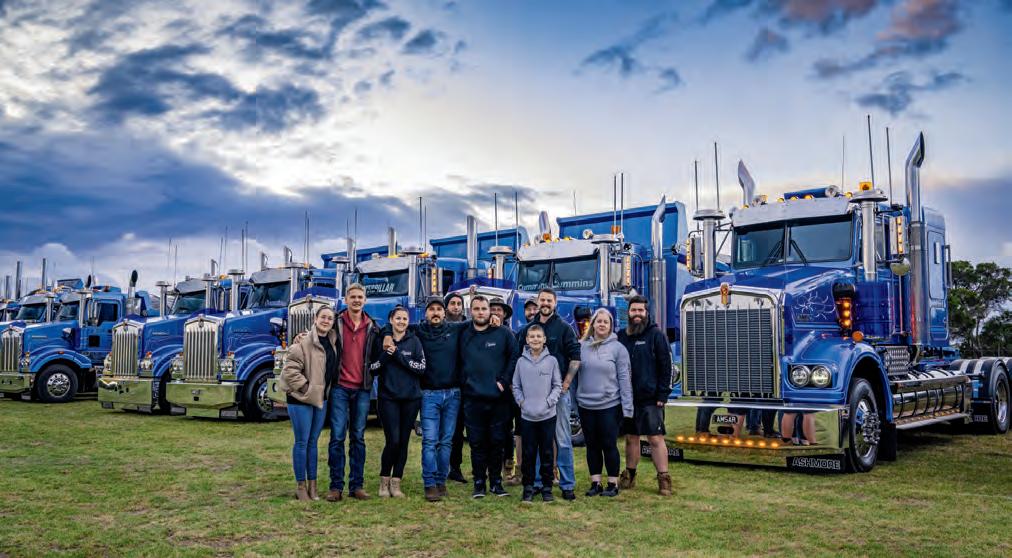



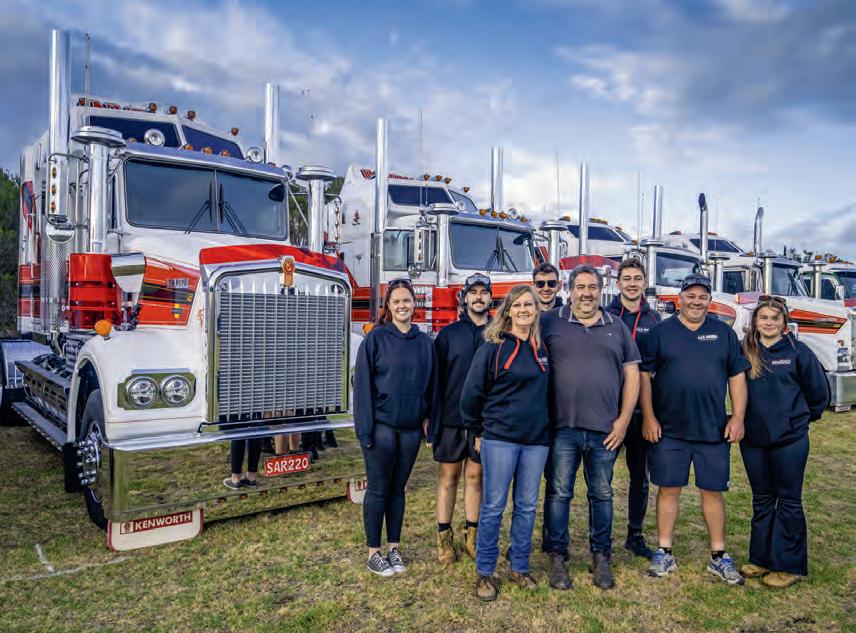





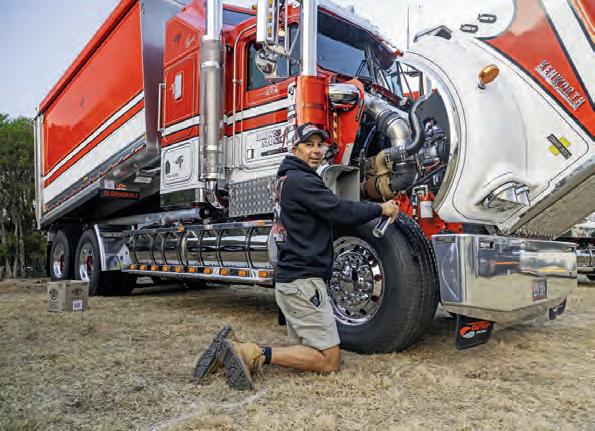





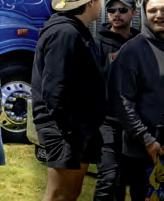






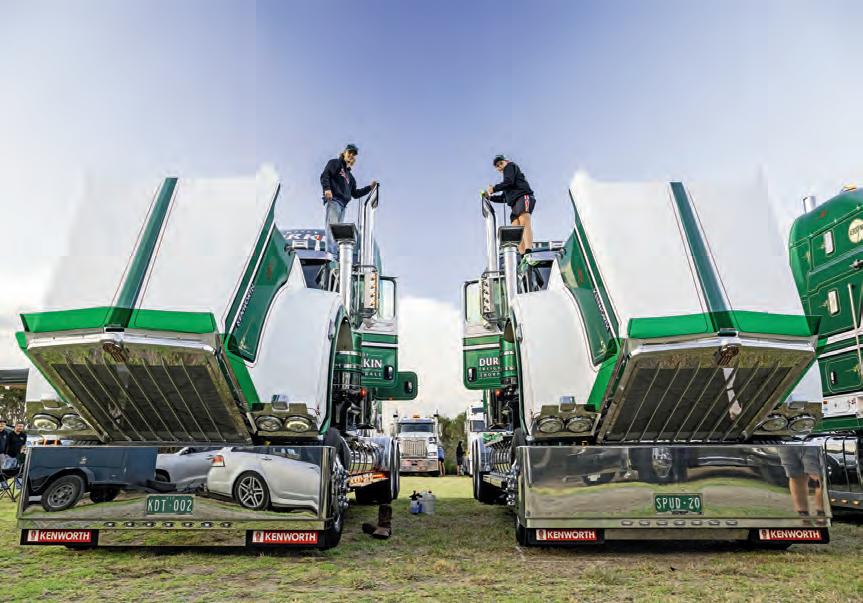


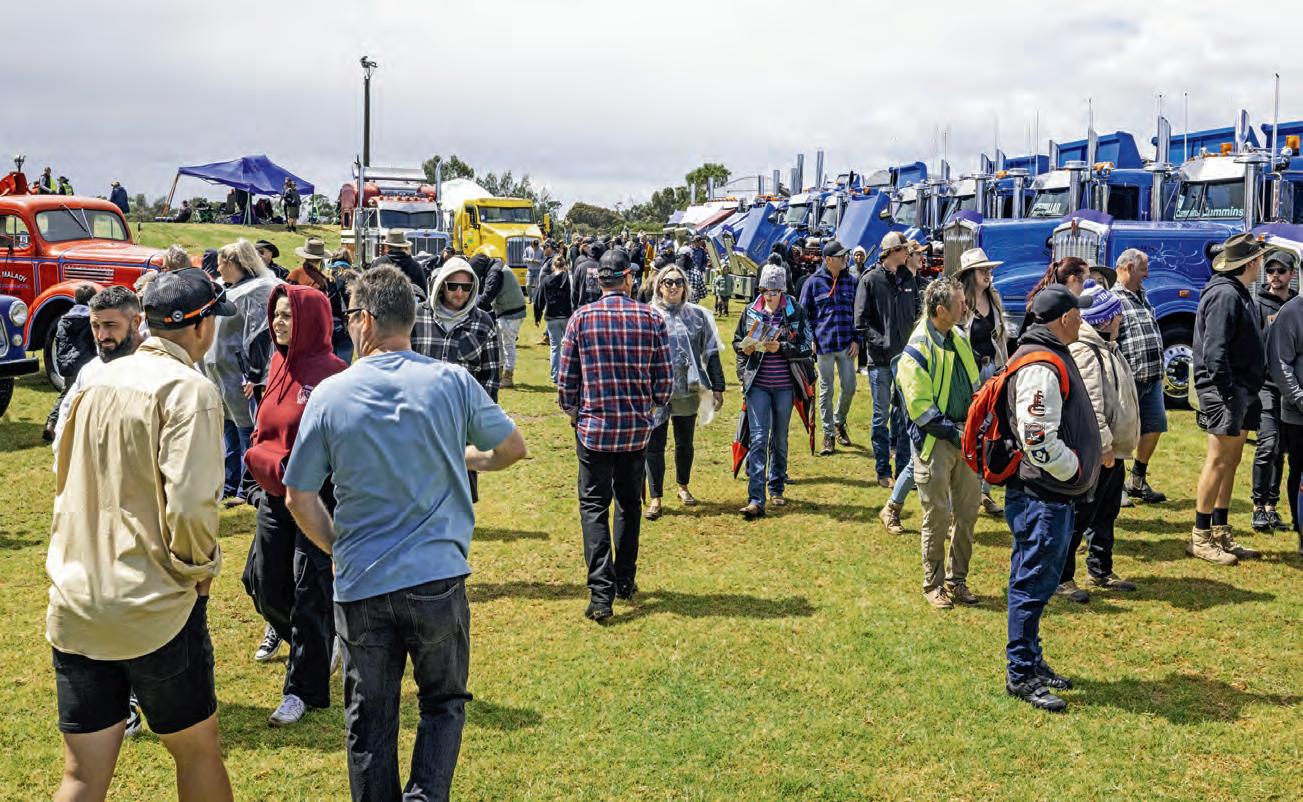
absolute “a very rude word for a complete failure or very serious problem in which many mistakes or problems happen at the same time”.




Then, of course, there was the other naming rights event, the tractor pull. My first thought was ‘no worries, they are tractors. It would be just like adding more mud to a mud wrestling event’ –how wrong was I. These tractor pull competitors have extremely strict conditions under which they can run, and I was surprised to learn from one of the event’s organisers that, in actual fact, by 12pm they were about to call the event. It turns out that even days before the event, the weather forecast had many of those at the top tossing up the idea of calling it early. Apparently once the track gets too wet, it becomes almost impossible to drag the equipment back out after a run.
Sadly, the circumstances created by a cranky teenage mother nature ensured that many people packed up their belongings and pulled the pin. As the raindrops cascaded down off my rather expensive, yet non-weather protected lens, I put my hand up to join that exit line. I was already drenched through as I attempted to chase more photos. I was caked in dirt after the rain had turned the main area into a modern-day mud spa and I was still bloody cold after failing to pack for weather below about 30 degrees. I had been beaten – for the first time a truck show had beaten me.
Then Brett Sullivan’s words hit my ears: “If you don’t like the weather down here, just wait five minutes” – which I did. And, just like a sullen teenager, the mood changed with the wind. The sun broke through and, while it never warmed up enough to dry me out, the weather stepped up. It would be nice to say it was all harmonious after that, but Brett’s words work in reverse as well. If you do like the weather down here, just wait five minutes. There was still the odd shower but nothing that destroyed morale like the morning events.

The sun and a few good brooms allowed the burnout display to literally light up the early afternoon. I am not sure how much










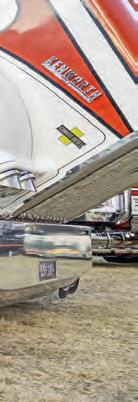


























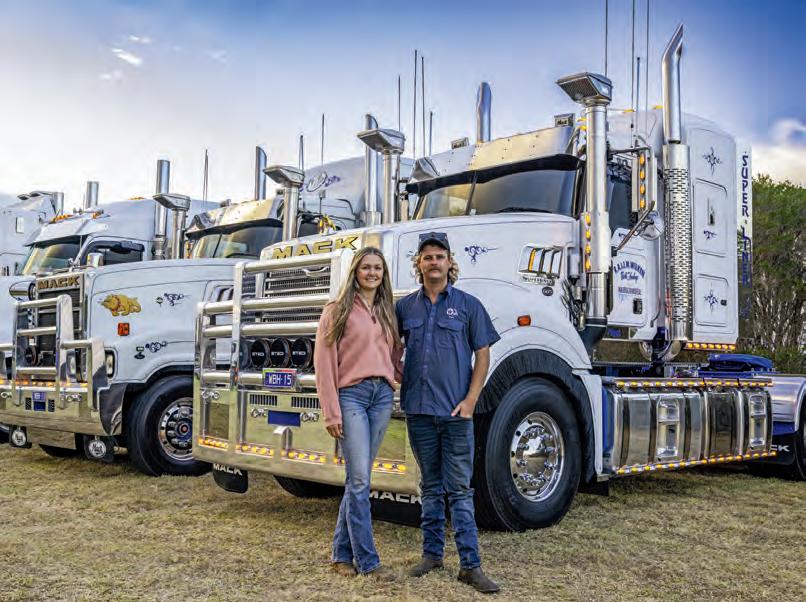

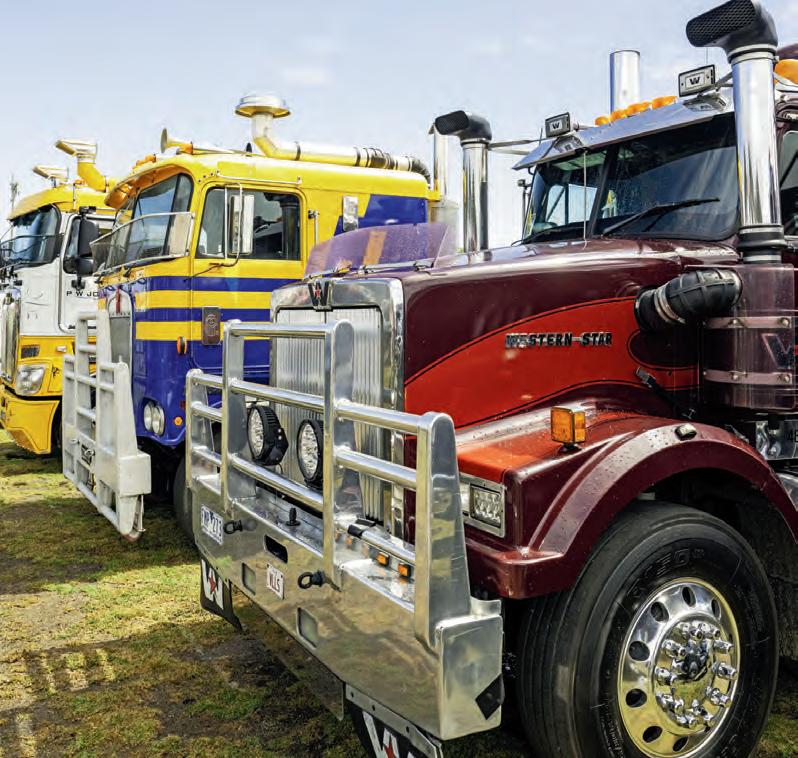








the wet dirt affected the tractor pull, but it did not dampen the sound as the big blowers barrelled down the track. As far as the truck show went, it did make the judges’ job a lot easier, as they assessed the entrants and, by the time awards season started, there was hardly a cloud in the sky.
As far as the winners go, Tub from A&K Dowling PTY picked up the top honours with his stunning Kenworth T909. Browns Stockfeeds picked up best fleet with its stunning Kenworths and Cade Brown in the Browns Stockfoods SAR Legend picked up the prized Stuart Baker Memorial Trophy.
Wrapping it all up, there is a fair bit to say. The numbers for this year’s Tooradin Tractor Pull and Truck Show were definitely down – 106 compared to over 160 last year. Obviously, many people were smarter than me and looked at the weather forecast before they made their weekend plans. That being said, you go to events like this for the experience



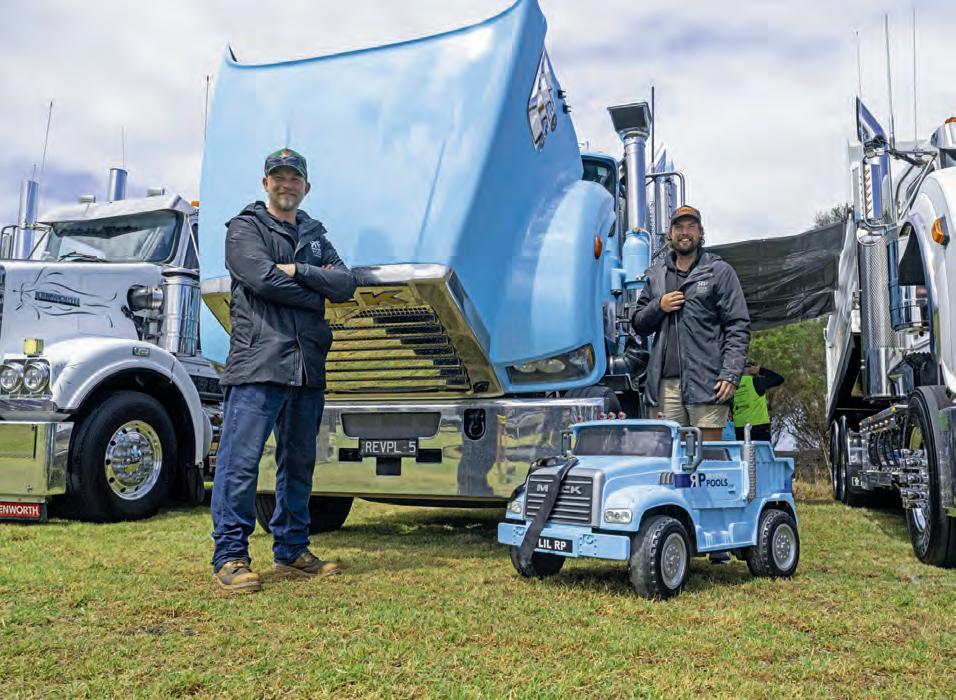
“The wet weather did not once dampen the enthusiasm of those that had shined up their pride and joy.”


Above, L to R: Emma Humm was driving Jeremy Jardine’s Mack Superliner while he was sleeping in before the show, her efforts got Jeremy the Best Prime Mover seven to 10 years award. Sam Box drove the 2005 Superliner in the back and he picked up Best Prime Mover 17-25 years; Steven Kapahnke is the proud pilot of the Reverse Pools Mack, while Ryan Starling has the responsibility of looking and steering the Mini Mack. Both were on point for this year’s show
and I still thoroughly enjoyed my experience. The wet weather did not once dampen the enthusiasm of those that had shined up their pride and joy and, as we all stood shoulder to shoulder under an awning, sheltering from the rain, it just gave us a different view of the polished up big rigs. Whenever there was a break in the rain, everyone was back out splashing around and lapping up the high-quality equipment that was on display. The weather lows just added to the adventure of the day.
My final word is a thank you to the team from CMV Truck & Bus Dandenong. They were the first vendor open during the rain and looked after this stupid Queenslander who forgot that there is cold weather out there – I appreciated that Mack jacket all day, I would say it was the best money I spent all day, but that went to the southern style chicken food truck. I’ll be back next year with a more appropriate wardrobe. Cheers Tooradin.
Opposite page, clockwise from top left: The Ashmore Excavations team had a full fleet of stunning blue Kenworths on display this year and were kind enough to group together for a team photo before they went back to cleaning; It is always good to see the bosses getting in to apply the shine. Here Chris Brown is adding the tyre shine to one of the Browns Stockfood stunning tippers; When the rain halted, the crowds flocked to the open paddock to appreciate this year’s Tooradin Tractor Pull and Truck Show; I’ve edited out all the safety harnesses, nothing to report here as Cooper Beckley and James Kennedy get all the hard cleaning done on a couple of the Durkin Kenworths; The always shiny and sharp Inverno Team brought their entire fleet this year, some outstanding Kenworth, old and new. Justifiably they drove away with several trophies; There were some extremely cool trucks at this year’s event. This stunning cabover ranked right up there for me
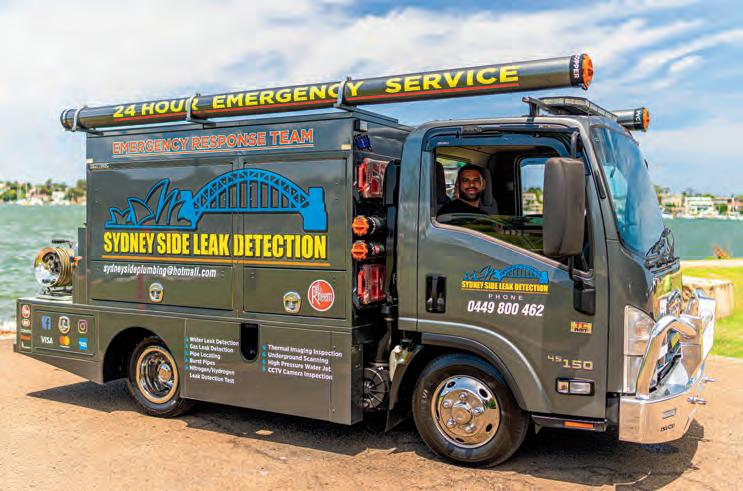

Two Sydneybased plumbing companies are revelling in the customisable nature of their Isuzu NLR 45-150 trucks
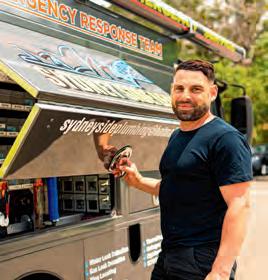

Some trucks just fit a trade like a glove. When it comes to carrying out the business of leak detection and plumbing, two savvy Isuzu truck owners – Sydney Side Plumbing and What The Flush Plumbing – tell the tale of how the NLR 45-150 has been their ticket to better business efficiency.
Always popular with those looking to maximise on payload and presentation, the NLR 45-150 has proven in this instance to also be the ideal platform for creative customisation. From toolboxes in the dozens to jet blasters on the back, these trucks contain everything a plumber could need for busy days in the heartland of the tight city streets of Sydney.
SYDNEY SIDE PLUMBING
Mohammad Mourad of Sydney Side Plumbing is a stickler for detail, which has served the family-owned and operated business well for almost 15 years as they operate in the hotly competitive Sydney-metro region.
The team at Sydney Side Plumbing looks after a gamut of clients from service stations to schools, fast-food outlets and those in need of a plumbing expert. They offer attention to detail and high level of customer service, no matter whether it’s fixing a simple leak during business hours or wrangling a burst pipe emergency at 2am.
Mohammad is joined by his son Abdul and subcontractor Mohammad. Together, the three make up the Sydney Side Plumbing team. Mohammad has built a fleet of highly specified Isuzu NLR 45-150 trucks with help from Custom Fit Fabrication in South Windsor. It’s evident that he hungers for the ultimate trade setup, including the most up-to-date tools and equipment that will allow the business to perform at peak efficiency.
The truck incorporates PVC pipe holders on top and a series of ‘gull-wing’ toolboxes for improved access on both sides. On the left of the rear platform, a high-pressure water jet stands ready to combat blockages, balancing out a 170-litre water tank in the centre of the body and a range of other pumping essentials Mohammad stores on the driver’s side.
With a finished cab height of 2.4 metres and a wheelbase just under 2.5 metres in length, the NLR cab chassis was chosen specifically to negotiate loading docks, underground parking complexes and to fit underneath the numerous 2.4 metre bridges dotted throughout the Harbour City.
“I didn’t have the time to keep going backwards and forwards for materials,” Mohammad says.
“You save money in the long run with a truck because you’re equipped and can carry everything you need, and you’re comfortable working out of it, which you can’t really put a price on.”
TOP, L TO R: The Sydney Side Leak Detection (left) and What the Flush Plumbing (right) Isuzus both pull their weight in and around Sydney
ABOVE: Both plumbing companies revel in the customisable nature of their vehicles
RIGHT: From PVC pipe holders to microwaves, these Isuzus come with some unique features
The primary objective of What the Flush Plumbing director Brandon Navratil and his team is to provide Sydney-wide coverage within an hour of receiving a customer’s call, remaining always ready to flush away their plumbing emergencies.
Brandon’s NLR 45-150 is rigged for maximum efficiency with the help of Pacific Bodyworks in Wetherill Park, allowing the team to solve issues such as leak detection and drain blockages in a timely, safe and cost-effective manner. There’s a home for every camera, locator and piece of jet-blasting equipment in their custom-designed truck.
“Finding leaks where other plumbers can’t is what we specialise in. It’s always a satisfying moment when we find that leak and we’re on the money,” Brandon says.
“We’ve got everything we need on hand, and we’re stocked with the best equipment to get the job done.”
Brandon has included storage compartments and ways to safeguard expensive leak detection equipment during transit, incorporating lighting to accommodate different weather conditions and night-time work. A microwave oven for access to hot meals tops off the package for this team.
The NLR 45-150 was also selected for its maneuverability in and around Sydney streets and laneways. Supported by the Isuzu 4JJ1-TCS engine which provides power of 110kW (150 PS) at 2,800 rpm and torque of 375 Nm at 1,600 – 2,800 rpm, the compact NLR is nimble enough to drive wherever Brandon and the team are called, never scrimping on power.
The generous GVM of 4,500kg and GCM of 8,000 kg has plenty of payload for every drawer, tray, storage compartment and toolbox that have been built into the NLR. Added to that is a towing capacity of 4,000kg.
In just over three years, the team at What the Flush has clocked up a hefty 122,000km, but Brandon is confident he’s chosen the right truck brand to back his operation. He says his dad, a stonemason, had an Isuzu NKR that had put in over one million kilometres.
“If that doesn’t say reliable, what does?” Brandon asks.
“We carry around all our material, all the gear and don’t have to rely on anyone else – that’s the whole premise of why I took this route.
“I needed the ability to get anywhere in Sydney but also carry around a lot of equipment and tow a trailer for excavation.”




From axed radio shows for truckies to the NRFA Conference, Rod Hannifey has had a busy month in the trucking
Goodaye all, well the biggest news items from me this month are a wrap up of the NRFA Conference in Brisbane and the demise of the ‘Nightshift’ show on Triple M. The NRFA AGM was held on the Friday night with a couple of changes to the board and then the conference was held on Saturday February 15 at Waters Edge Hamilton.
The range of topics and speakers was good and, I must say, while I do follow what goes on in the USA regarding trucking, it was very interesting to hear the first of our two international speakers Dean Croke detail where things are at there and give a comparison to the differences between there and here. Dean does understand trucking on both sides of the ocean, having spent years here as well before venturing over there.
The evening speaker, Chuck Snow from Canada, started the Traffix Group which, from a small start, went on to become a billion dollar company and continues now that Chuck has retired. His speech was a tale of fighting bureaucracy and how to achieve an end through using some of the rules and breaking others. I spoke with Chuck during the afternoon and he is good friends with Bruce Outridge, who I stayed with in Canada during my Churchill Fellowship tour, and Bruce was a trucker and for years now has done the ‘Lead Pedal’ podcast.
I asked many questions and spoke with the Queensland transport minister about green reflectors – he said he would get back to me and I have just followed up a contact from my previous email to him. I had been told by another TMR contact that a stock of green reflectors had arrived, so we now need to know what they are going to do with them.
On a trip to Clermont and then Townsville, I did ring TMR and list some concerns on the Carnarvon Highway –the potholes at the bottom of the range are dangerous and a culvert I had fixed some time ago is again failing. There were four things in that call and then again regarding the road closed signage at Emerald, which was incorrect.
I then asked if the road was open to Mackay and Townsville and if were there any restrictions and was told to ring the NHVR. I did respectfully say it is TMR’s road, but I was still told to ring the NHVR and, during a conversation
with a new contact who had been at the NRFA conference, we both agreed it was not up to them, but I did try.
It seems Triple M needed to save some money and, at short notice, axed the ‘Nightshift’ program where I have been doing a weekly spot now for close to five years. When it first started, I rang in a few times and eventually asked and pushed and suggested there were a lot of truckies listening and a dedicated spot would recognise that better.
We did start on Wednesdays at 1am before we then moved to Thursdays and finally, it became ‘Truckie Tuesday’ from 1am to 3am and sometimes longer if callers queued up. We had guests from the NHVR to Heather Jones and others at times and overall, I have had many comments, mostly good, but of course you can never please everyone.
To those who rang in and participated and to those who simply listened and have contacted me saying it will be missed, thanks. I do think it was the only show of its type on live radio, with many commenting it kept them entertained and if not simply awake, then involved more with the shenanigans of the show across the week.

ROD HANNIFEY, a transport safety advocate, has been involved in raising the profile of the industry, conducting highway truck audits, the Blue Reflector Trial for informal parking bays on the Newell, the ‘Truckies on Road Code’, the national 1800 number for road repairs proposal, and the Better Roadside Rest Areas Group. Rod is the current president of the NRFA. Contact Rod on 0428 120 560, e-mail rod.hannifey@bigpond. com or visit www.truckright.com.au
If you miss it, tell Triple M. I doubt they really recognised the importance of the show to those on the road or working nights and the spread and coverage the show got. The other side is if they did, they did not care and that is even worse. I won’t be listening to Triple M unless the show comes back and many others have said the same, some much more aggressively and with more colourful language. Luke was planning a podcast and it looks like that will come forward and I have been asked to be part of that, but we will see.
I have already had one fellow ring to talk on a show for truckies and we discussed the history and what has been before. Truck Radio on commercial radio did well for some years, then Rig Radio and Overnight Express both were on the CBAA network. There have been lots of stations and many small powered community ones and each got to a point where the advertising did not provide sufficient income and they died.
Triple M wanted to cut costs, so from that viewpoint it was a clear commercial decision by management and they are of course responsible for how the business performs, but do people, specifically us, count to them at all? Each of these shows in their own way possibly saved lives, keeping brains functioning and interested. I listen to audiobooks, as do many others and, of course, still others simply listen to radio or have their own music – things which have become more accessible in the past few years.
But radio has compressed, the little stations have struggled or have been gobbled up, and local news and events can struggle to get a look in with a corporate parent simply there to make a buck. The ABC remains Australia wide in its many formats and channels and there are still many community radio stations, but I enjoyed the chance to talk to other truckies to try and get some positive stuff out. Now I will get to sleep in on Tuesdays and we will see what comes next!
Till next month, safe travelling, Rod.
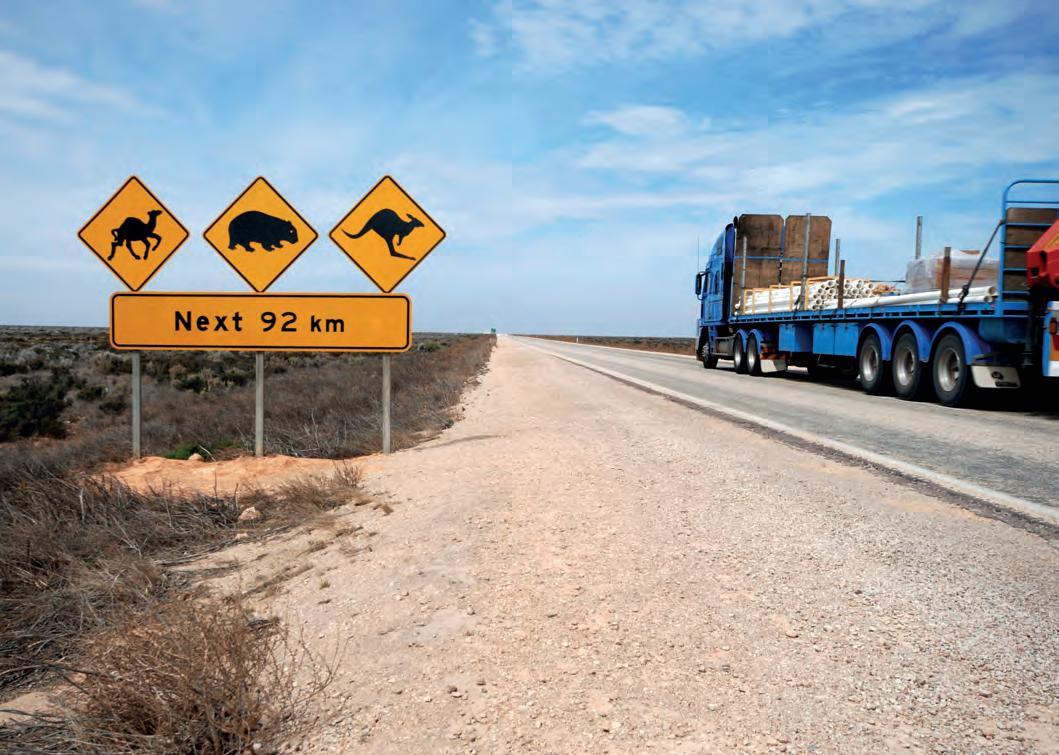

While in Melbourne, Warren Aitken caught up with Sharna Chapman and discovered her tough but rewarding life in the transport sector
If I’ve said it once, I’ve said it a million times – I love the paths my profession leads me down. Recently I journeyed down to the small Victorian town of Echuca in order to chase up another Female in Transport story.
Word had crept back to me about a young lady running her own fleet of trucks, balancing life as a mother, a driver and an owner. That sounded perfect for me. I would get the chance to show a plethora of possibilities for female within our industry.
I made contact with the young lady herself, Sharna Chapman, and organised a time to have a sit down and quiet chat. I planned on a simple straight forward story. Instead I have ended up with a story that packs in all the buzz words from every cliché motivational poster you have ever seen. Resilience,
persistence, adaptability, honesty, commitment, perseverance – I could go on and on, but then I would never get to the actual story.
The long and the short is, my original intention was to write a Female in Trucking story for all those looking at transport as a career. The story I ended up with is one I would like my daughter, my son, in fact everyone, to read. Sharna has shown that no matter what gets thrown in your path, you just keep going. Or, to put it into a cliché motivational poster term, ‘it’s not the size of the dog in the fight that counts. It’s the size of the fight in the dog’.
When I shook hands with Sharna before our interview, the first thing I noticed was the battle scars on her hands. There was oil and grease, complemented by prominent pink nail polish. rounded off with a finger wrapped and bandaged.
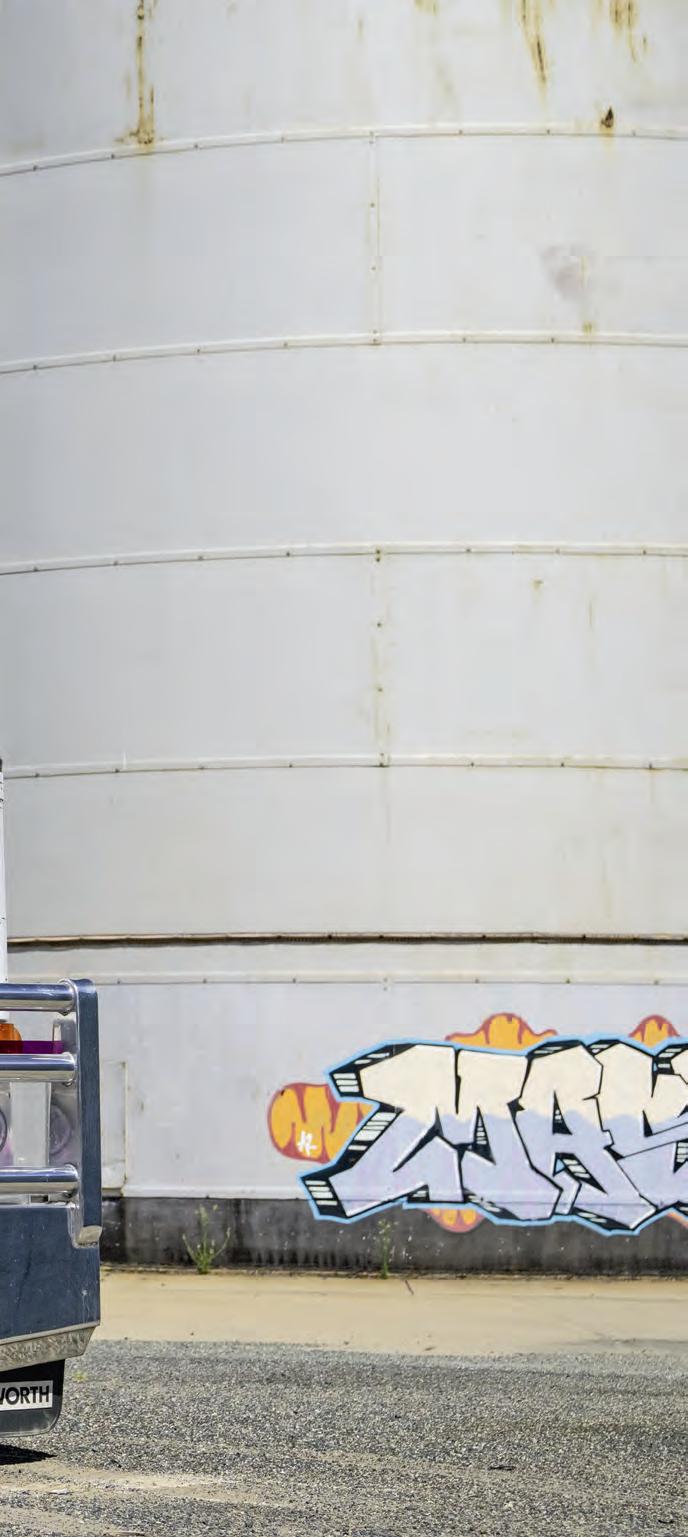
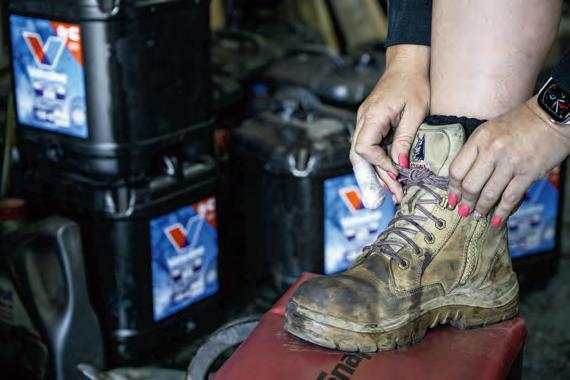
The hands of a blue-collar worker. The office we sat in was strewn with paperwork, order forms and maintenance records. The workshop showed the remnants of a recent engine overhaul and the K108 parked outside was gleaming like it had just rolled off the factory floor. All of these visual cues were the responsibility of the young lady sitting across the desk from me. While it all seemed overwhelming, for Sharna it is all in a day’s work.
“I’m not here to make a million dollars,” she told OwnerDriver
“I just need to pay my bills. I’ve worked hard to get this far.”
That is the epitome of an understatement if ever I have heard

“I used to love going with dad. I remember doing a load of hay with him when I was about 12 and I just said, ‘dad I’m going to be a truck driver when I grow up’ and he said ‘no, that’s not going to happen’.”
one. Sharna has dealt with a messy divorce, dishonest brokers, crashed trucks, ill-intentioned managers, unreliable accountants and so much more, all just to keep her head above water. Like the infamous Martin Penwald, Sharna has rubber ducked it all and kept her head above water, looking calm while below the surface she is paddling like mad.
Growing up in the rural setting of Victoria, hard work and dirty hands were nothing new to Sharna. Her dad floated between farmwork and truck driving for her entire childhood.
“I would go with dad every chance I could get,” she says, laughingly admitting that within 10 kilometres of leaving she would already be asleep.
“Dad used to say ‘how can you sleep already, you’ve just slept all night and then you get in the truck and you’re asleep again?’. Credit where credit is due though, being able to sleep in an old T-line is no easy feat.
“I used to love going with dad. I remember doing a load of hay with him when I was about 12 and I just said, ‘dad I’m going to be a truck driver when I grow up’ and he said ‘no, that’s not going to happen’.
“I replied and told him it was going to happen.”
Sharna’s resolve was driven by the fact she hadn’t noticed many women in truck driving roles at that stage, and she knew it was something she had an interest in and a passion for.
“Growing up on a farm, there were a lot of jillaroos, and on the dairy farms there were a lot of woman milking cows – my mum milked cows for 30 years, so working in male dominated industries wasn’t something new to me,” she says.
Sharna left school well before the government would give her a truck license and, as such, she took work in the farming industry instead.
“I got a job with a chaff mill when I left school, I really enjoyed that – cutting chaff, bagging it and delivering it,” she says.
“They had a rigid and a semi that we had to load and unload by hand. But it was a job, and I was making my own money, so I didn’t care.”

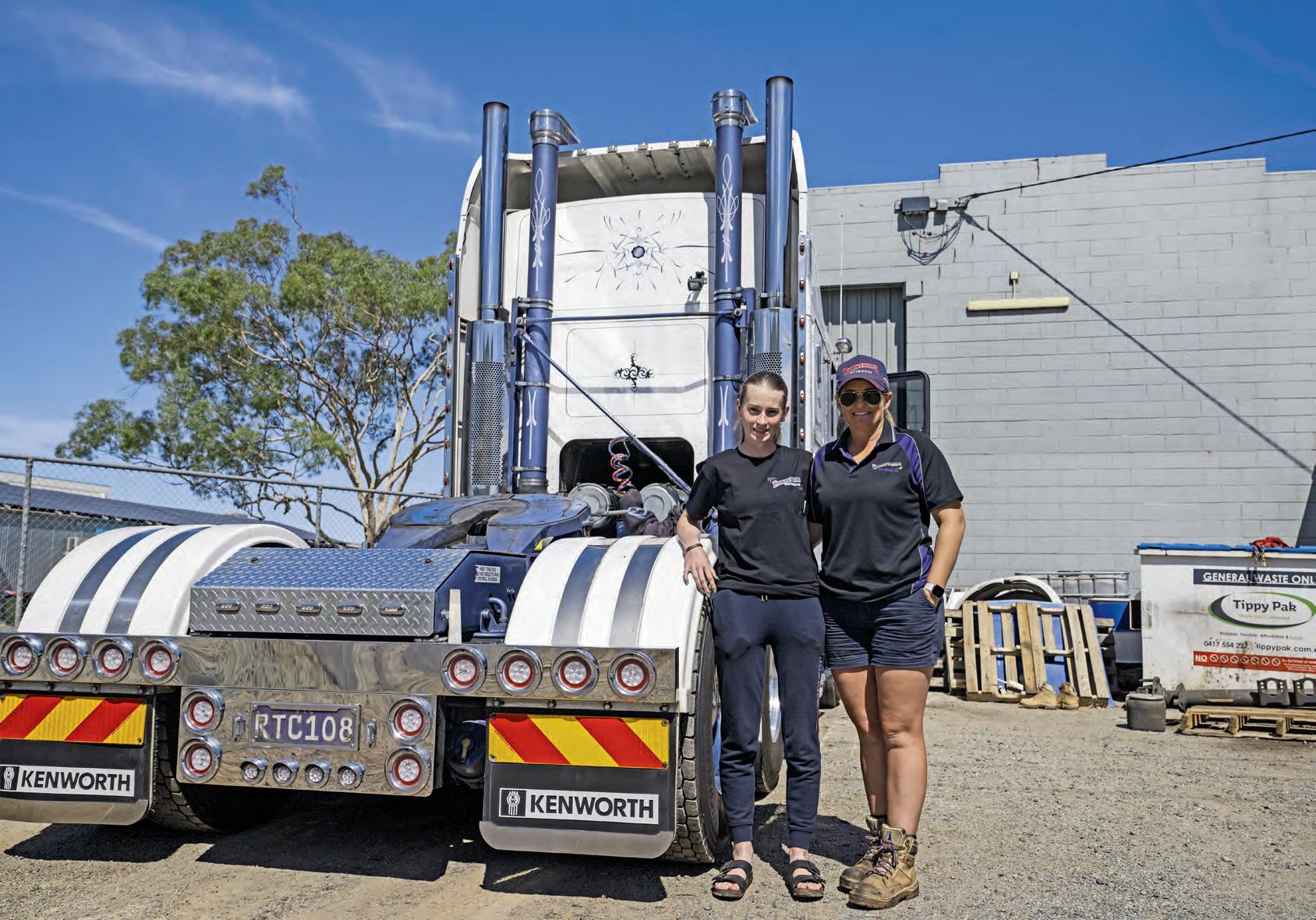
Opposite top left: The Runnymede Trucking Company has a pretty accurate motto, as seen on the company hats – ‘Play Dirty’. It’s a mark of Sharna’s approach to the business, literally – she is not afraid to get in and get her hands dirty. Be it loading, repairing, driving. Dirty hands equal hard work
Opposite top right: Pearl Craft has extended beyond just steering wheels these days. Sharna found the whole polished pink accessory kit for her K108; Sharna’s K108 is full of Sharna styling
Opposite bottom: It may not be her favoured spot within the transport industry, but the office chair at Runnymede Trucking Company is just another domain that Sharna has had to learn and succeed in
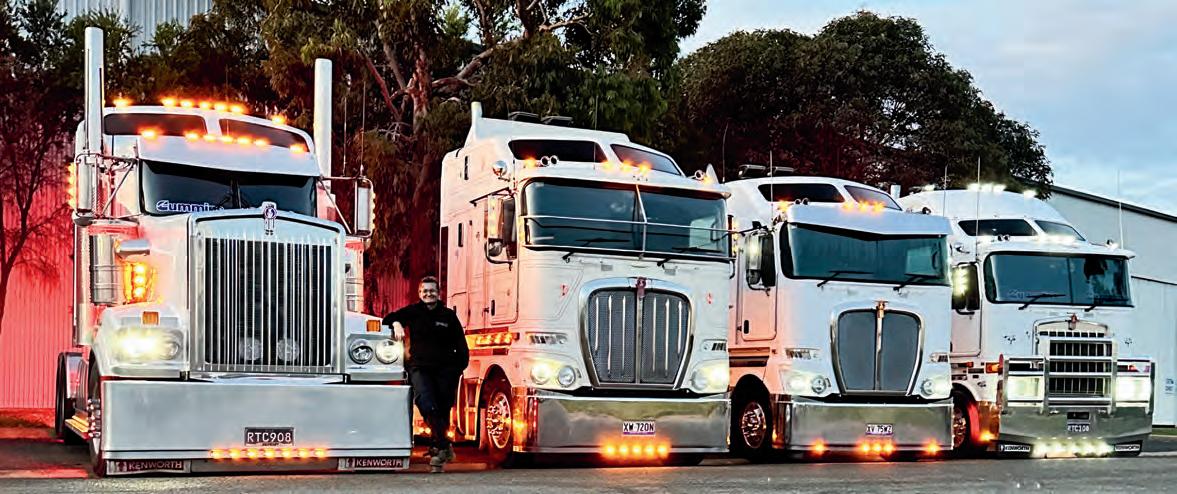
A couple of years there, a bit of time in an abattoir and next thing you know Sharna is married, she has a young daughter, Rhylee and trucking took a short back burner position.
The next chapter of Sharna’s life saw many things happen. Her new husband and father of her children was a farm worker and contractor, which in turn meant Sharna became a farm worker and contractor as well. The couple purchased a small truck for transporting their contracting gear around and subsequently, much to her father’s earlier disapproval, Sharna went and got her HR licence. This allowed her to get a bit of time behind the wheel rather than just sleeping in the passenger seat.
All of this work and family was taking place around the Elmore area of Victoria and, within a couple of years, Sharna and her husband had built quite a successful company out of chicken catchers and manure distribution. I know it sounds like a weird combination, but it worked. Sharna was flat out looking after the books and, whenever she had the opportunity, she would get behind the wheel of the company’s truck and dog combination and either deliver or distribute manure. I did
mention this young lady wasn’t afraid to get her hands dirty, right?
By late 2017, with three kids to contend with and a very busy agricultural business, the couple decided to branch out with the purchase of a local transport company, Runnymede Trucking Company.
“We bought the business with the work, so we had five B-double set-ups,” she says.
“Luke and I also bought another 9-oh to help cover the workload.”
Three months into the new venture, life took a rather sharp turn when the couple split. Sharna’s husband handed the new business venture over to her, and in return took the house and the original agriculture business.
It was a very difficult time. Sharna knew the books, knew about hard work and knew a bit about trucks, but becoming the managing director of a transport company was a huge step. Fulfilling that role while also looking for a new family home and battling a divorce – well that’s a lot to take on.
I’m not going to go into all the challenges that Sharna faced
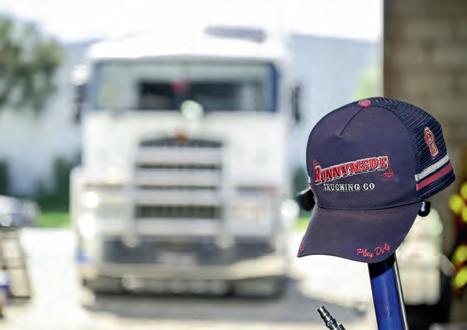
over the next few years as she took on the role of mother, relief interstate driver, bookkeeper and managing director. Suffice to say, hurdles like truck accidents, dodgy brokers and accountants, difficult staff and unscrupulous behaviour meant it was a very difficult learning curve for Sharna.
As the old saying goes though, ‘tough times don’t last, but tough people do’ – Sharna epitomises that mantra. Those first few years saw plenty of changes and challenges placed in front of Sharna. On their own, many of those challenges would have been enough for anyone to pack up their toys and head home – not Sharna though.
“It was really tough, but I had to make it work. I had no choice, I still to this day have no choice, I have to keep going,” she says.
Sharna is the first to heap praise on her new partner Shannon and her friends and family for helping her each and every day with keeping things afloat.
“I’m still here today because of what myself, Shannon and others have put into this” she says.
However, that in itself needs to be broken down a little. It wasn’t just her resilience that kept the wheels turning. It was Sharna’s ability to cover whatever role was needed at the time. Her adaptability and versatility.
When Sharna’s operations manager retired, she had to suddenly come out from behind the scenes and start dealing directly with customers at both ends of her client list. While this wasn’t her preferred role, she slipped into it with ease and built stronger relationships with them.
“We have a small select client base which is good, because you can make it very personal with them,” she says.
Another role that Sharna began filling that she was much happier about was the truck driving position.
“I started shuttling trailers for the drivers,” she says. “It makes their lives a lot easier, and I still do it now. I will run the trailers out to them, it saves them logbook hours and makes it safer for them.”
Another role that Sharna has become immensely proud of is her role as company service mechanic. The role came around due to financial restrains in the early years, however once Sharna started
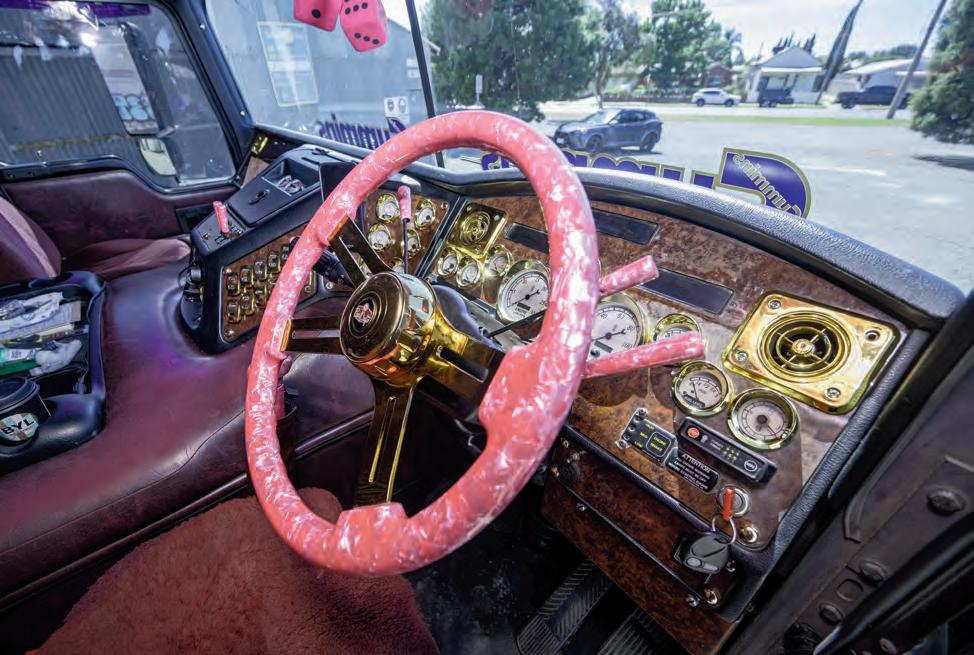
“I’ve changed motors over, I’ve replaced heads, I’ve rebuilt every truck I’ve owned.”
learning the ins and outs of the Cummins engines she runs, it became a task she thoroughly enjoyed.
“I’d done a little bit of service stuff on the farms, but when things were tough, I decided to learn how to do my own servicing,” she says.
“All our trucks run Cummins, and I had a good mechanic who would teach and talk me through everything, even Face Timing me to talk me through the bigger jobs. I bought a set of the Cummins manuals myself and learnt from there.”
Sharna threw herself into the mechanic role just as she had with the operations manager role and the truck driver role.
“I’ve changed motors over, I’ve replaced heads, I’ve rebuilt every truck I’ve owned,” she says with pride.
“I know my limits though; I will take care of the stuff.”
The bandaged finger I mentioned at the beginning


is a testament to her hands-on approach.
As much as this story is about the versatility and resilience of this young Victorian mum, she is the first to admit that it has been a team effort, and her survival is not just down to her.
“My partner Shannon – he has driven in this business for the past 13 years, so he’s been through the previous owners as well,” she says.
“He had a very good background of how things ran, so he helps a lot.”
He has also taken Sharna’s eldest daughter under his wing and allowed her to follow in her mother’s footsteps.
“Rhylee goes with Shannon a lot and wants to drive trucks when she’s old enough,” she says.
“She also helps me in the workshop, servicing, rebuilds, everything. Plus, she works in the office on compliance stuff.”
It is difficult to shine a light on all the success Sharna has achieved without bringing up the battles she has faced, but that’s not what we want to focus on. The object of this story is to focus the light on the resilience and determination of this young mum. In a male dominated industry, she has taken on every role necessary – operations manager, compliance manager, truck driver, off sider, mechanic, tyre fitter and owner. She has taken on all of these roles without question and without hesitation. She has learnt quickly in some cases and gradually in others, all in order to keep her dreams alive and to keep her drivers employed and her bills paid. She has achieved just that.
After all the trials and tribulations, the transport industry is still an arena that Sharna loves and believes is a great industry for women to get into in any aspect. Sharna herself has proven that there is no domain a female can’t succeed in and, with the right attitude and a whole truck load of grit, you can achieve. Like Sharna though, you need to be prepared to roll up your sleeves and get your hands dirty.
April 1 is usually the day of pranks, but this year it also serves as the launch date for Oz Truckers – the latest tool to benefit Australian truck drivers
For all of the long hours spent behind the wheel, the delays and loading and unloading, truck drivers deserve some recognition. Over the past few years, the power of truckies to keep Australia moving, even in times of crisis, has shone through especially strongly.
In the midst of these gruelling trips, constant disruptions and safety challenges, Australian truck drivers are now set to be rewarded in the form of Oz Truckers.
Launching on April 1, Oz Truckers is a new initiative that will provide a range of discounts for Australian truck drivers. Via a subscription process, drivers from the Kimberley to Koroit will be able to save on everything from fuel to parts and repairs.
“During my recent time in the industry, I got to spend a lot of time talking to owner drivers and smaller transport companies – I found they had plenty of pain points when it came to expenses and funding their lives on the road,” Oz Truckers founder Andrew ‘Drew’ Davis told OwnerDriver
“I decided to create Oz Truckers – a place to provide discounts, rewards and enticing offers for anything that adds value to a driver’s life.”
Oz Truckers will initially deliver helpful offers that focus on smaller tier owner drivers and companies, with the goal being to evolve the subscription service to something that also encompasses larger-scale fleets. When the service launches in April, it’ll create an online community of truckies that can enjoy savings on fuel, tyres, parts and servicing, truck/ trailer purchases and rentals, workwear, phone plans, subscriptions, insurance and financing, travel and food and beverages.
“We started by thinking of very truck-specific items and expenses that drivers have, such as fuel and parts, before we branched out into more general benefits such as accommodation, travel, home loans and gym memberships,” Drew says.
“It’s all about adding value to our member base and alleviating cost pressures currently placed on Australian truck drivers.”
To create the hub of truck driver savings, Drew and the Oz Truckers team have established a network of partnerships with various companies to achieve benefits for a range of areas. Whether it be buying food at the nearest truck stop or financing key assets, an Oz Truckers membership will allow truckies to receive discount codes for online purchasing and enjoy online giveaways.
“From my time in the industry, I’ve seen a lot of owner drivers who don’t get any discounts on petrol, so this will be a massive boost for them,” Drew says.
“We charge up to $79 a month for membership, with all of the value going back to our drivers and our carrier base. We’ve already calculated that drivers could save up to $500 a month on fuel alone by using our savings, so you already make money out of the membership before looking at the parts and servicing side.”
Throw in truck and trailer financing and further money can be saved at the click of a finger. Through monthly or annual memberships, the Oz Truckers team will continue growing the benefit partnership network to deliver more savings to truckies moving forward.
Drew is also planning a $29 a month membership that will be solely based on lifestyle benefits, meaning drivers who are already on employee benefit schemes with their businesses can still enjoy external savings with Oz Truckers.

“IT’S ALL ABOUT ADDING VALUE TO OUR MEMBER BASE AND ALLEVIATING COST PRESSURES CURRENTLY PLACED ON AUSTRALIAN TRUCK DRIVERS.”
“If you work for someone, they may put carriers on schemes that give you benefits on fuel and more,” Drew says.
“So we have an option outside of these core savings where truckies just get access to lifestyle benefits – someone may buy this for themselves, or they may push their business to look after drivers by setting them up on the employee benefits lifestyle membership.”
The benefits that come part of the Oz Truckers membership isn’t just chosen at random by Drew and his team – he has spoken to many transport businesses to learn which savings would help drivers the most around Australia. Having started the idea just late last year, he has already proven the concept will be popular among many drivers and small fleet owners in the near future.
“The appetite for business partners in transport to come onboard has been incredible, as it’s a way for them to target owner drivers and sell their services to them,” he says.
“We’ve had good feedback from partners and carriers that we’ve chatted to, so we know the demand is there to give truckies some savings, from their fuel and parts to their lifestyle choices.”
Pre-registering is currently available on Oz Truckers’ website before the app and membership goes live on April 1. While word is getting round of the new benefits scheme and how it can save drivers plenty of cash, Drew is now looking to let the entire Australian owner driver network know about the savings he has stored in his Oz Truckers membership.
“We’re also now finalising some deals with larger part and tyre manufacturers to add more savings to the membership,” Drew says.
“On the retail side, we’ll also have more partners added by the opening date, ranging from travel booking websites through to choice hotels, health insurance providers and fitness facilities.
“We don’t want to drip-feed benefits to our members – it’s a matter of having the right partners on board from the start to help truckies immediately.”
Recent focus has been on securing partnerships with health and fitness companies, ranging from gyms through to health food companies. Drew says Oz Truckers isn’t just about saving truckies’ money, but also guiding them towards healthier lifestyle choices while behind the wheel.
Outside of this, Drew’s wider goal is for Oz Truckers to guide truck drivers to be safer and healthier while on the roads. It may just be the start of his new venture, but the release of Oz Truckers promises to revolutionise the Australian truck driving community.
“Stay tuned for more partner information and for early bird rates – there may be costs involved, but we’re confident the benefits far outweigh the costs involved,” Drew says.
“When you have an active membership base getting value from the platform and using it daily or weekly, it’ll create so much opportunity for more value to be added around safety. We already have partners involved in Electronic Work Diaries and fleet management, so we want to build our base and give back to the trucking community as much as possible.”



variety of
There are many key events, album releases and notable birthdays that have shaped the Aussie rock music scene. Enjoy these anniversaries and birthdays for the month of April from the Australian Truck Radio Rock’n’Roll Diary!
April has been a significant month in the history of Australian rock music, marked by notable album releases, key events and the birthdays of influential musicians. Here’s an overview of some of these milestones:
Key events
APRIL 1
1975: The John Butler Trio’s leader John Butler was born on this day. His band has since become a prominent name in the Australian music scene, known for their eclectic mix of blues, roots and rock.

SIMON SMITH is the manager and producer of Australian Truck Radio. He has been in the radio game for 44 years and has been customising playlists for truckies for at least 20 of those. For great tunes 24 hours a day, 7 days a week, download the digital app for your phone at www.australiantruckradio. com.au
“These events and birthdays highlight the rich and diverse history of Australian rock music.”


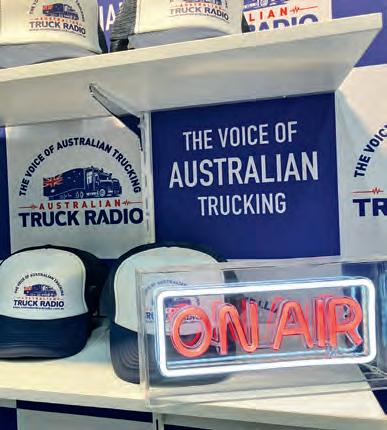
for Powderfinger, being one of the founding members of the band.
APRIL 16
1953: Peter Garrett, an Australian musician and political figure, was born in Sydney, New South Wales. He is best known as the lead vocalist for Midnight Oil, as well as for his political career in the aftermath.
APRIL 17
1977: Phil Jamieson, an Australian musician and lead vocalist for Grinspoon, was born.
APRIL 27
1970: Australian musician and bassist John Collins was born. From 1989 onwards was the
APRIL 28
1956: Jimmy Barnes, an Australian singer and songwriter known for his work with Cold Chisel and his solo career, was born in Glasgow, Scotland.
In Memoriam:
APRIL 9
2022: Chris Bailey, the lead vocalist and guitarist for The Saints, passed away. The Saints are considered pioneers of punk rock in Australia
These events and birthdays highlight the rich and diverse history of Australian rock music, reflecting its evolution and the contributions of its artists from the Australian Truck Radio Rock’n’Roll Diary!
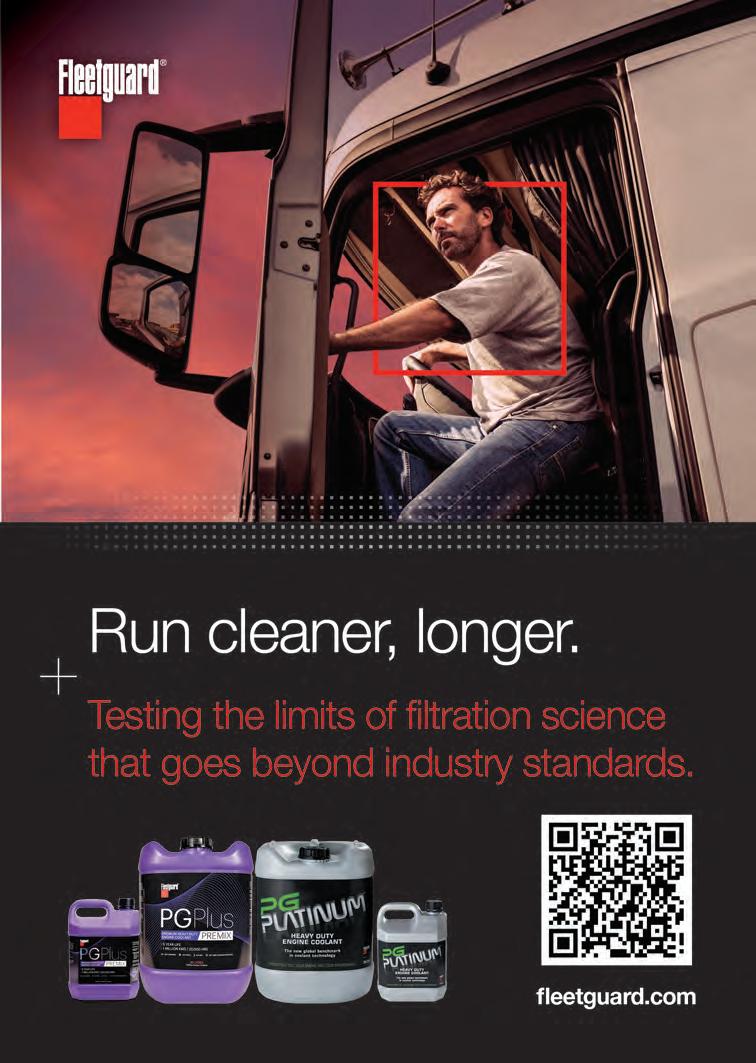
Safety Dave’s Tyre Pressure Monitoring System, Safe-T-Tyre,
is using the latest technology to ensure the wheels keep turning on Australia’s truck fleets
Do you know just how many features are installed on a modern truck to keep you safe? While the latest models include safety cameras and monitors that are fairly easy to spot on a dashboard when you hop into a cab, many truck parts now come with tiny systems that make them safer than ever to drive on Australia’s freight routes.
Founded in 2002 and now part of the RPM Automotive Group, Safety Dave is well versed in the game of premium safety solutions on local trucks. Its extensive range of top-quality safety products ranges from rear vision monitors to defibrillators and the Safe-T-Tyre’s tyre pressure monitoring system. Among these, it’s the Safe-T-Tyre that has become a major safety tool for Australian truck owner drivers.
“In the realm of automotive safety, there are few aspects more crucial than tyre maintenance,” Safety Dave general manager Sven Straub told OwnerDriver
“Ensuring that your vehicle’s tyres are properly inflated not only enhances fuel efficiency and prolongs tyre lifespan, but it also, most importantly, reduces the risk of accidents caused by tyre blowouts or loss of control.”
This is where Safe-T-Tyre’s Tyre Pressure Monitoring System (TPMS) is helping keep a vigilant eye on the tyre pressure of vehicles all around Australia, providing a reliable and easy safety system. Sven says that a truck’s operational efficiency is heavily dependent on tyre health, yet incorrect tyre pressure remains one of the most overlooked factors contributing to breakdowns, increased fuel consumption and costly replacements.




“Implementing a TPMS is a proactive step towards optimising vehicle performance and reducing risk on the road,” he says.
One of the standout features of Safe-T-Tyre’s TPMS is its real-time monitoring, allowing drivers to receive instant feedback on the health of the truck’s tyres while the vehicle is on the road. Any tyre pressure reading outside the customised range will immediately trigger an audible alarm, with the display unit highlighting the exact tyre that requires attention. This proactive approach allows operators to address any potential issues immediately before they escalate into safety hazards.
“Equipped with precision sensors, Safe-T-Tyre’s TPMS delivers accurate tyre pressure readings, ensuring drivers have the most reliable information at their fingertips,” Sven says. “With an accuracy of +/- 1 PSI, the Safe-T-Tyre sensors allow operators to say goodbye to guesswork and instead say hello to precise tyre maintenance.”
Another leading part of Safe-T-Tyre’s TPMS range is its user-friendly interface that encourages owners to look at tyre pressure readings in a clear and easy
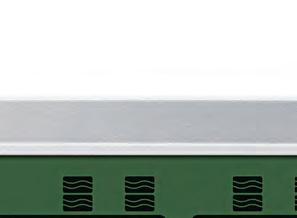
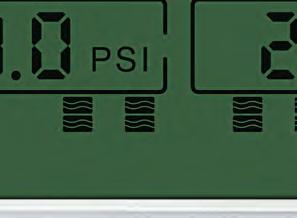

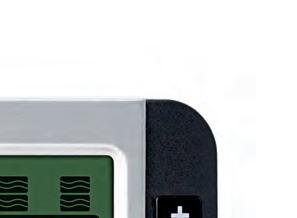


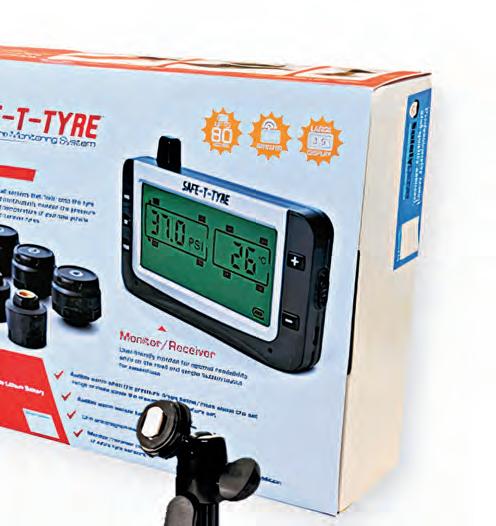

to understand way. Whether the person behind the wheel is a seasoned veteran or new to trucks, TPMS is designed to be easy to use for all users.
“Safe-T-Tyre’s TPMS also uses wireless technology to transmit data between sensors and the display unit,” Sven says.
“This eliminates the hassle of tangled wires, ensuring a smooth user experience.”
It’s this range of features that gives fleet operators and owner drivers a raft of safety and cost benefits when they install Safety Dave’s TPMS onto their trucks. Over the long-term cycle of a truck’s life, the TPMS can also give significant financial benefits to owners due to the reduced tyre replacement frequency and improved fuel economy.
The simple rechargeable lithium battery display unit, pre-installed by Safety Dave, has a userfriendly interface and can support up to 22 tyre pressure sensors, immediately getting to work to keep your tyres in tip-top shape. For larger setups, an additional monitor can be added if more tyre pressure sensors are required.
“Safe-T-Tyre’s TPMS is engineered to meet the highest standards of quality and reliability, providing drivers with peace of mind on the road,” Sven says.
“With its advanced features, user-friendly design and precise monitoring capabilities, this TPMS is a must-have addition to any vehicle.”
Whether you’re embarking on a long road trip or simply commuting to work, trust in Safety Dave to keep you safe and your tyres in top condition. For more enquiries, contact the team at Safety Dave via telephone on 1800 498 657, SMS on 0483 932 329 or email to enquiries@safetydave.com.au.


I“The Equipment Finance Experts”

Since its humble beginnings, Chevron Equipment Finance has continued working closely with customers to deliver solutions that grow the Australian transport industry
t’s been 10 years since Chevron Equipment Finance (CEF) was first formed in Australia. While many in the industry may expect the name to come from the well-known fuel and lubricant manufacturer, the origins of CEF actually have a more Australian feel.
“CEF was formed by director Chris Bradd back in 2015 on Chevron Island, Queensland,” partner and Queensland assistant finance manager Keith Clearihan told OwnerDriver
“Chris cut his teeth in finance working with truck dealerships and had a successful career in the heavy haulage sector before starting CEF.”
From humble beginnings as a solo operator, Chevron Equipment Finance has steadily grown since its inception to become one of the most trusted brands in equipment finance across Australia. Specialising in all manner of equipment finance, CEF has made a name for itself by servicing all major industry sectors in Australia, including transport and heavy vehicles.
“Our outlook of ‘our first answer is always yes’ has been critical to our ongoing growth and success,” Clearihan says.
“Our team has successfully established ourselves as the equipment finance experts in Australia.”
After helping more than 3,000 transport customers to finance new and used trucks and trailers in the past year alone, transport is clearly a major focus area for the company.
With a strong foothold in the local trucking and freight industry, CEF now services thousands of customers across the country, ranging from large established fleet customers through to new startups and the many owner drivers who are getting a start in the sector. Clearihan says the secret to CEF’s success in the transport market has been taking a trusted advisor mentality, cementing its reputation by driving its strong core values.
“CEF approach the market and customers with the idea of being a trusted advisor to the nation’s truck
owner operators and companies,” he says.
“Led by our first answer always being yes, we also have core values that include operating as a team of experts rather than individual general practitioners and having a sense of urgency in everything we do.
“On top of that, we also operate 24/7 to earn our customer’s trust and satisfaction, while we also operate with the highest of ethics and make sure we deal with clients who align with these ethics.”
In the space of just under 10 years, these core principles have helped CEF grow to over 30 expert staff with strong ties that make it the go-to brokerage for trucks and trailers. Clearihan says the CEF team understands that customers in the trucking sector need expert guidance, and that urgency is key due to the costly impact of delays on any size operation.
“We aren’t a bank, so we’re available 24/7 for customers, especially when the going gets tough,” he says.
“We continue to be a leading trusted brand in the space with a five-star Google rating.”
While the CEF name was first launched in Queensland, CEF now has three locations across Australia. This expansion has seen the brokerage base itself out of a Burleigh Heads head office in Queensland, while a Melbourne metro location has recently been joined by an office in Albury Wodonga. Clearihan says the latter has been critical to CEF expanding its regional capabilities for operators in rural settings.
“Our brokers operate nationally and will travel anywhere in Australia at the drop of a hat when needed,” he says.
“We’re also lucky to have industry-leading IT and support staff on hand to enable us to move around the country when duty calls.”
A sign of CEF’s growth in recent years has been the increase in its service offerings that it is putting out to market. Due to high demand from its existing client base, CEF launched Chevron Insurance Consultants in 2018 to help clients receive better coverage for
a better price.
In addition to the insurance side, CEF has also added Chevron Money Australia to its list of offerings to specialise in commercial and residential mortgages.
“This means we have all bases covered for our customers in the transport game,” Clearihan says.
“Equipment finance will always be at the core of who we are and what we do, but now we have a team of specialists in-house that can help our customers grow their businesses safely while also growing their personal wealth through property.
“Our motto is if we can’t do it, no one else can.” Due to this heavy and expanding presence in the Australian trucking scene, CEF will once again be exhibiting at this year’s Brisbane Truck Show from May 15 to 18. While the company is keen to meet new and existing clients in Brisbane for the event, it’ll also be hosting a draw to win a pre-paid fuel card, while a popular competition will make an appearance in Brisbane.
“The Brisbane Truck Show is a great way to meet friends both old and new and to see the latest offerings and newest technology in the transport industry,” Clearihan says.
“We always have a great time there and this year will be no exception. We’ll have great giveaways there, while we’ll also be returning with our ‘Australia’s toughest truckie’ competition, which was a huge hit at the Casino Truck Show in 2024.
“We had heavy hitters from tow truck operators to major fleet managers testing their might on the punching machine to win the title and their height in beer! We’ll also be running a draw to win a pre-paid fuel card, and the team is keen to get amongst the chaos with the industry folk.
“If you’re at the Brisbane Truck Show this year, you can find us at the top of the stairs and to the right, just before the bar area, so stop by, have a swing and grab a stubby cooler on your way through.”
To find out more about the equipment finance experts, head to www. chevronfinance.com.
Robert Bell and the Highway Advocates call for fairness in the wider transport industry, raising an alternative to help solve the skilled worker shortage
Many of you reading this will know I have advocated for the transport industry for many years. From appearing in Senate hearings to being featured on the ABC 7.30 Report, I have long been an advocate in the true sense of the word. This innate sense and the ability to carve a niche created Highway Advocates and was the driving force to help it become what it is today – providing heavy vehicle lawyers to the transport industry.
Some of you may know that I have spent a fair bit of time in India over the past couple of years and am currently working on another business venture – advocacy of a different kind. While my passion for the transport industry remains steadfast, I have also found a new avenue where I can apply my skills and experience to make a difference.
The transport sector, especially for owner-drivers and small operators, continues to face significant challenges. Regulatory compliance, rising costs and the ever-evolving landscape of laws and enforcement make it a tough industry to navigate. Through my work, I have always sought to provide practical support, ensuring that drivers and operators understand their rights, responsibilities and the options available to them when dealing with fines, compliance issues or legal challenges. I now possess a Certificate Four in Risk and Compliance, which will be the foundation of one of the pathways I am now taking.
My commitment to advocacy has always been about fairness— ensuring that hardworking people in the industry have a voice and the resources they need to operate successfully. Whether pushing for legislative changes, representing clients in legal matters with leave of the court or educating the industry about its obligations, my focus has always been real-world outcomes.
This new venture I am working on has given me a fresh perspective on advocacy. While it may differ from my work in the transport sector, at its core it is still about empowering people, standing up for fairness and making sure the right voices are heard.
I remain committed to the transport industry and will continue to
advocate strongly for those who keep Australia moving. I look forward to sharing more details soon and continuing to fight for the rights of owner-drivers and transport operators.
However, Highway Advocates (Australia) is still kicking goals in courts all over the country. Now safely in the hands of principal solicitor Rodney Boyd and his team of solicitors and paralegals, I remain a consultant, the “industry insider”. The brand that I created is now synonymous with advocacy for the industry. Some recent outcomes from around the various courts include the following:
• One client had been charged with four critical risk breaches, with a potential maximum penalty of almost $80,000 and 16 demerit points. The outcome was four conditional release orders without convictions for only three months –a truly amazing outcome

• Another client faced two severe risk charges, with a potential maximum penalty of over $25,000 and six demerits. Both offences were dismissed without conviction
• In another life-saving outcome, our client faced a plethora of charges thanks to our “friends’ from the Vicpol Heavy Vehicle Unit. The potential maximum penalty was well over $120,000 in enough demerit points to take our client off the road for a long time. We achieved a court undertaking without conviction for 12 months and a $1000 donation to the Court Fund.
We could write about many more, with Highway Advocates in courts around Australia every day of the week. These outcomes don’t happen by accident; they are the result of many years of experience and research, topped off by Rodney Boyd and his team’s legal prowess.

Highway Advocates is a legal firm focused exclusively on dealing with offences directed at heavy vehicle drivers and operators, led by solicitor RODNEY BOYD and industry insider and former truck driver ROBERT BELL. Email info@ highwayadvocates.com. au or phone 0488 01 01 01
Returning to India, I note that the Australian authorities have started to enforce student Visa conditions, when previously there appeared to be little or no such enforcement. This crackdown is resulting in deportations in some cases. We also hear various associations crying out for the need for some sort of traineeship for truck drivers to address the current critical shortage. Here’s an idea. Why not create a diploma course that allows Indian drivers to gain vital skills and knowledge while still complying with student Visa requirements? With over one million Indian-born people living in Australia presently (out of just over 27.5 million in total), Indians represent and present a vital cog in one of our most important industries. Having spent quite some time in
“Here’s an idea. Why not create a diploma course that allows Indian drivers to gain vital skills and knowledge while still complying with student Visa requirements?”

India, I truly believe we could learn a lot from what I have gleaned from my time here. We need truck drivers more than ever here in Australia. Let’s give them the tools and means to succeed rather than setting them up to fail.
Well, that’s my two bobs’ worth for this month. Remember, call 0488 01 01 01 if you need legal assistance or 0491 263 602 for your compliance needs. Soon, we will be your one-stop shop for world-class medical, dental and cosmetic surgery options with fees that will blow your mind (in a good way). Look out for Destination Transformation – Affordable Medical Tourism.
Stay tuned for updates, and as always, if you have any concerns or need assistance with transport-related legal matters, feel free to reach out.

The NRFA’s Chris Roe recalls his
involvement in the famous Australian owner driver protest and the continual impact of the movement decades on
By the time this edition of OwnerDriver hits the newsstands, drivers’ rooms and roadhouses of the country, the 46th anniversary of the industry defining Razorback Blockade will have passed. It is doubtful that it will get even cursory recognition from our current crop of industry associations, who in many cases are unwilling to admit that this vagabond action was the forerunner to much of our current industry activism.
On April 2, 1979, a crazy brave group of individual truck owner drivers, with the late Ted Stevens as their spokesman, used their trucks to block the Hume Highway at Razorback Mountain and so began what one leading industry podcaster often refers to as “the greatest insurrection since the Eureka Stockade”. The catalyst for this action was much the same as for the Eureka Stockade – a punitive tax inflicted with an iron fist on those least able to lobby and object. The actions taken and the successes achieved at Razorback over the next 10 days are etched into transport industry folklore, but there is a wider scope to the story which often goes untold and unrecognised.
While the bravery of the original protagonists can never be denied, I’m sure that the surviving members of the original group would agree, without a groundswell of support from operators across the nation, the whole protest may well have been short lived. At its height, there were 3000 trucks blockading at 40 locations across four states of the country. Places such as West Wyalong, Boggabilla, Aratula, Kalkallo, Horsham, Goulburn and Yass are some that I can remember, and no doubt readers will recall many more.
I joined the blockade at Tocumwal on the picturesque Murray River border bridge between Victoria and New South Wales. To fully understand the commitment so many made to the cause, you have to appreciate that in 1979 our only forms of communication were the landline telephone, the 27megahertz CB radio and the John Laws radio show. This was an era before mobile telephones, internet, emails and social media, and certainly no Zoom meetings.
We had no way of getting instant communication with the blockade ‘headquarters’ and I’m sure that at
Tocumwal at least, none of us had a clue who the bloody hell Ted Stevens, Spencer Watling, Jack Hibbert, Barry Grimson or Colin Bird were, but we were prepared to take a giant leap of faith into the unknown for the chance to achieve an outcome that would benefit the whole of the industry. It is often said that this is one of the few times that the transport industry was truly united, but occasionally a level of persuasion was required to achieve that unity. Over the next 10 days we worked diligently with minimum communication to halt freight movements through our blockade while causing as little disruption as possible to essential services or the general public. And thankfully without any form of social media being in vogue, we were able to win the wide support of the local community and public at large. Many lifelong friendships were formed in those heady days and while names often escape me nowadays, whenever you cross paths with someone who was involved, there is a knowing sense of satisfaction, achievement and even pride.
On February 15 this year, the National Road Freighters Association held its Annual Conference in Brisbane and, while it was strongly supported by politicians, the NHVR, NTC, Fair Work Australia representatives, delegates

from other industry associations and our loyal sponsors, if we are to be brutally honest, the level of support from owner drivers, small to medium operators and their drivers, who were the very people most likely to benefit from the information and presentations provided, was disappointing. We are aware that attendance would have required a financial commitment and in a slowing economy that can be a restricting factor. Another uncomfortable truth is that all industry associations struggle to attract commitment from potential grassroots industry members without some form of membership gimmickry. Even the attendance of two legendary guest speakers Dean Croke and Chuck Snow, who have a huge following in transport analytics and on the Rates and Lanes Podcast and the sponsored appearance of a local social media celebrity failed to bolster attendances from the industry coalface. The NRFA have in recent times been able to position themselves on the inside of many discussions and have been able to influence outcomes in the NHVL review and recent changes to the Industrial Relations landscape including the ‘Closing the Loopholes’ Bill. We are currently also working very hard at getting the NHVR’s approach to roadside intercepts of ‘Inform, Educate and Enforce’ to be adopted by all state NHVL enforcement agencies. We also have two board members very actively involved in the Rest Area Steering Committee in an endeavour to create a safer environment to allow heavy vehicle operators to manage their fatigue while remaining compliant. For a minimal financial commitment of $120 per year, you too can have the opportunity to be heard in a group of likeminded operators who, like you, understand the complexities of operating a business in a highly competitive and regulatory complex industry. In a world where it is easy to gain information on everyone and everything involved, with just a small leap of faith you might also be involved in achieving positive outcomes, forming lifelong friendships and leaving a legacy for the future.

This year, Healthy Heads wants the industry to know there’s no qualifications required to ask someone if they’re ok
In an ongoing effort to build a more supportive, connected and psychologically safe culture in the road transport, warehousing and logistics industries, Healthy Heads in Trucks & Sheds (Healthy Heads) has partnered with R U OK? for the fourth consecutive year.
Together, we are inspiring connections and genuine conversations through R U OK? in Trucks & Sheds, an industry-wide initiative that encourages companies large and small to come together, connect, share stories and learn how to have an R U OK? conversation any day of the year.
This year’s day of action will be held on Tuesday May 6 and comes with a powerful reminder: “Ask R U OK? – No
qualifications needed”. This message emphasises that you don’t need to have formal training to support a mate or colleague navigating a tough time –listening and giving someone your time might be just what they need to help them through.
The importance of our joint initiative cannot be overstated. In addition to life’s ups and downs that we all navigate, road transport, warehousing and logistics staff can face unique challenges. These can include long hours, isolation, separation from family and friends and physical demands, all of which can take a toll on wellbeing, both physical and mental. These unique challenges place those working in the industry at higher risk of experiencing
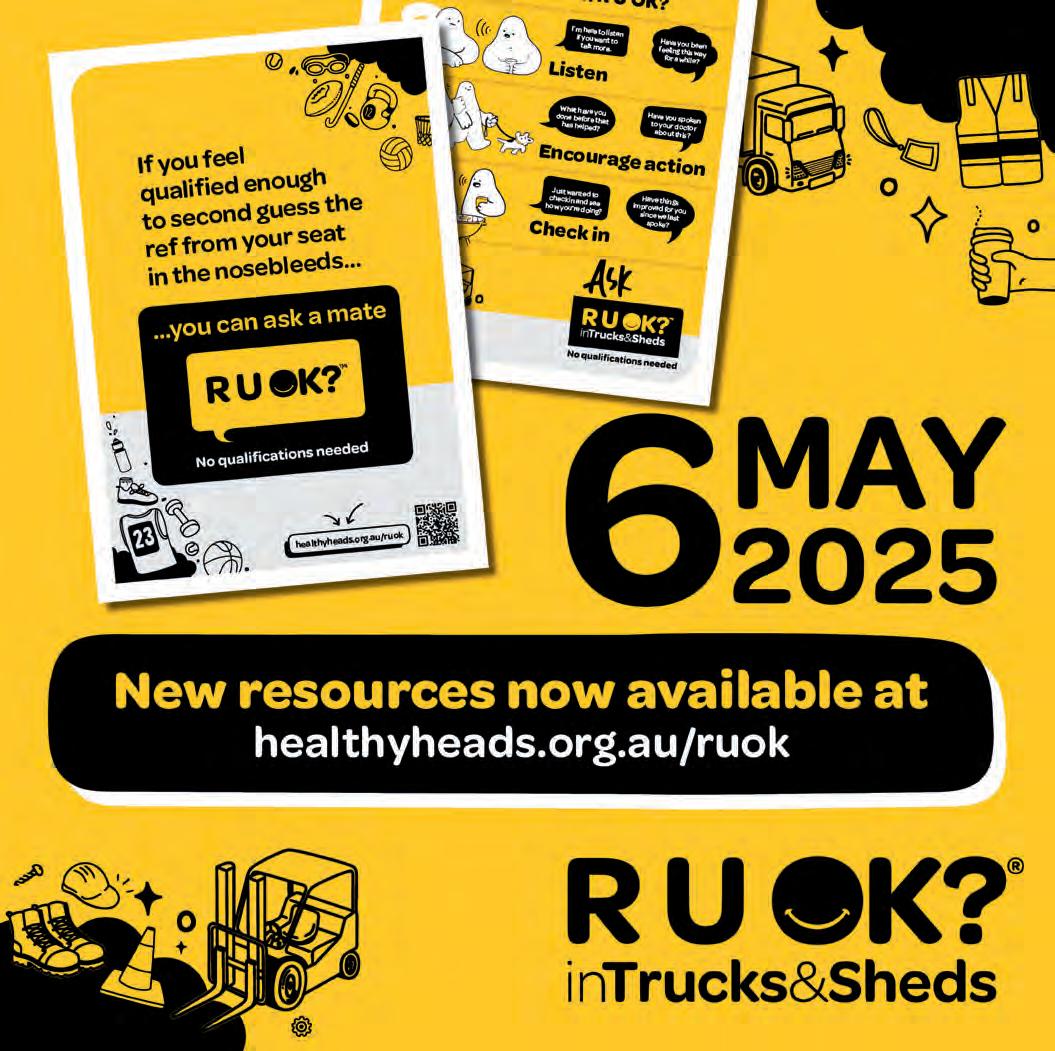
mental ill-health, as evidenced by the Superfriend Thriving Workplace Index that reported 48 per cent of individuals in this sector believe their workplace either caused or worsened their mental health condition, a higher percentage than the national average.
Research has found those on the receiving end of a meaningful R U OK? conversation feel supported, heard, safe and better about managing their situation having talked it through with someone who showed genuine interest and concern. This is why it’s so vital to ensure everyone has the tools and confidence to meaningfully connect with a mate or colleague and genuinely ask, “are you OK?”.
To support individuals and businesses to get involved, updated resources are now available at: healthyheads.org.au/ruok/. Resources include helpful guides on how to have an R U OK? conversation, ways to organise workplace events, stories of people with lived experience from within the sector and information on how to access mental health support services. They also offer useful tips to encourage participation, raise awareness and build a safe and supportive culture.
Another valuable opportunity for businesses and individuals is to register as Company Champions. This role provides individuals with important updates, tools and support to ensure their R U OK? in Trucks & Sheds activity is successful and impactful. Being a Company Champion allows individuals to encourage connections and genuine conversations and share tips and tools with their colleagues on how to build an authentic R U OK? culture throughout the year. It’s an opportunity to join the conversation movement driving positive change in the industry.
Regular and meaningful conversations help us to know our workmate’s routines and behaviours and can help us spot the signs they might not be OK. By making R U OK? conversations part of any day, we can normalise talking about what’s really happening in our worlds, so if a mate or colleague is struggling, they’re more likely to open up.
Whether you’re part of a large logistics company or a small owneroperator truck driver, there is an opportunity for you to get involved. Resources are free, accessible to all and by becoming a Company Champion, it’s easier than ever to host events, build conversation confidence and encourage your colleagues to check in on one another.
Join the movement, download the updated resources, register as a Company Champion, and support R U OK? in Trucks & Sheds. Together, we can build a supportive culture across the road transport, warehousing and logistics industries. Let’s “Ask R U OK? – No qualifications needed”. For more information, head to the Healthy Heads website.
1 Superfriend (2023) Indicators of a Thriving Workplace Report, Australia
2 Fiftyfive5 (2023) R U OK? Day campaign research, Australia
Marinovic

Most professional drivers I work with are great about knowing their truck dimensions and being careful around height limitations. The last thing they want is to cause damage or get themselves in trouble.
Accidents and mistakes happen though. Recently I’ve seen a number of drivers accidentally disobey a ‘Clearance’ or ‘Low Clearance’ sign. All it takes is the GPS taking you off route, or your load being positioned a little off, and it’s possible to unwittingly break the rules. The penalties involved when the breach happens at a tunnel or bridge are shockingly high. I’ll admit, even I was surprised by the extent of the punishment (and I’ve seen a lot over the years!).
In NSW, where a driver disobeys a clearance or low clearance sign at a tunnel or bridge, the starting point is a penalty notice with a $4,633 fine and 12 demerit points. That’s both an enormous fine and enough demerit points to almost wipe your entire licence in one go.
The thing many people aren’t aware of is that Transport for NSW can also suspend the driver’s licence and the vehicle’s registration for up to six months. I have been seeing them do this routinely for cases where the truck hits the sign or entrance of the tunnel or bridge. In these cases, the driver is not only dealing with a large fine and losing almost all of their demerit points, they also lose their licence and the truck is out of action for six months (which can be a very difficult conversation to have with the boss if the driver doesn’t own the truck).
One of the tough things about


MARINOVIC is a principal solicitor at Ainsley Law – a firm dedicated to traffic and heavy vehicle law. She has focused on this expertise for over a decade, having started her career prosecuting for the RMS, and then using that experience as a defence lawyer helping professional drivers and truck owners. For more information email Sarah at sarah@ainsleylaw. com.au or phone 0416 224 601

these suspensions is that, in certain circumstances, Transport for NSW can impose them before you have paid your fine or had the offence decided in court. This includes where Transport for NSW is satisfied that the incident caused damage to road infrastructure, involved an accident, caused a danger or obstruction to traffic or caused an adverse effect on public amenity. This means drivers can be facing licence and registration suspensions even while they’re still waiting for the court to decide if they’re guilty of the offence.
There are options available that can help to minimise the penalties. For example, we can elect to take the offence to court and seek leniency regarding the fine and demerit points. We can also appeal against the suspension of the driver’s licence and vehicle registration. Before taking your case to court it’s important to get legal advice, because there are risks involved in some of these options and the likely results vary depending on exactly how the offence happened and the driving record.
There are a few main points I hope to pass on:
1. Be aware of how seriously Transport for NSW takes disobeying clearance and low clearance signs. It’s an area where drivers need to be
“In NSW, where a driver disobeys a clearance or low clearance sign at a tunnel or bridge, the starting point is a penalty notice with a $4,633 fine and 12 demerit points.”
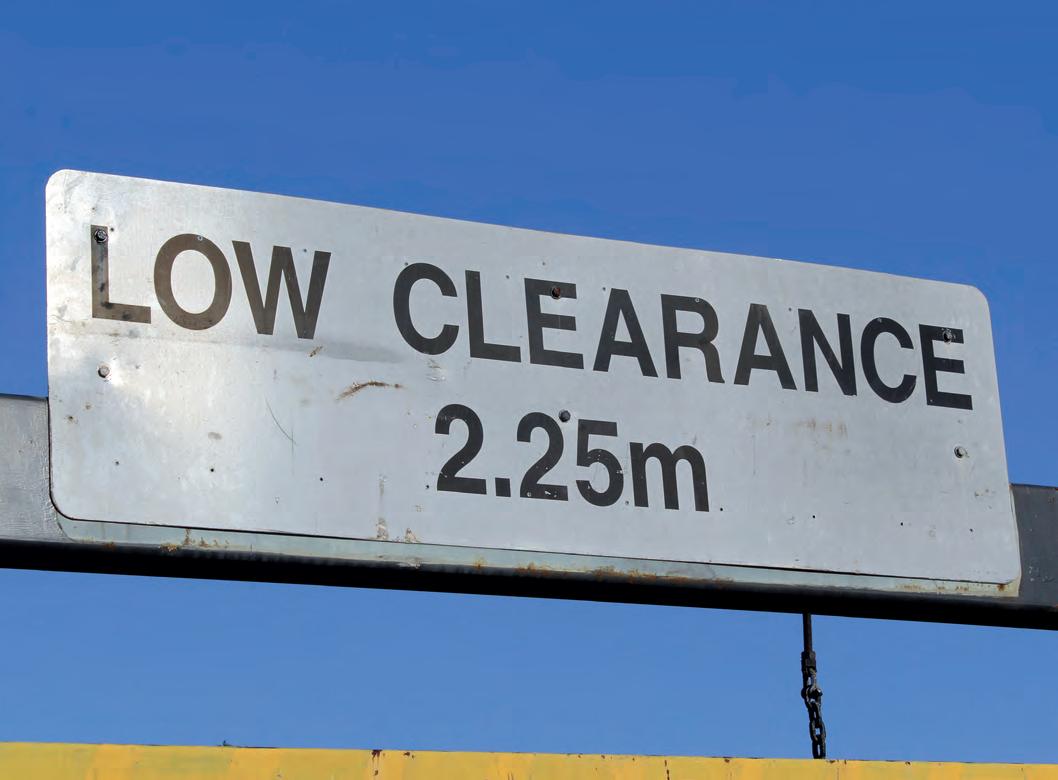
incredibly careful because of the very high penalties.
2. It’s important to get legal advice straight away if you receive a penalty notice for any sort of dimension, mass or clearance sign offence. While the clearance and low clearance sign offences at tunnels are the main ones we are seeing the licence and registration suspensions being imposed for, there are a number of other offences for which Transport for NSW can take suspension action. It’s important to speak to a lawyer so you know what you might be facing.
3. If you do receive a penalty notice for one of these offences, it’s also important to keep an eye out for correspondence about the licence and registration suspensions. There are strict time limits to lodge appeals. If you miss the deadlines then you are stuck serving the suspension. Given these suspensions can be issued before you’ve even paid the fine, it’s important to be conscious of this as soon as you receive the penalty notice.
The Australian truck sales data has capitalised on a strong start to continue going from strength to strength
The Truck Industry Council’s (TIC) T-Mark truck sales data has landed for February, with the heavy hitters excelling to help the industry build momentum to start the year. Following 2,786 heavy vehicles being sold in January, 3,446 were sold in February to ensure the sector got off to a hot start.
When looking at the overall truck market, Isuzu got off to an intimidating start. Following its 765 truck sales in January, Isuzu recorded 1,029 in February to sit far and away ahead of all others in the local market. Hino excelled in second with the 347 February sales, while Fuso solidified third spot with 266 sales for the month. Kenworth came in fourth with the 248 sales, while Volvo (206) pushed ahead of Mercedes-Benz (119) to gain an early lead in fifth spot. From there Scania enhanced its January efforts to record the 92 sales, while IVECO pushed above the pack with 82 sales.
There was change afoot in the heavy duty sales market, with a total of 1,119 sales made for February in the sector. There were no surprises at the top of the table, with Kenworth leading the
way once again with 248 sales. From there, Volvo (203) rose to second, displacing Isuzu (193) and relegating them to third position.
The medium duty sector had a great February, rising to record 569 sales in the month. Isuzu fell just short of claiming half of the market share yet again, with 273 sales including the iconic badge. Hino was a comfortable second best with 192 sales, with third going to Fuso with 73 sales.
The light duty sales experienced a massive rise in February, soaring from 728 sales in January to 1,023 for February. Isuzu was once again top of the tree, recording 563 sales in a productive month. Fuso solidified second spot with 151 sales, while Hino finished with a perfect 100 in February.
Vans
Van sales rose to 735 for February, with LDV Vans taking over at the top of the tree with 204 sales for the month. It meant Mercedes-Benz was pushed to second place with 192 sales, while Ford wrapped up the top three with 146 sales made.


HAULIN THE HUME
April 12-13, 2025
This year the convoy will be leaving from Luddenham Showgrounds on April 12 and making its way down the Hume Gighway via Goulburn through Yass and then onto Gundagai. After camping at Gundagai overnight, the convoy has a short awards ceremony before heading home on the Sunday. Details of entry and forms are on the Haulin the Hume Facebook page. Any enquires can be directed to Deb Cooper at haulinthehume@outlook.com. Entries close when the convoy reaches 300 vehicles or March 7, whichever comes first.
April 28-30, 2025
Trucking Australia is the industry’s premier annual event and a great opportunity for industry professionals to meet face-to-face and collaborate on potential solutions.
Join over 400 other delegates at the 2.5-day conference, which presents ample networking opportunities to meet industry experts and a chance to build new connections.
Book your ticket on the ATA website.
BRISBANE TRUCK SHOW
May 15-18, 2025
Head on down to the southern hemisphere’s largest festival of all things trucking. Building on the success of past shows, all exhibition space is already sold out, guaranteeing attendees over 30,000 square metres of exhibitions of the latest trucks, trailers, technologies and parts and accessories available on the Australian market.
May 3, 2025
Get excited for the Scenic Rim Truck Show! Held from 10am to 6pm, the show will feature plenty of trucks along with market stalls, rides, entertainment, raffles and a live auction. All profits will be donated to the KIDS Foundation.

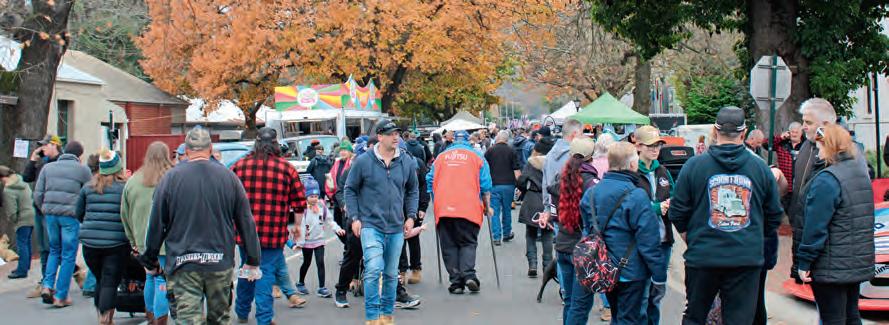
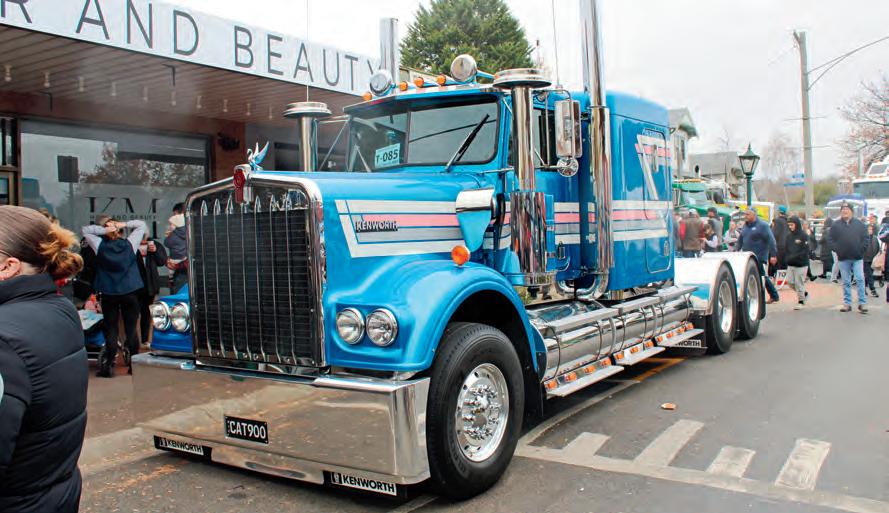

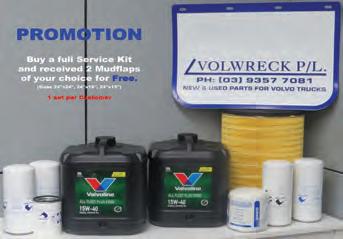
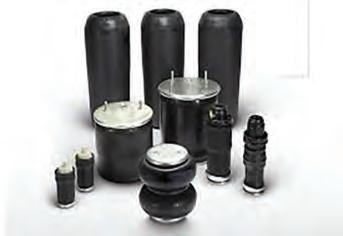
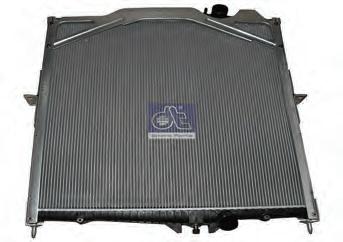
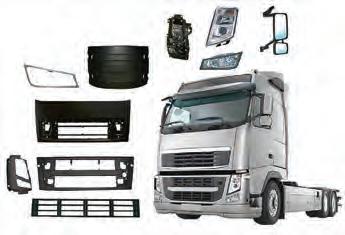



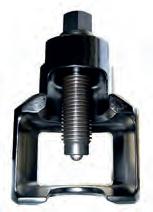

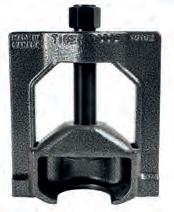
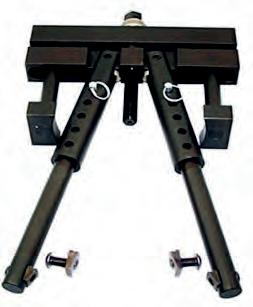

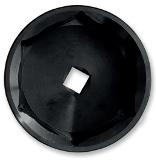
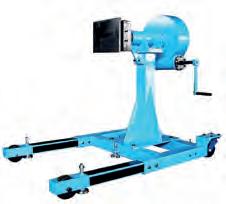

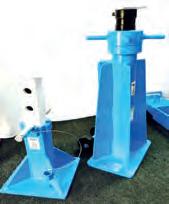
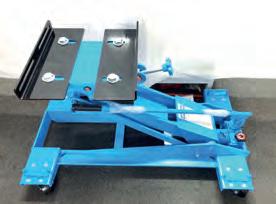
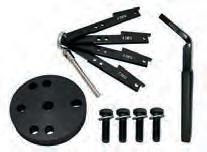


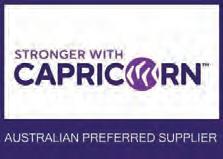
As the Easter Bunny hops his way closer, we wonder which big rig he chooses to carry his cargo. A Kenworth? A Peterbilt? Maybe it’s a special Egg-lectric Volvo
With the all the kids and family gathered, why not whip out some of these crack-ups?
Why did the Easter Bunny get a tow truck? Because his egg delivery van cracked up! What do truck drivers and the Easter Bunny have in common? They both deliver the goods all night long! What kind of trailer does the Easter Bunny use? A hopper trailer!
What do you call a truck full of Easter chocolate? A sweet ride!
There are plenty of items that are made better by double-ending them. Spatula and spoon, measuring items, you name it.

But can a double-ended truck make the list?
A dual-sided Mercedes-Benz by the name of Dumbo has been making the rounds around Adelaide recently, working on the O-Bahn, a concrete track designed solely for buses. The interesting configuration was an absolute necessity to recover buses stranded on the tracks since there’s no way to get on or off except at the ends. Could you see this rig pottering down the Hume?
As Tropical Cyclone Alfred toyed and teased the population of south-east Queensland and northern NSW last month, Aussies did what they do best and gave it right back. A “survival
“A
plan” to “blow at” Cyclone Alfred to “push it back” took off on Facebook, with over 110,000 people signing up for the event. Social media users took to posting videos of them whipping out leaf blowers, fans, hairdryers and even musical instruments. Others even resorted to making the best out of the scary situation, using the intense rain to create large mud slides for the community. Classic Australians.



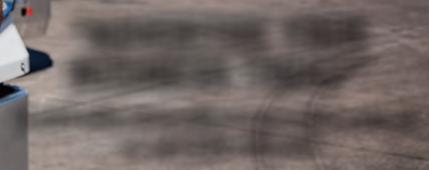

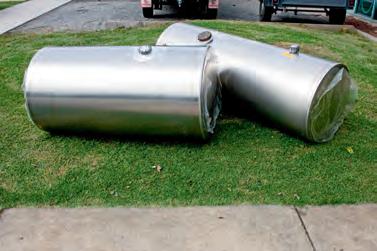
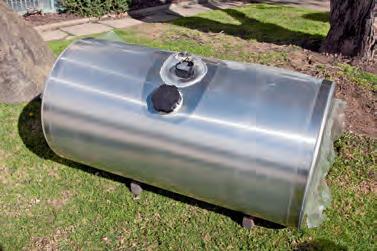
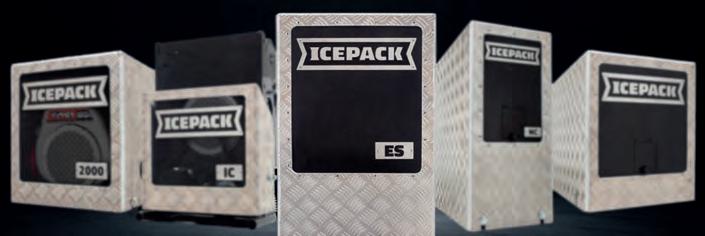







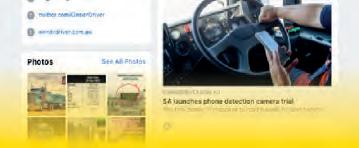








Frank Black has celebrated the recent announcement of Sydney’s first heavy vehicle rest area, to be situated in the
I’m sure many truck operators will breathe a sigh of relief to hear Sydney is finally getting its first heavy vehicle rest area in Eastern Creek in the western suburbs. For years, there has been nowhere to stop between Wyong and Pheasant’s Nest, which is approximately a threehour drive in heavy traffic (with the exception of BP Eastern Creek, where it’s very hard to get a park, if at all).
Significantly, this is a joint investment by the NSW and the federal governments working together, with both governments footing the bill, each contributing $40 million towards the construction. At six hectares squared, this is a significant footprint, which demonstrates how committed the state and federal governments are to looking after truck drivers.
You’ve got to give the NSW government their dues as they initiated and drove
this proposal, while hearing from drivers about what was needed. This was their election commitment, which they have honoured, no doubt pleasing many truck drivers who work or travel through the area. The NSW government has acquired the land already and the position couldn’t be better, as it’s close to major transport roads, as well as industrial. This is ideal for drivers transporting goods between Victoria and Queensland, or into and out of Sydney.
I was part of a group of truck drivers, including members from the Transport Workers’ Union, who also contributed to the development. No one knows the needs of the freight industry better than drivers and you cannot understate the importance of feedback from actual members of the industry. We have a stake in managing fatigue as it’s our lives on the line, as well as other road users, not to mention the taxpayers footing the

bill, so everyone benefits from getting this right.
This rest area is proposed to be a modern up-to-date construction with facilities for showering, secluded bays for sleeping and shaded areas for stretching our legs. Other state governments could take a leaf out of the NSW government’s book and also invest significantly in rest areas, either with or without federal government funds. After all, the impact of the freight industry isn’t just limited to the broader national economy, but to businesses and consumers within individual states and territories. The choice of Eastern Creek is an important one as the western suburbs is a key industrial hub and it’s only five minutes from the M7 and 10 minutes from the M4.
Other Australian cities could probably find equivalent areas close to industrial hubs or key transport areas which could be ideal for similar constructions. For example, in South Australia, the northern suburbs would be a prime location for a rest area given the huge amount of freight that runs through that area and the level of industry that is based there. In Brisbane, the Larrapinta area could possibly be a good choice for the same reasons. In Melbourne you may need to have two rest areas, one either side of the city, to accommodate the different freight routes that service the area.
“Far too many truck drivers have fallen victim to fatigue – the NSW government revealed a 47 per cent rise in fatal fatiguerelated crashes in 2024.”
Importantly, there will be separate bathroom facilities for men and women, which I’m sure many female truck operators will appreciate. The Western Sydney Heavy Vehicle Rest Area Engagement Report also cites feedback that the safety of female truck drivers was a priority in the proposed construction, with extra lighting, surveillance and pathways factored in. With more women entering the trades, it’s only reasonable we become more accommodating as an industry and us blokes know what happens when the maintenance of facilities for truckies goes by the wayside.

Far too many truck drivers have fallen victim to fatigue – the NSW government revealed a 47 per cent rise in fatal fatigue-related crashes in 2024. No driver wants to drive fatigued but supply chain pressures are constant. That’s why initiatives like these rest areas, along with others to address the root causes, are so important. By putting their money where their mouths are, our state and federal governments are making tangible decisions that can curb fatigue-related truck fatalities and they should be commended for that.
We should feel quite optimistic about the focus on our safety, given state and federal investment in rest areas, including those getting developed on the back of the Heavy Vehicle Rest Area Initiative, led by Senator Glenn Sterle, a former truck driver himself. When you combine this with the road transport section of the Closing Loopholes legislation and the applications put into the Fair Work Commission to make our industry safer, I think it’s fair to say we’ve come a long way towards having a safer freight industry. There’s always more to do, but these are important steps in the right direction, which will make our industry safer for future generations of drivers.








A SUPERLOAD CAN WEIGH UP TO 700 TONNES! THAT'S MORE THAN 583 GIRAFFES!

SO, WHEN APPROACHING A SUPERLOAD, SLOW DOWN AND FOLLOW DIRECTIONS FROM PILOT AND ESCORT VEHICLES.

